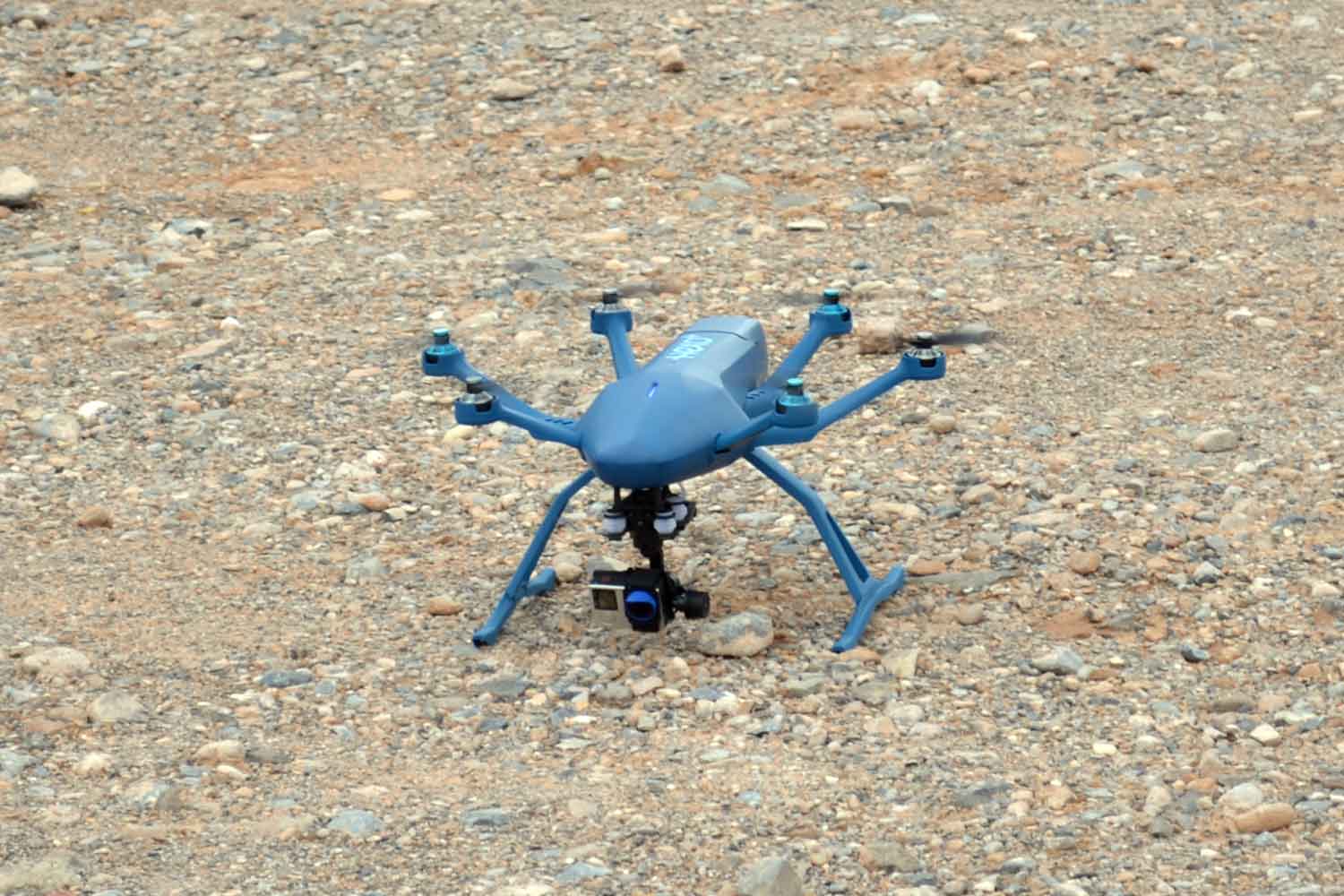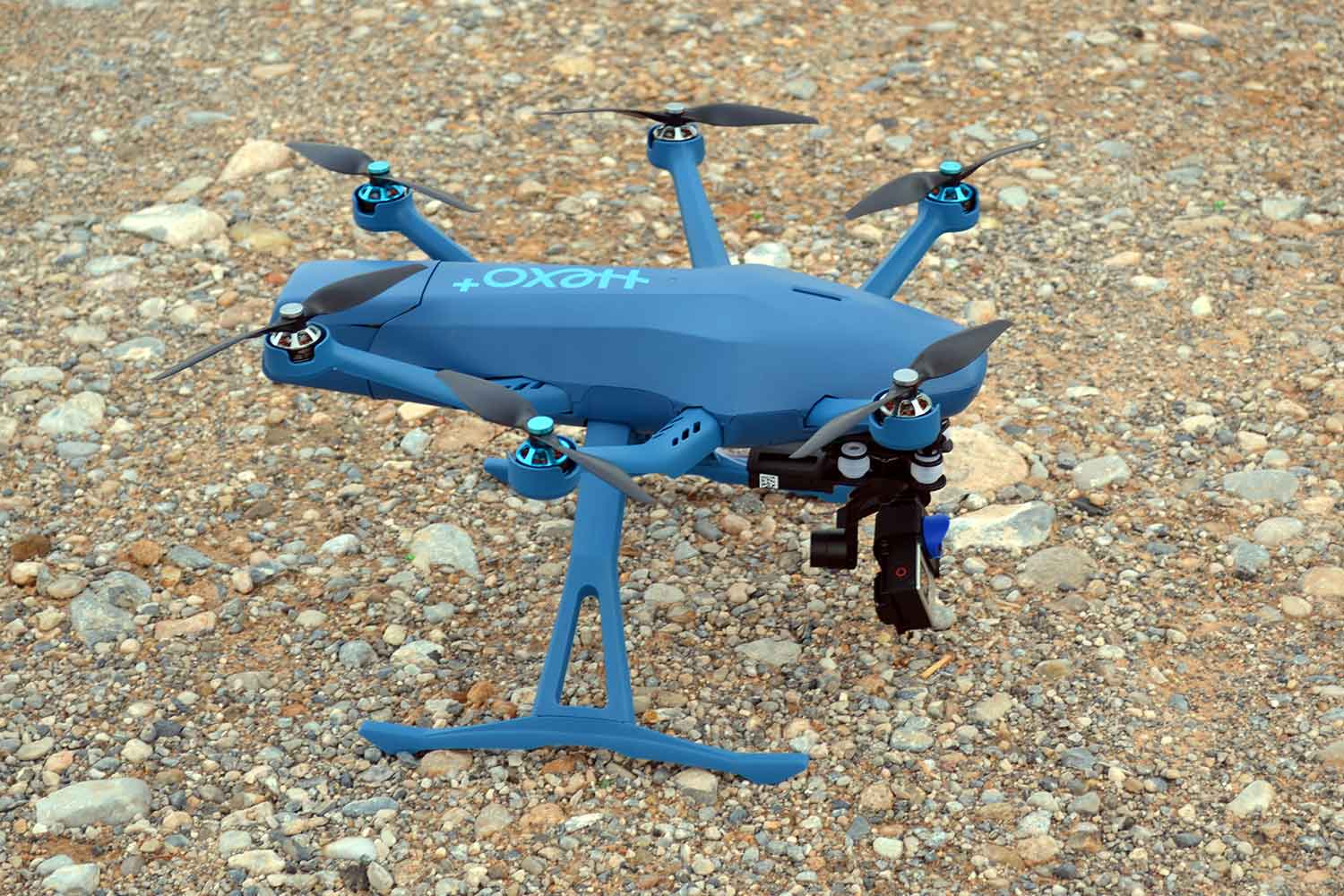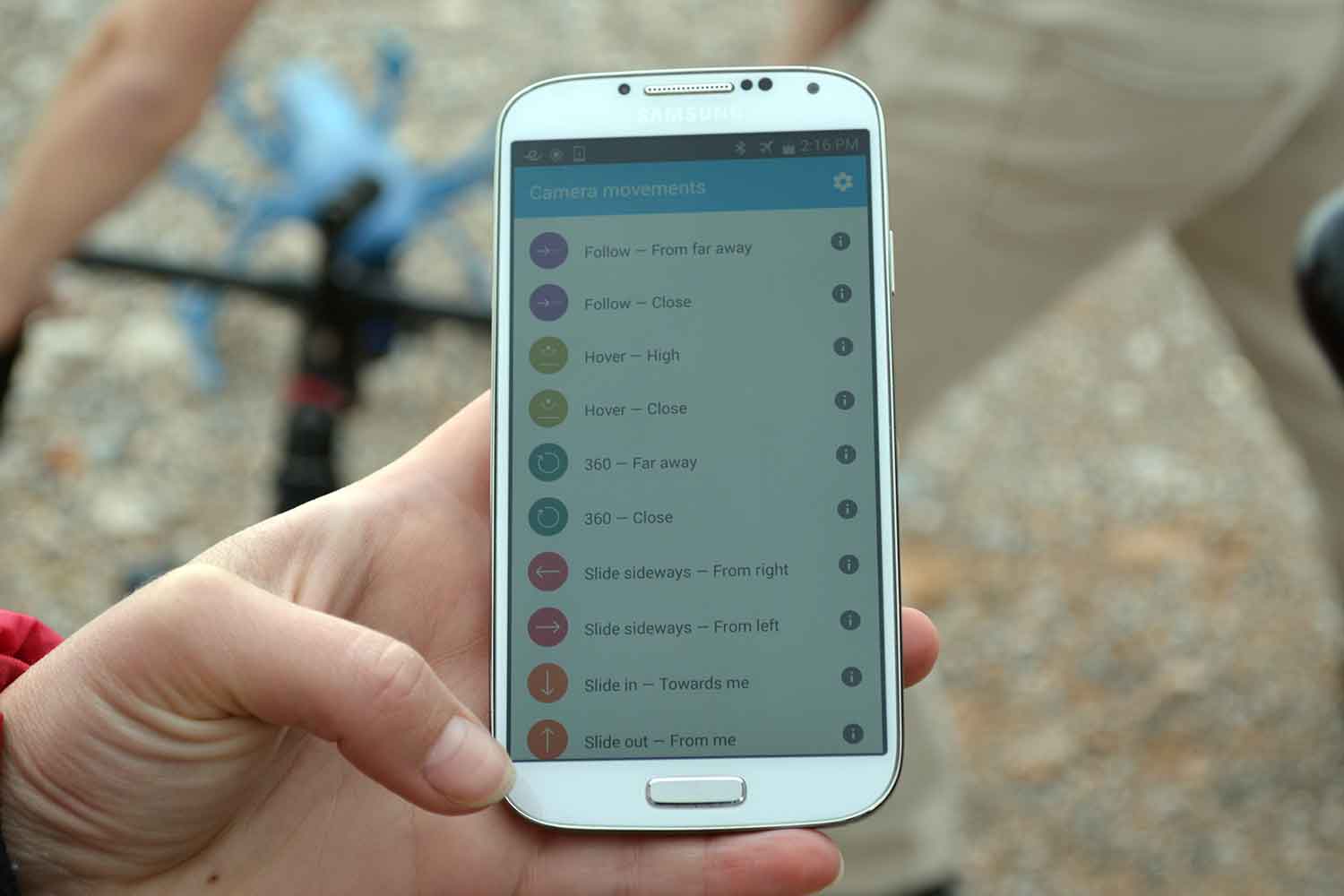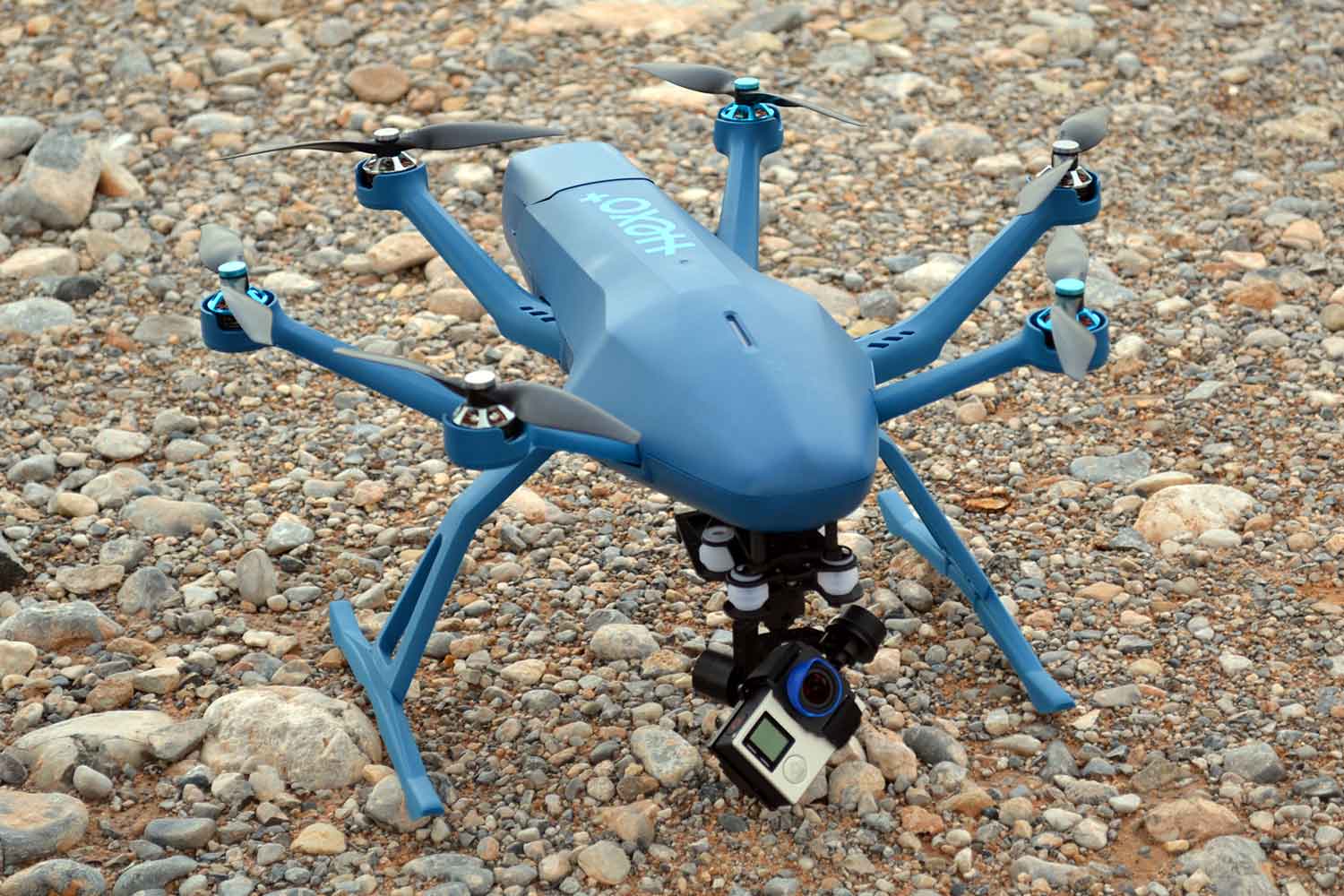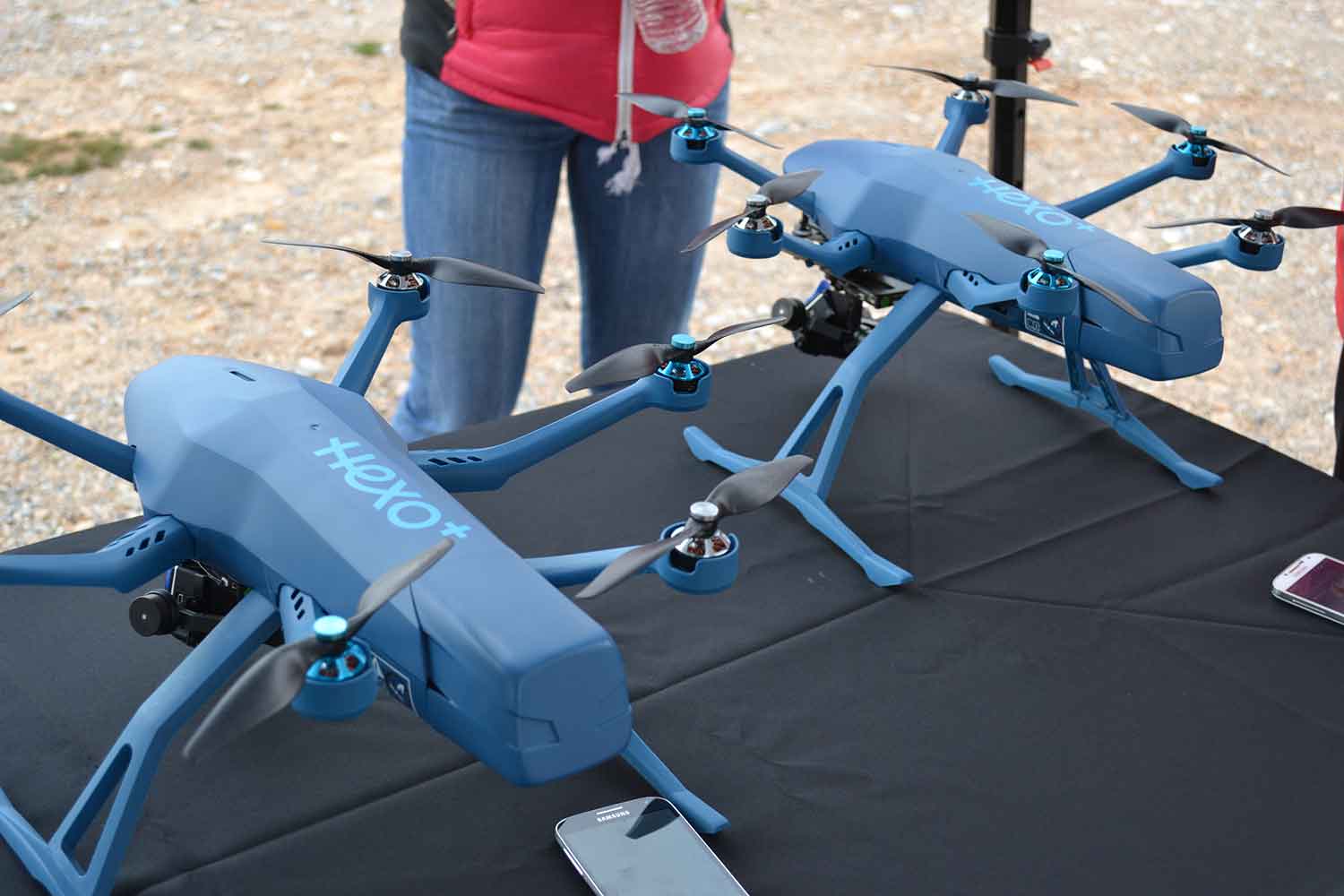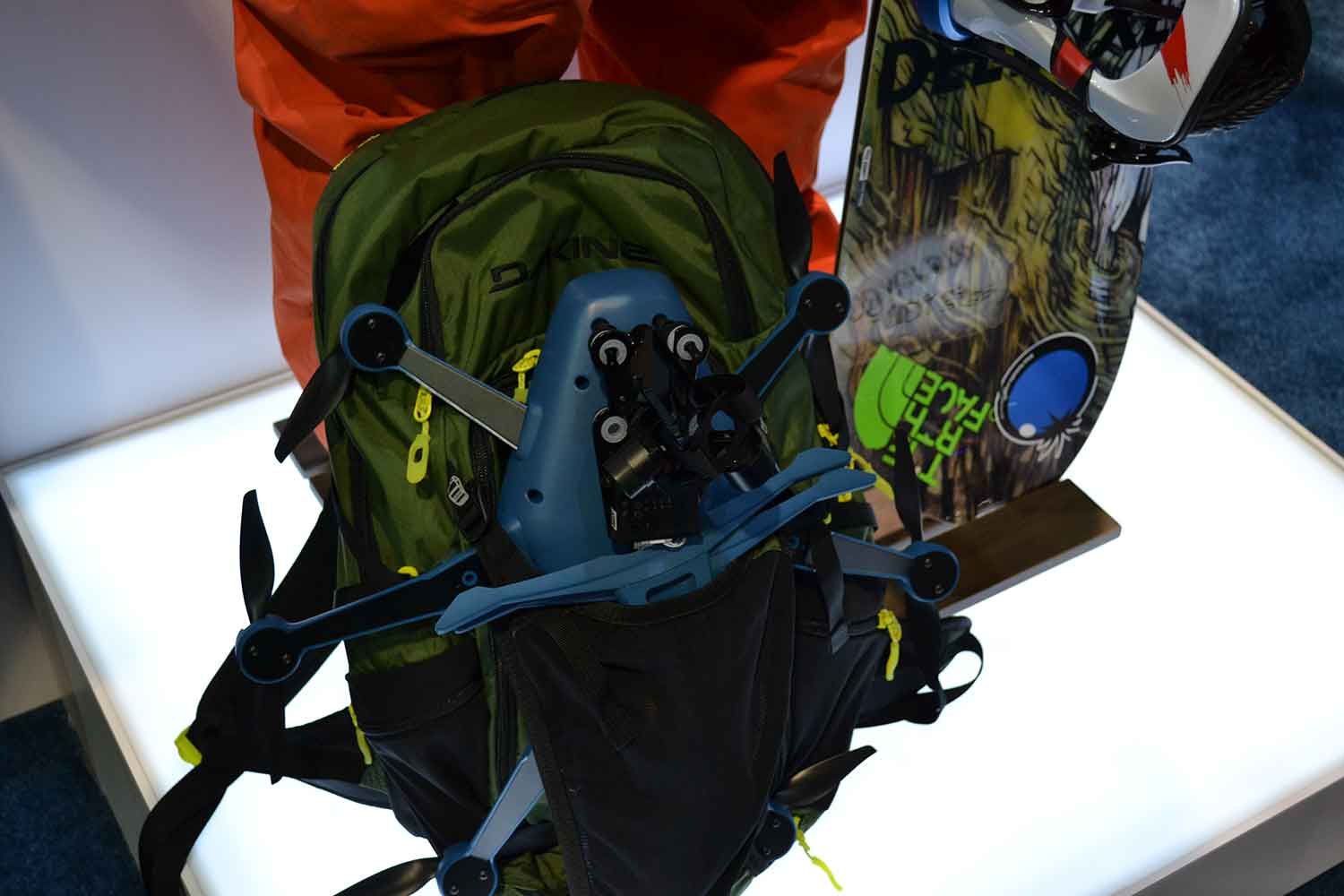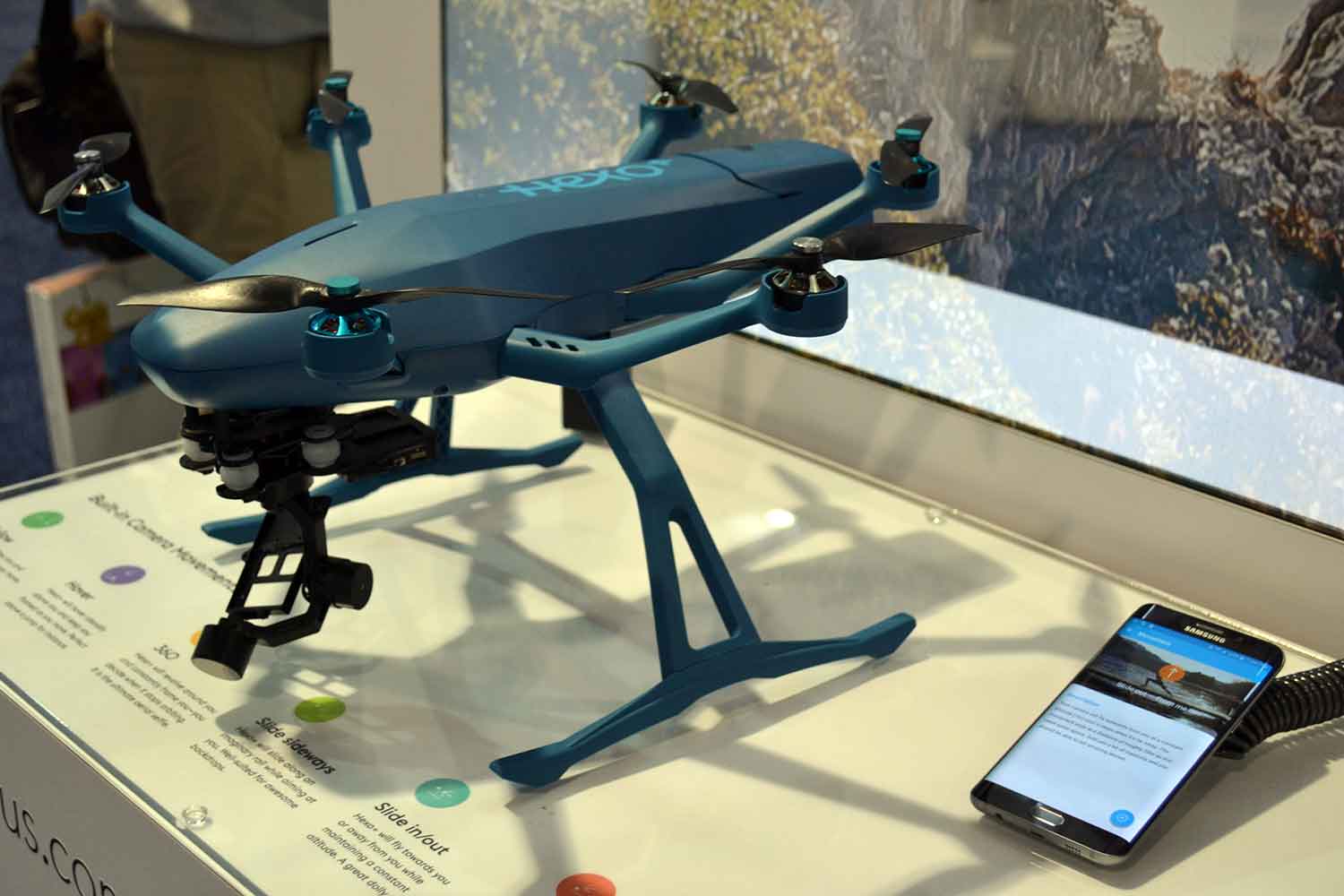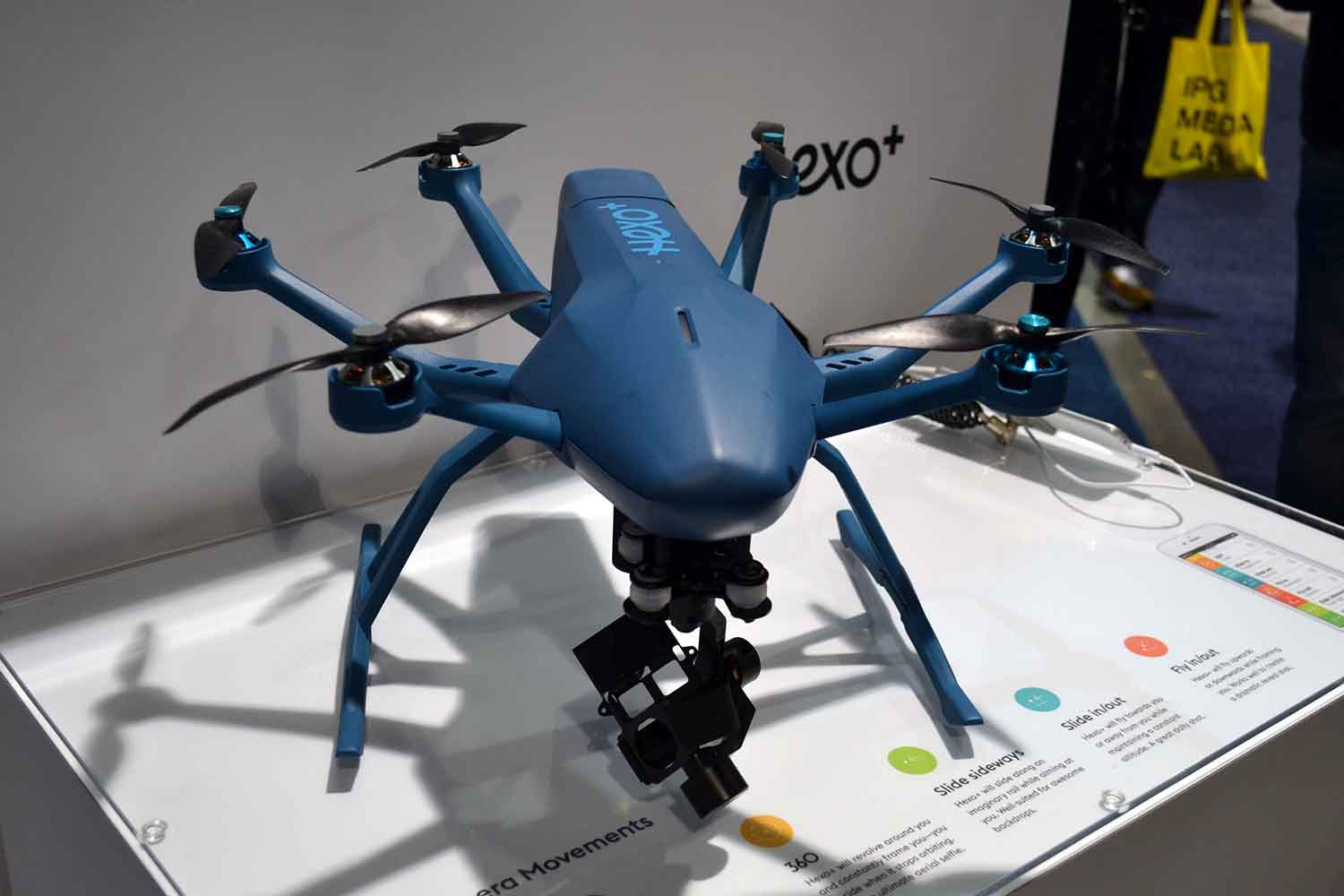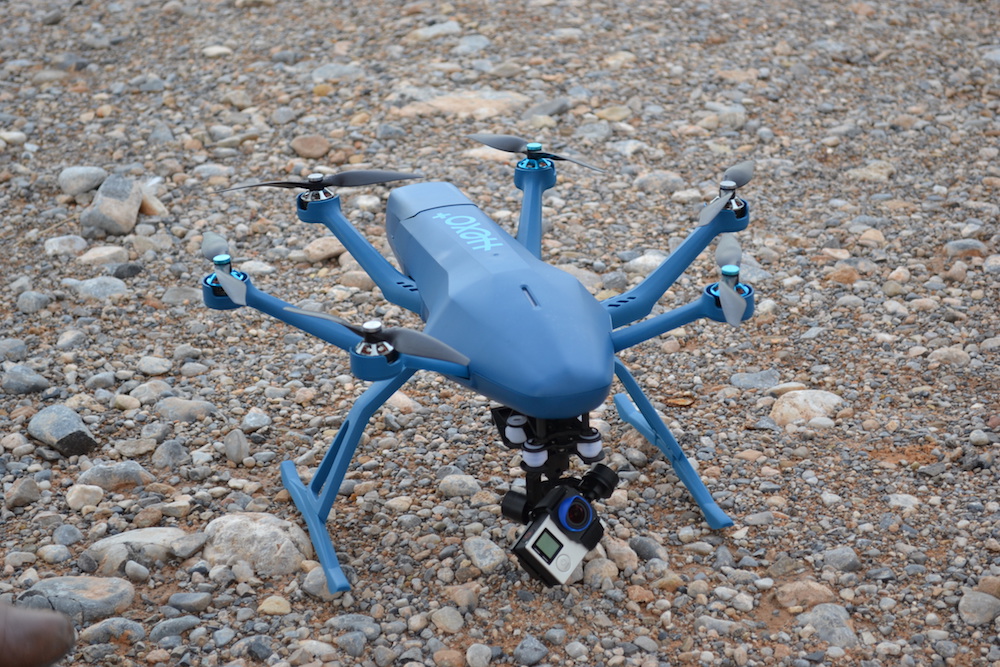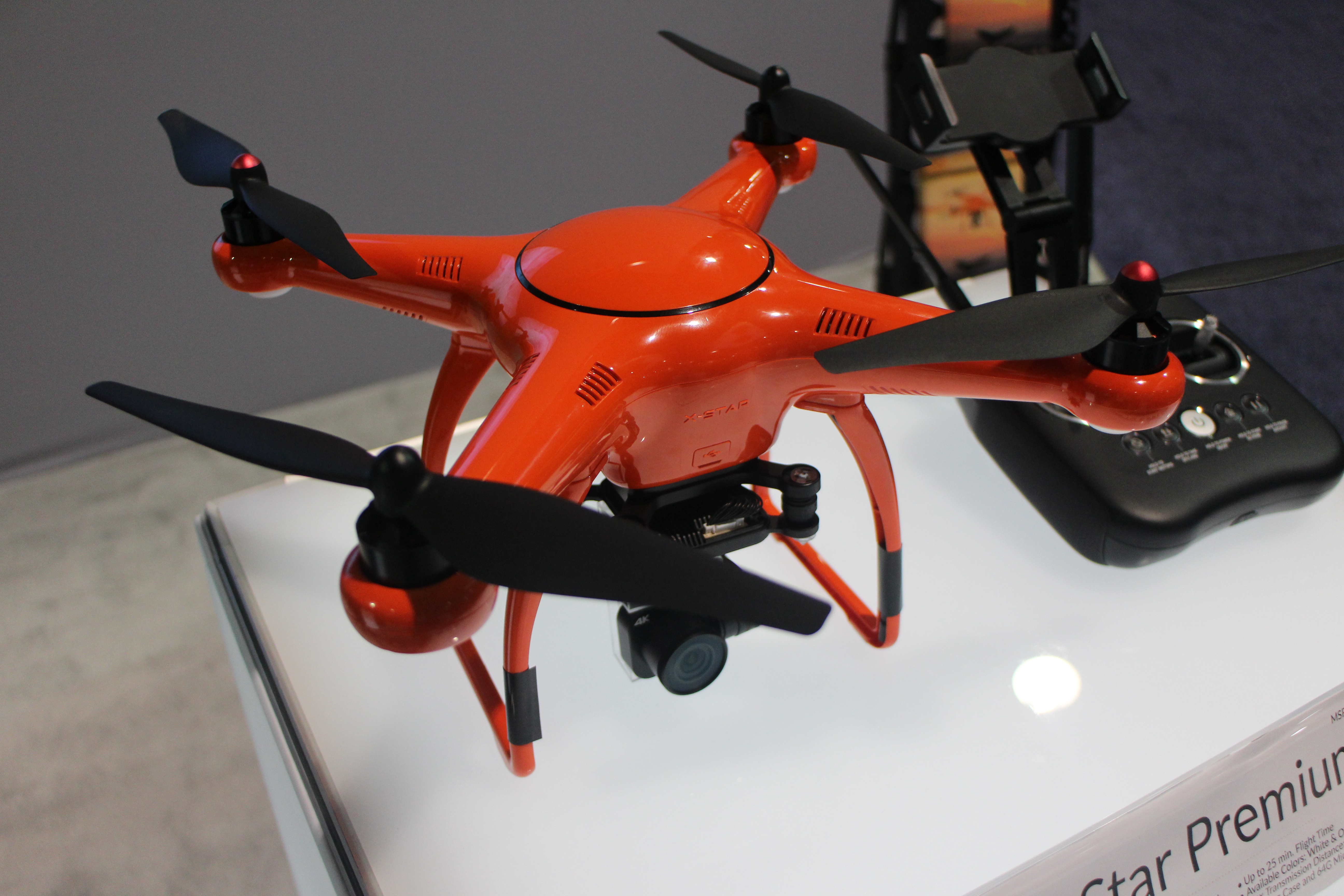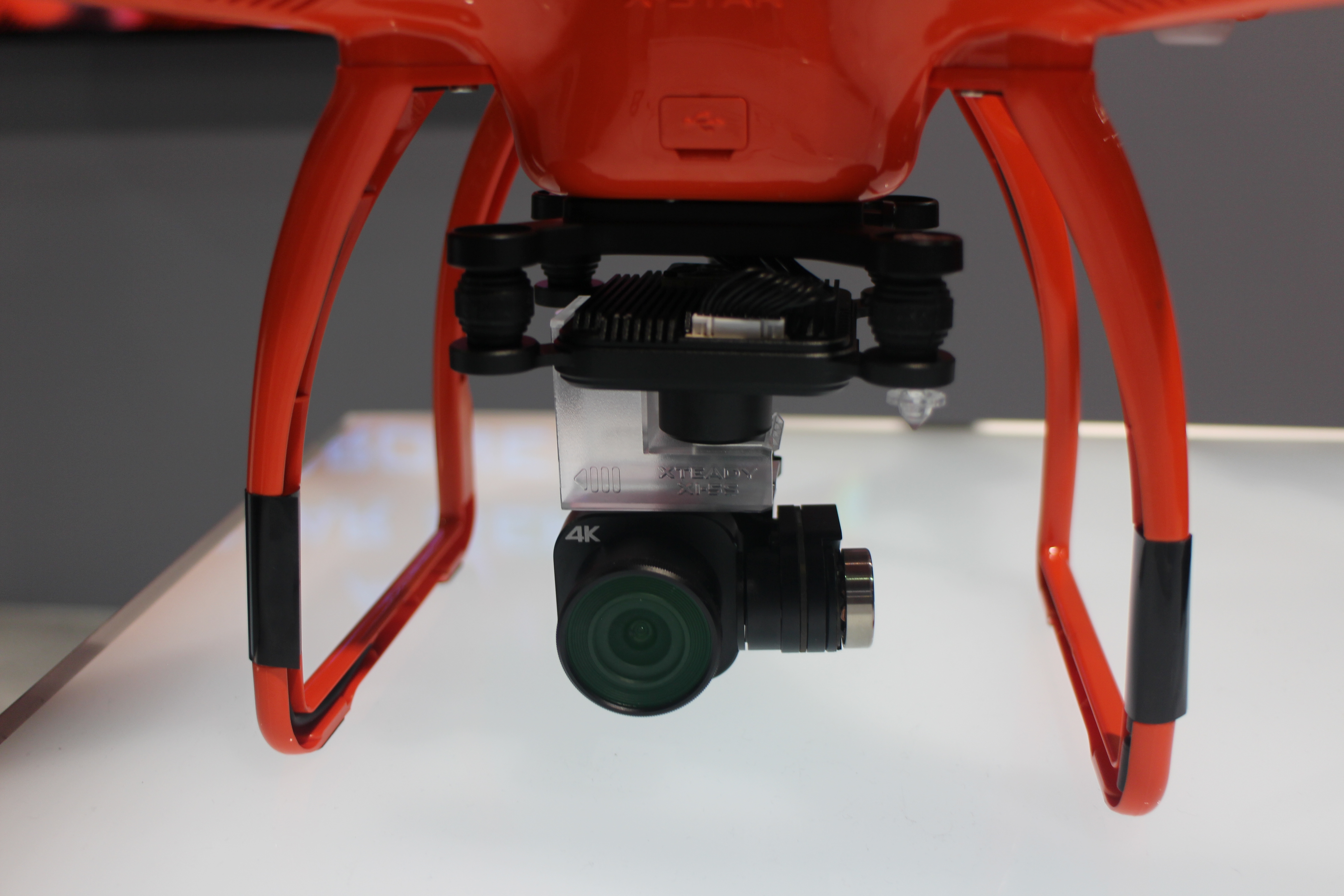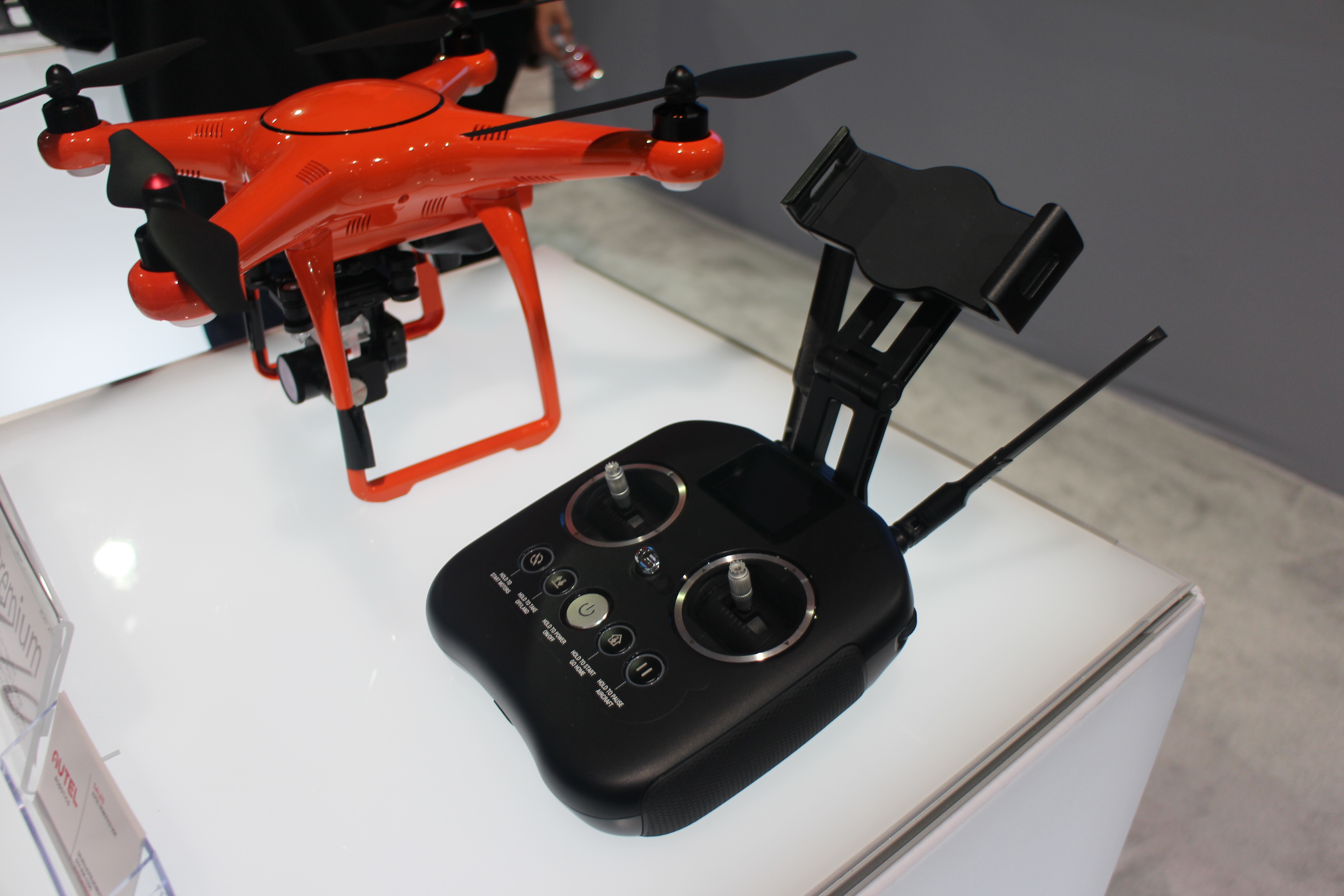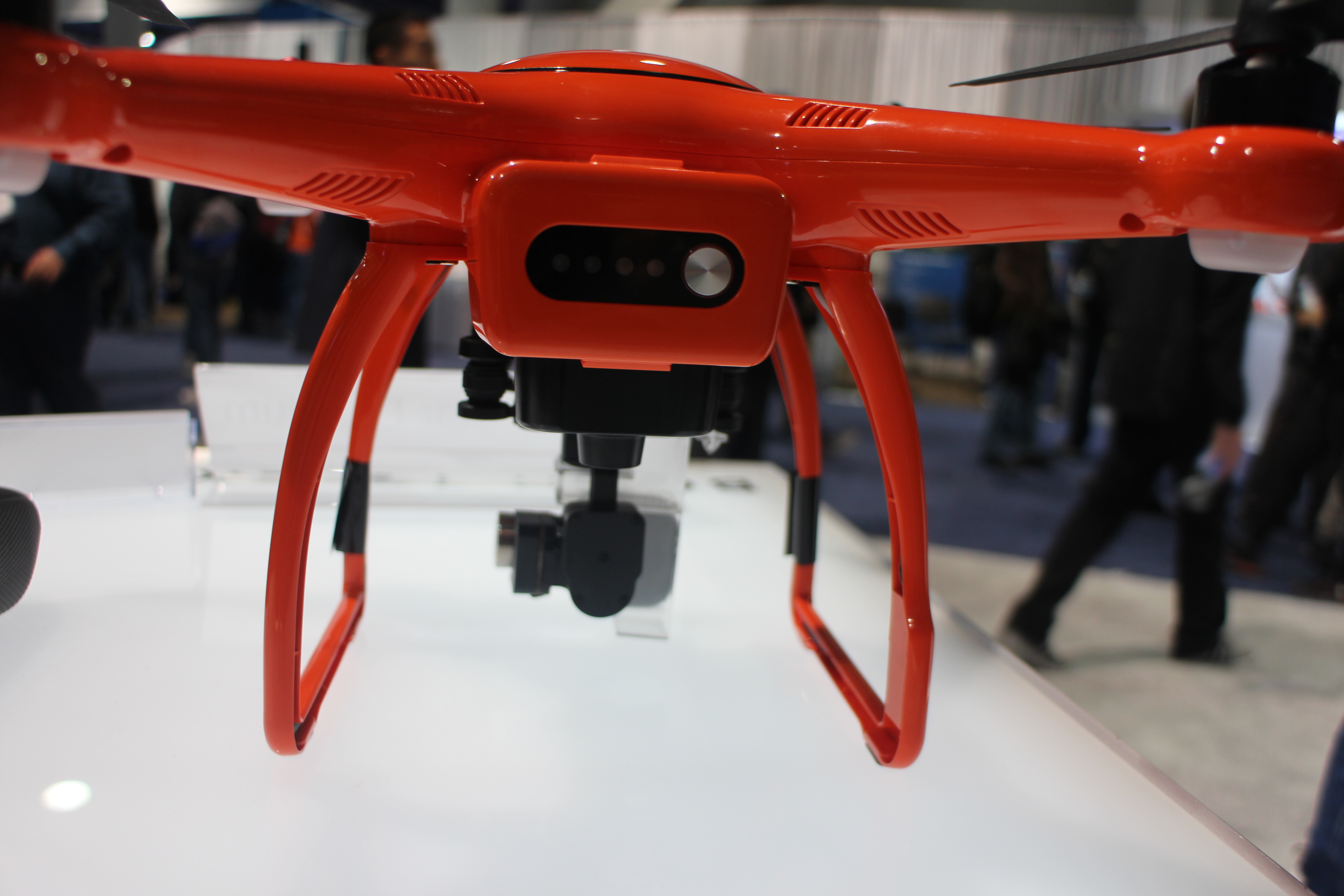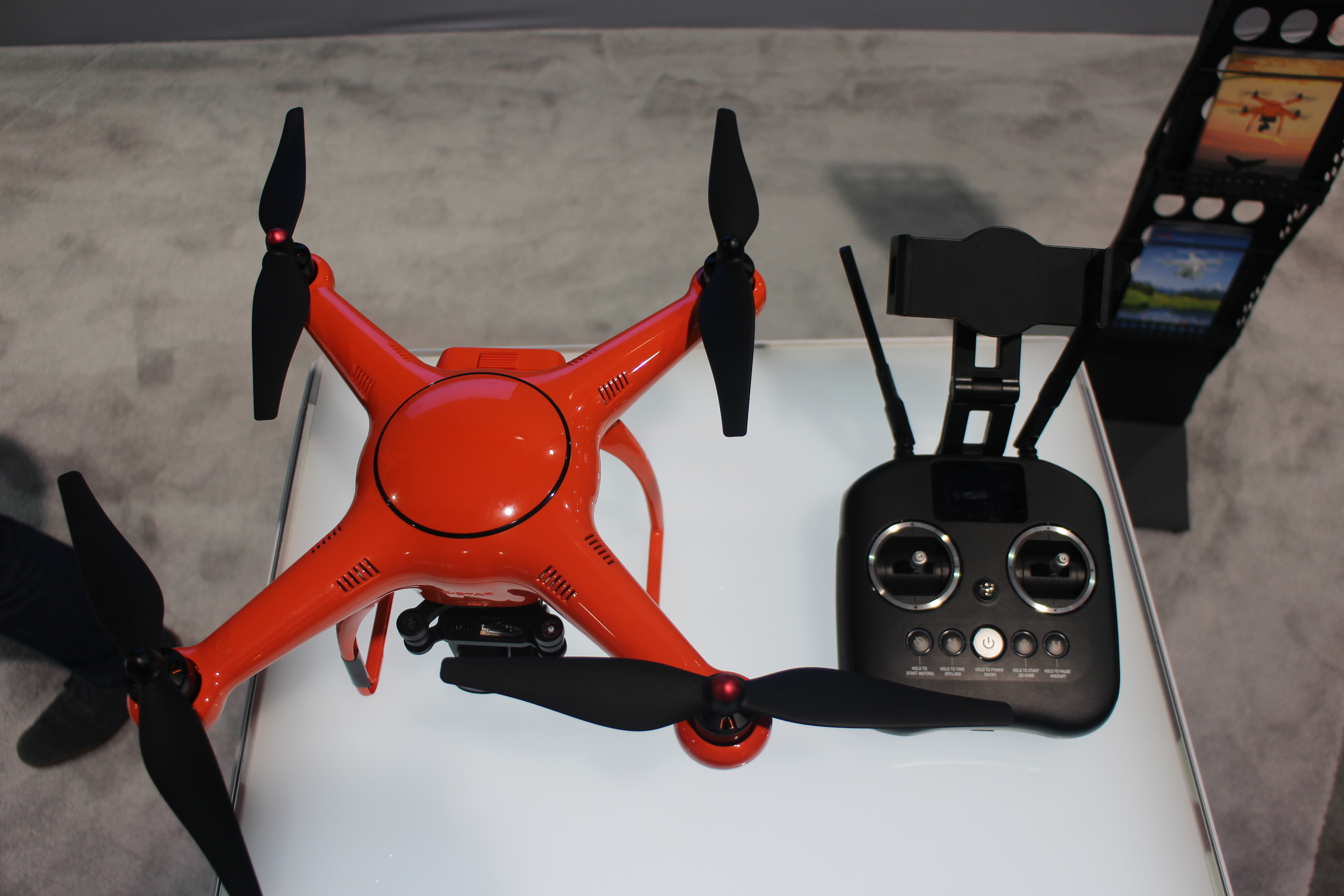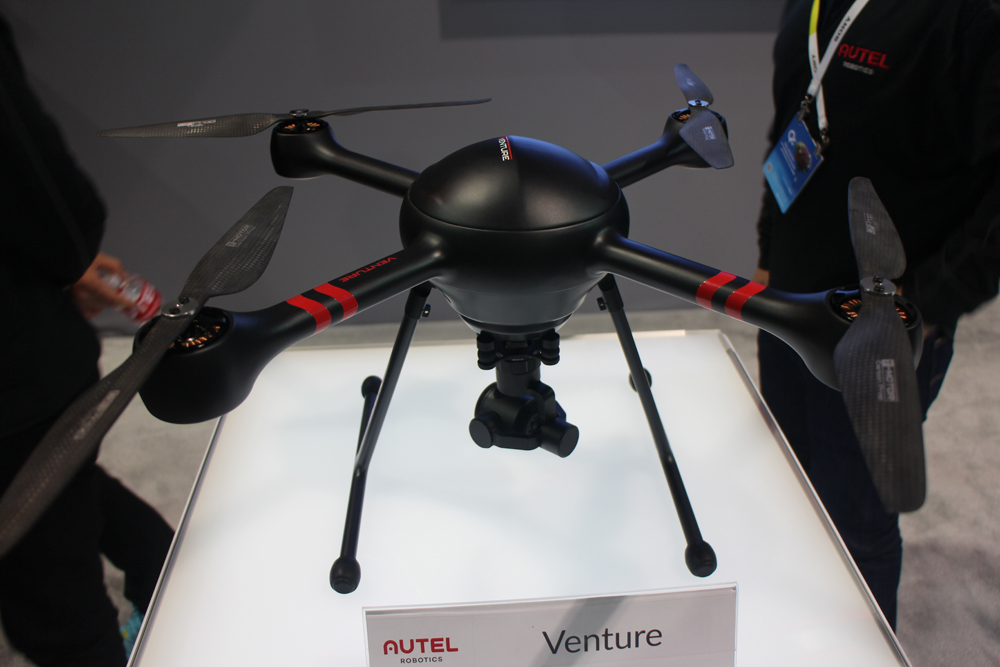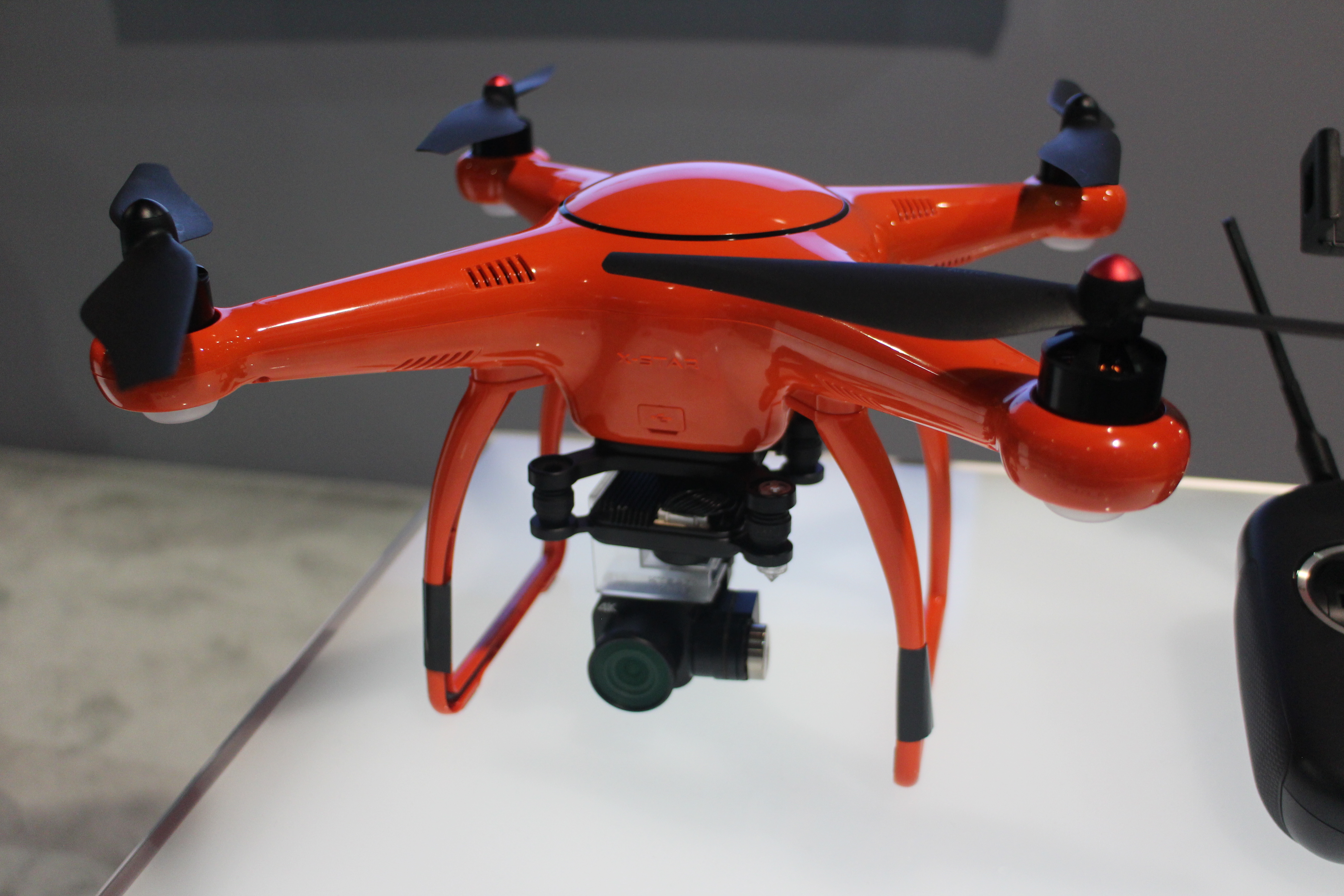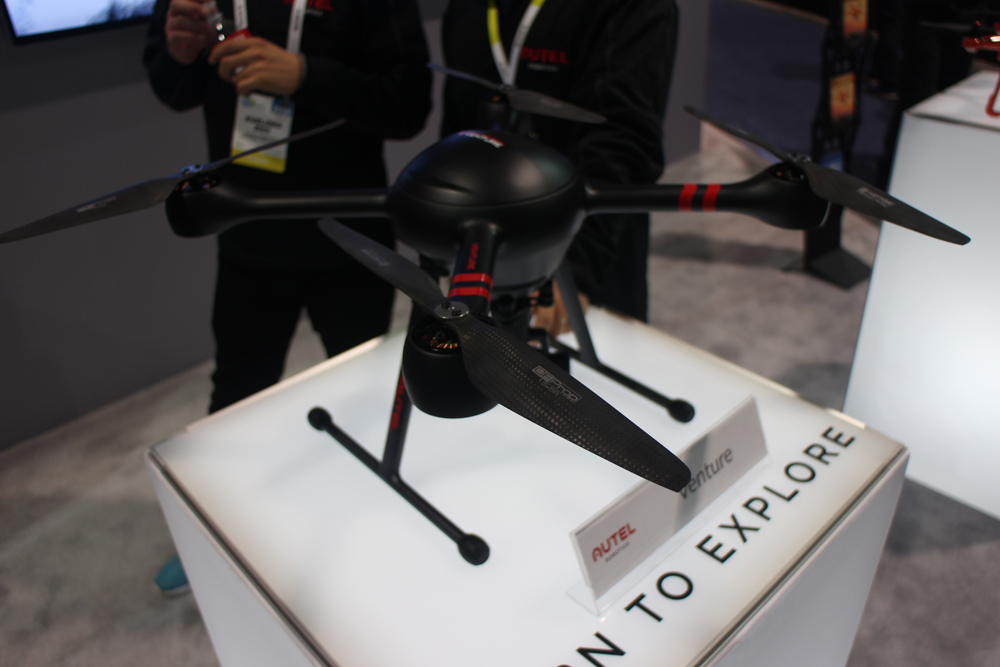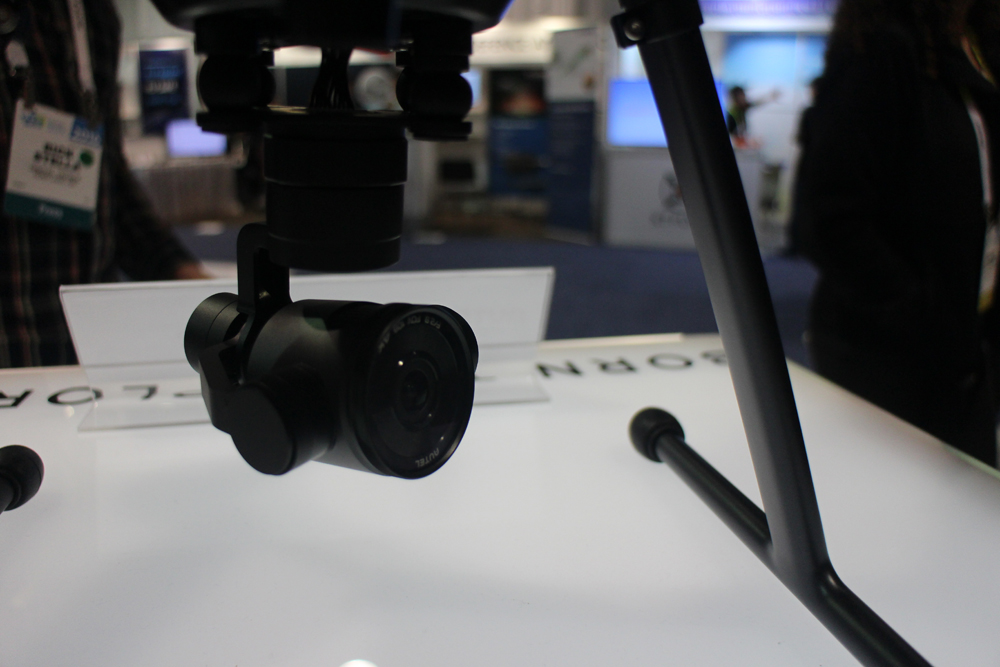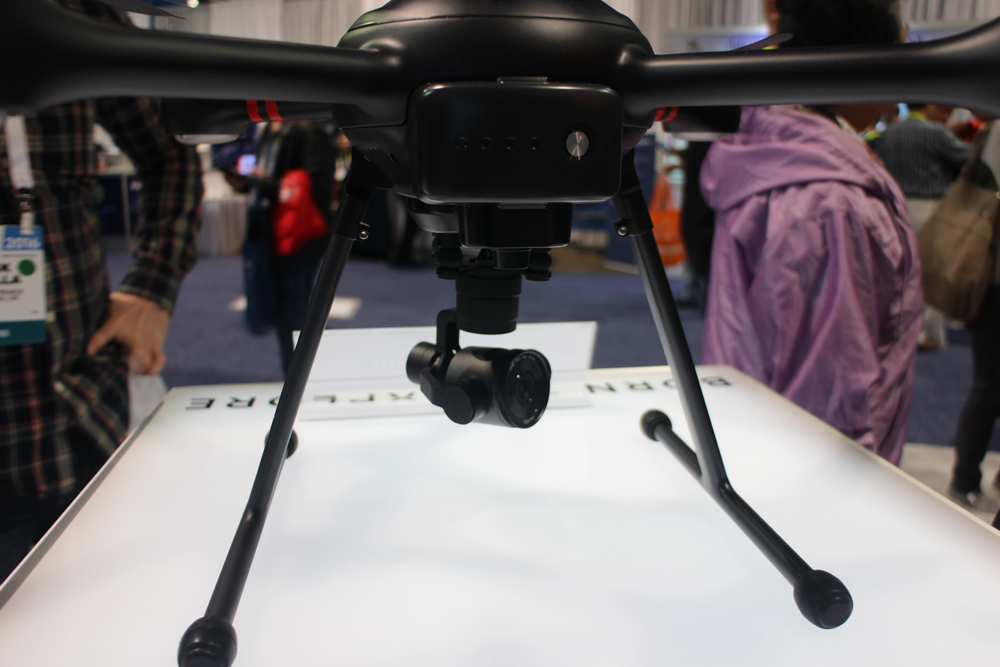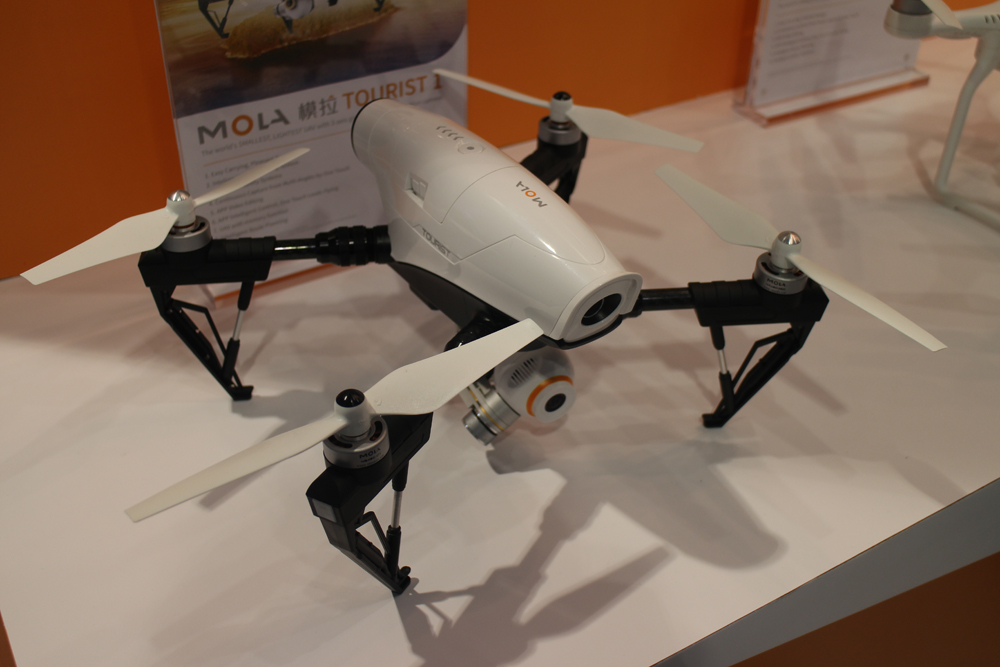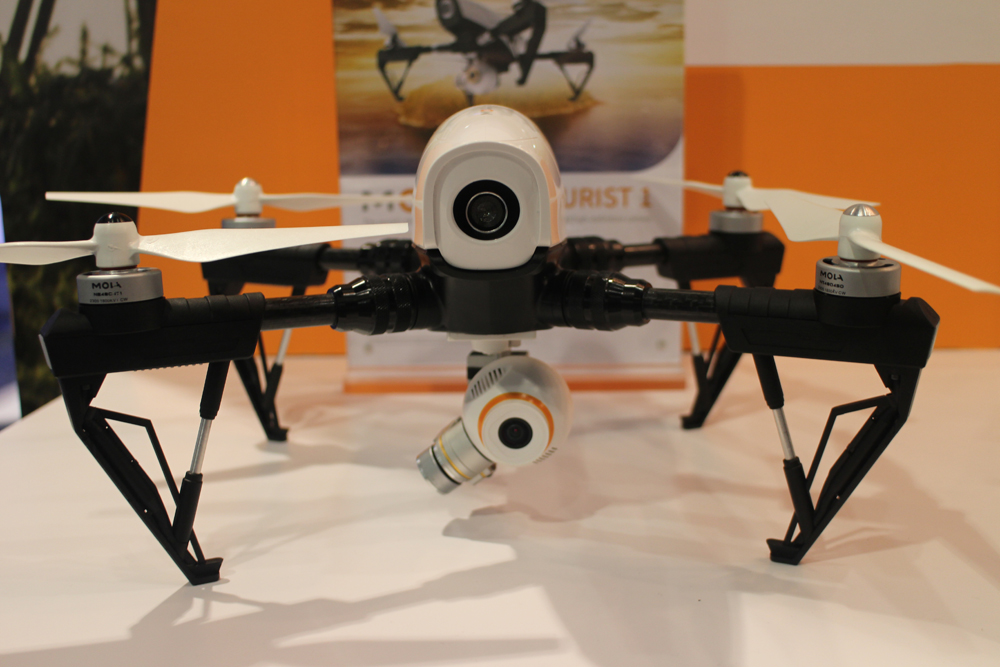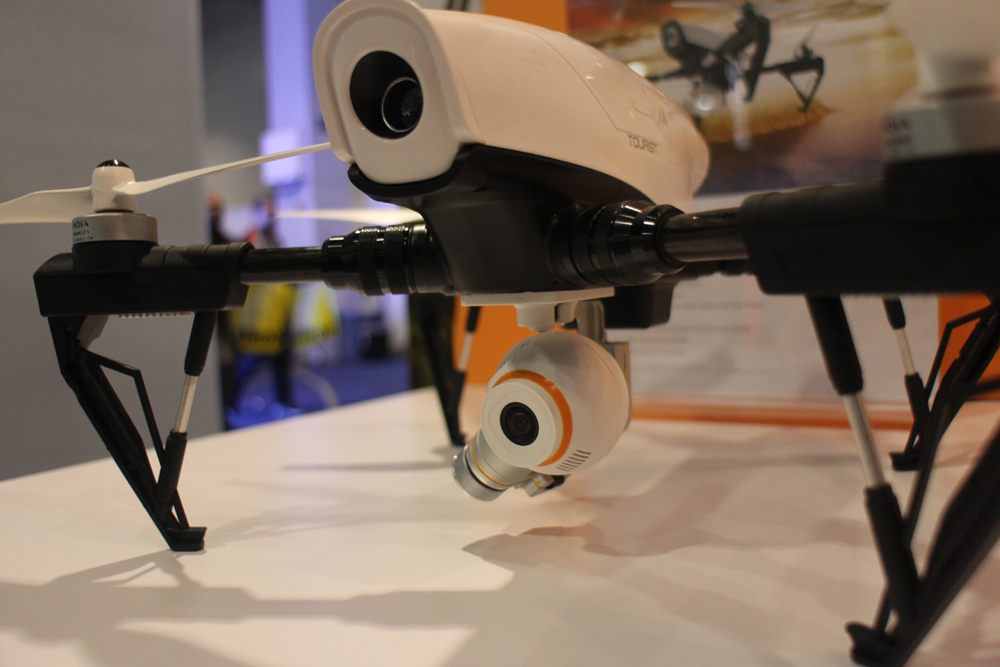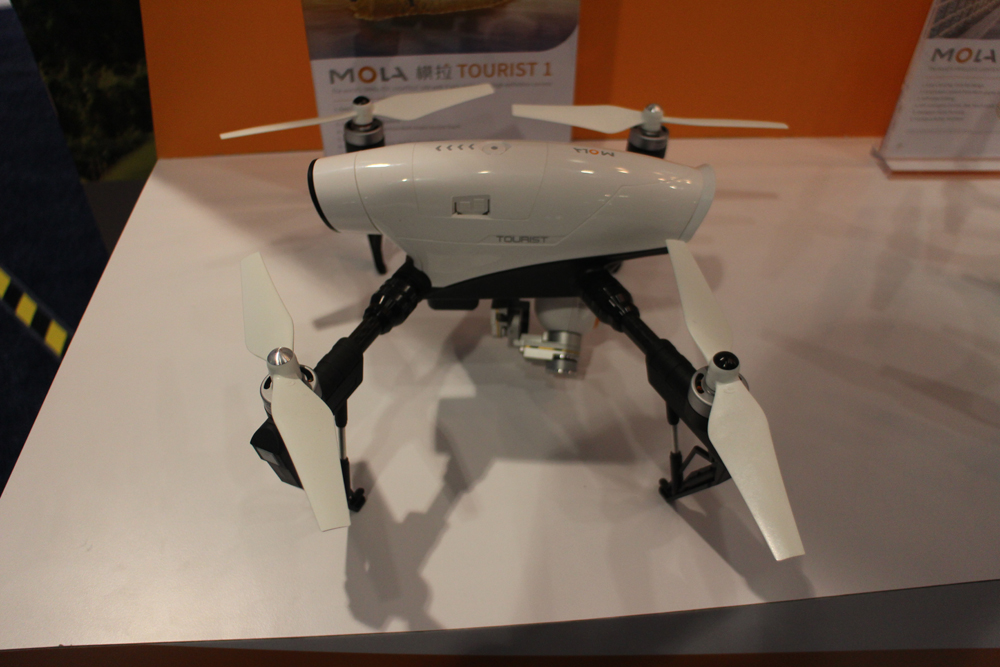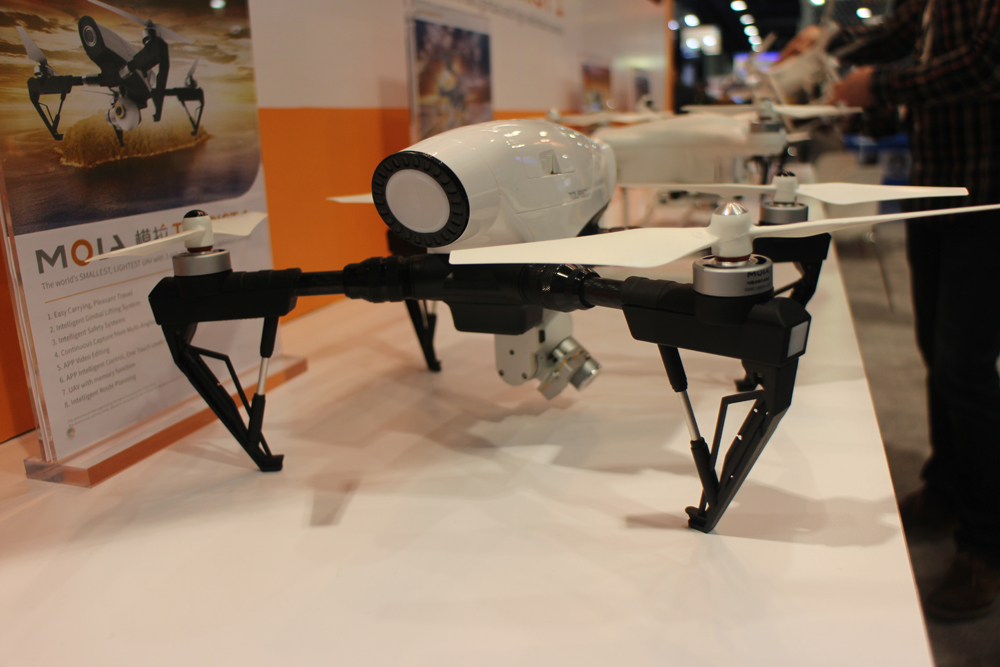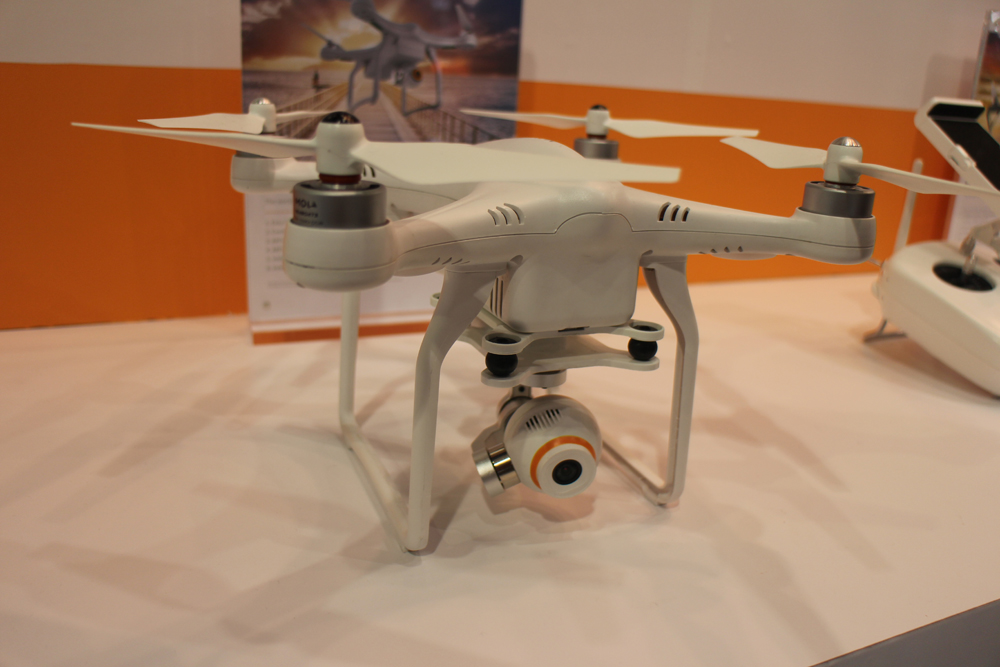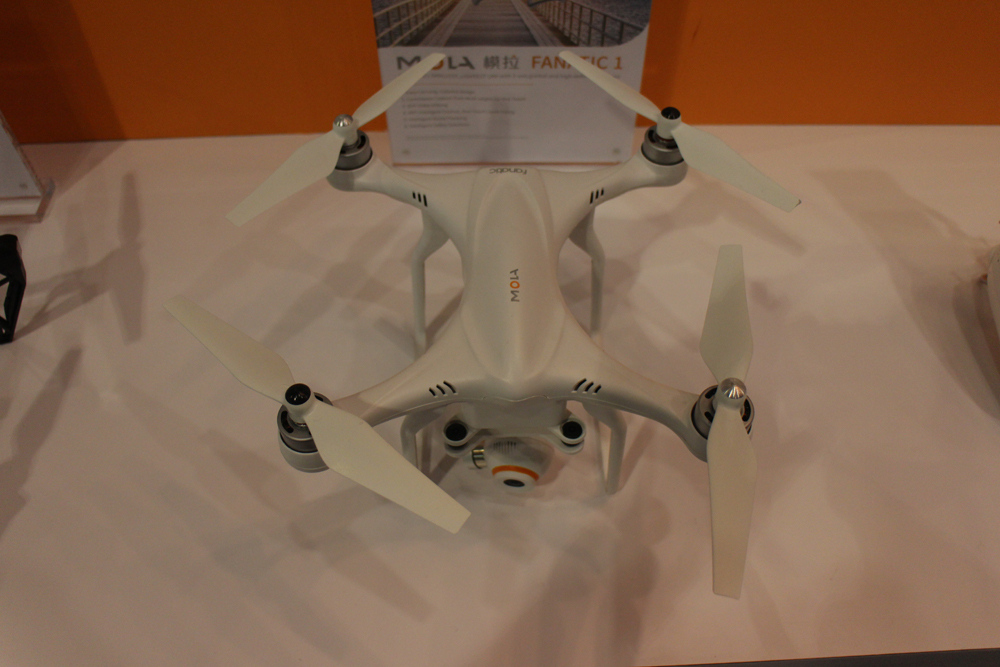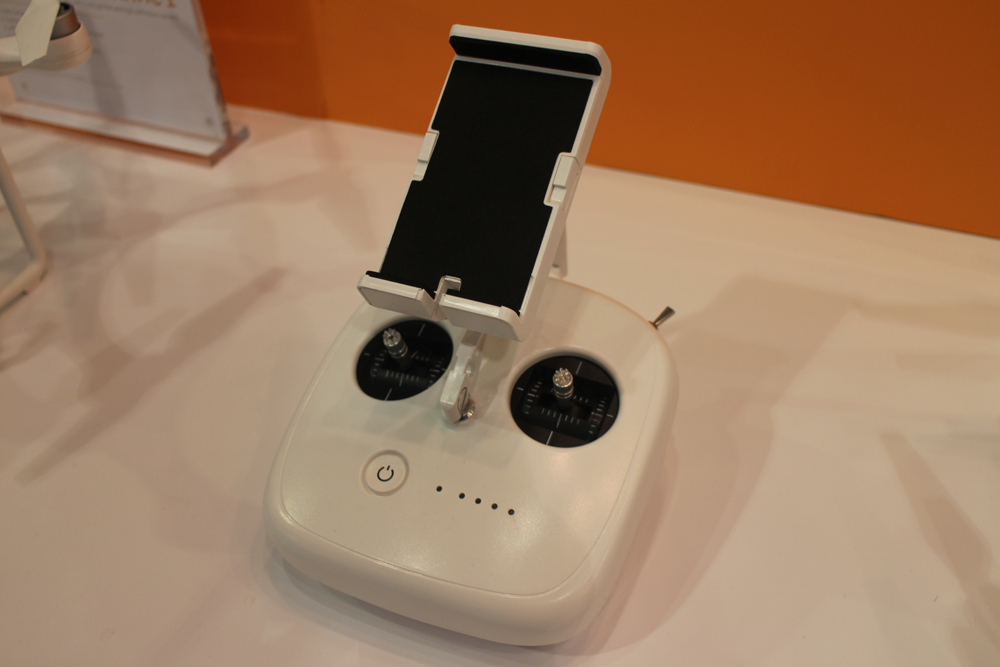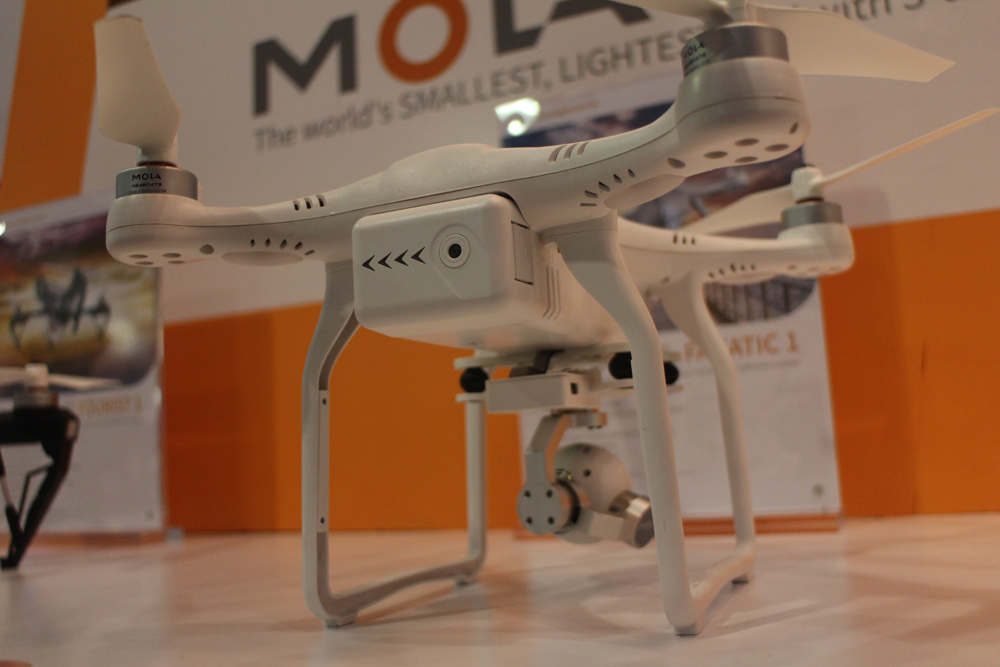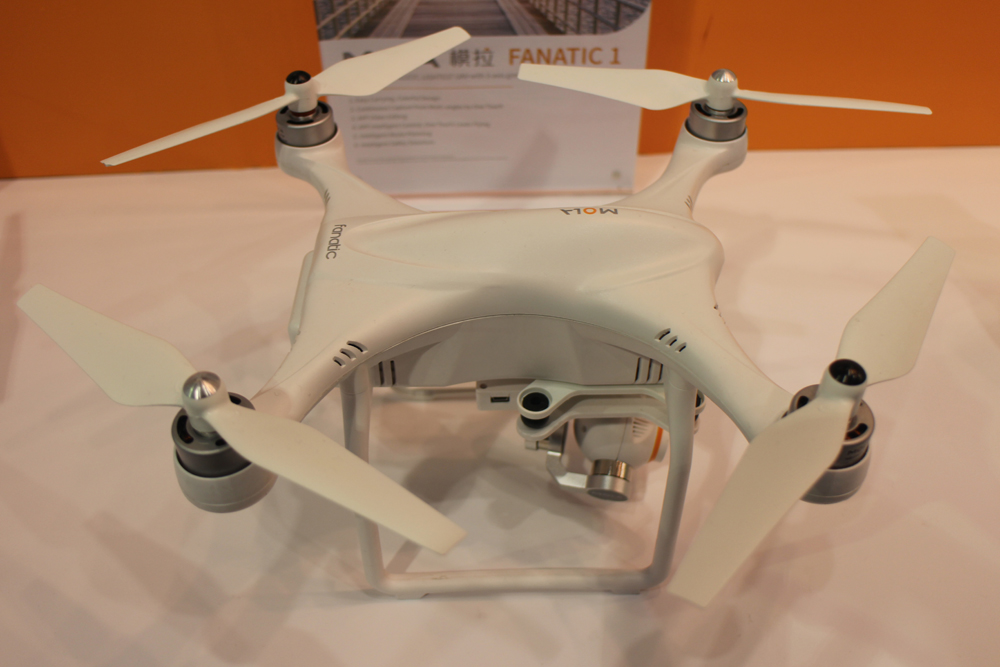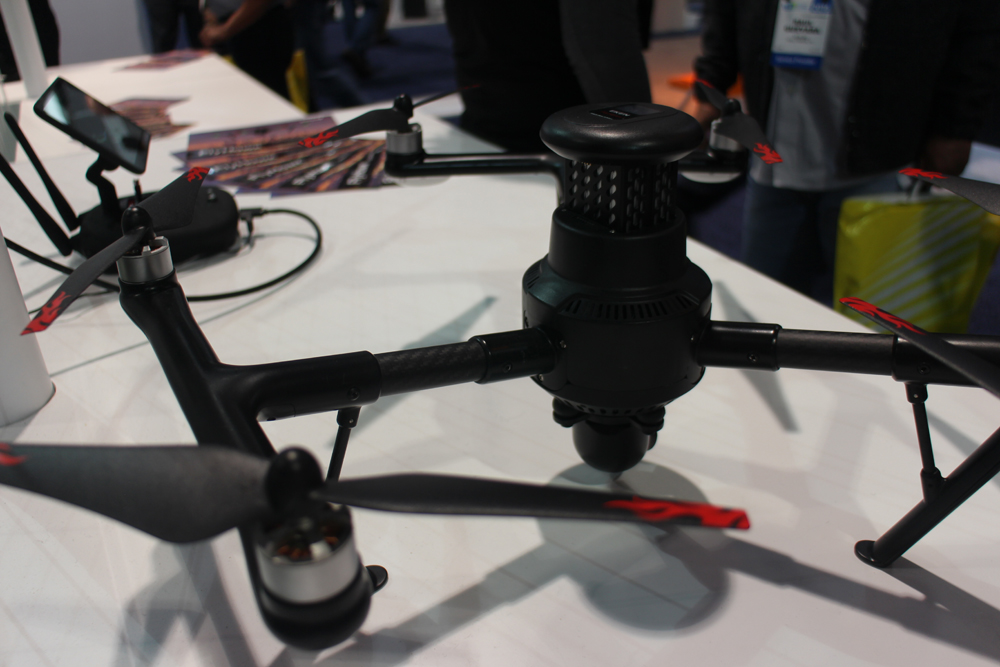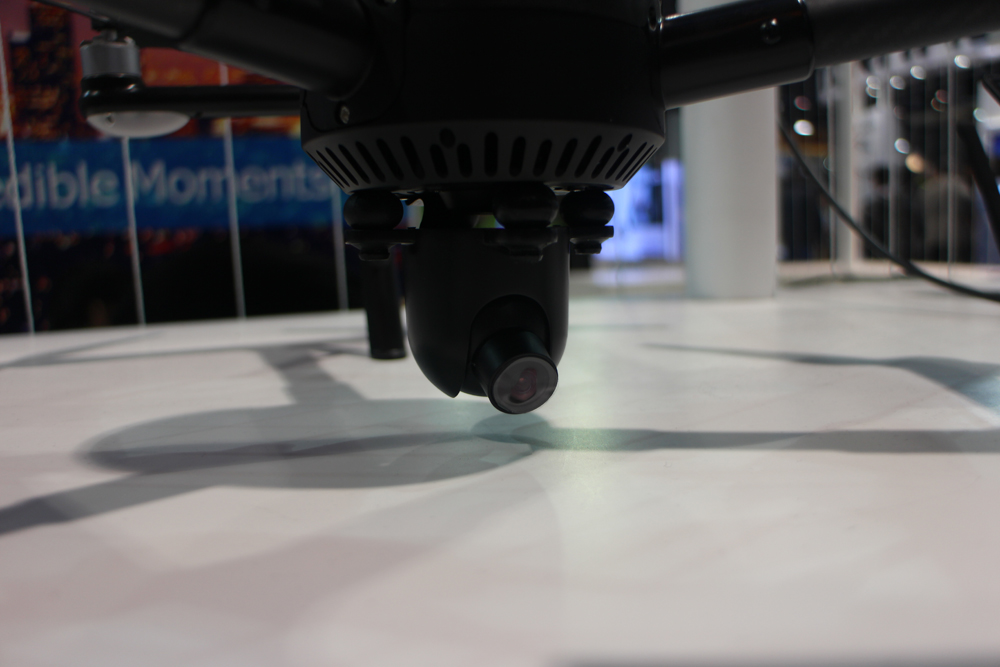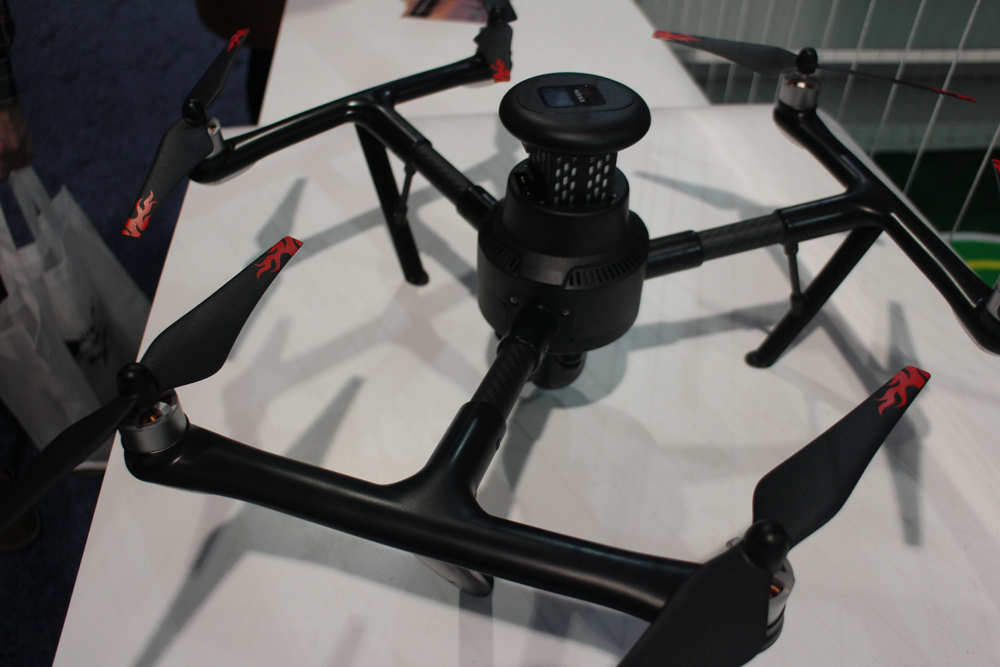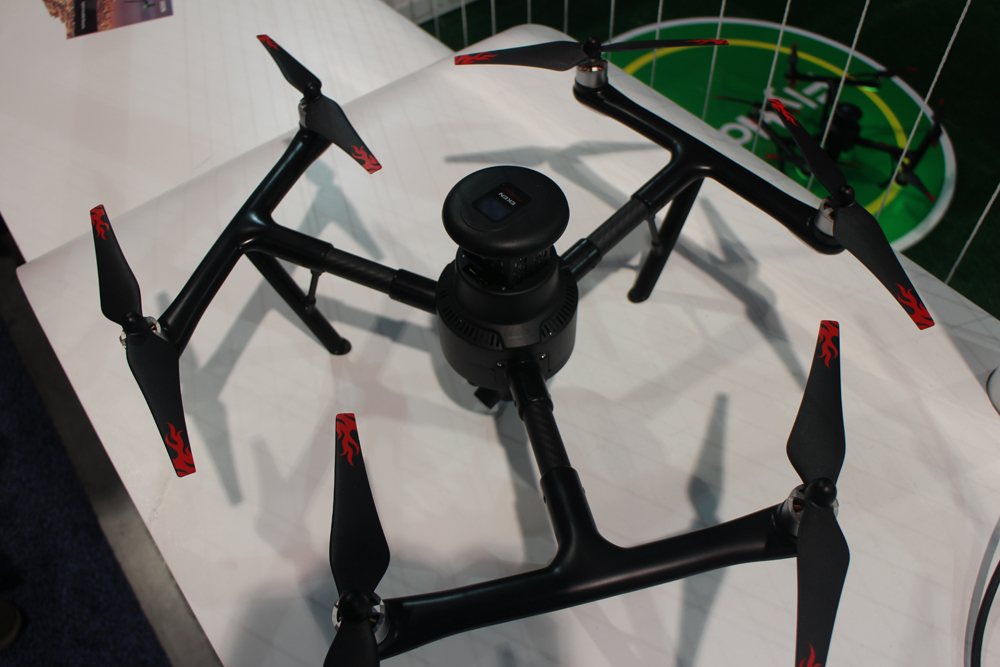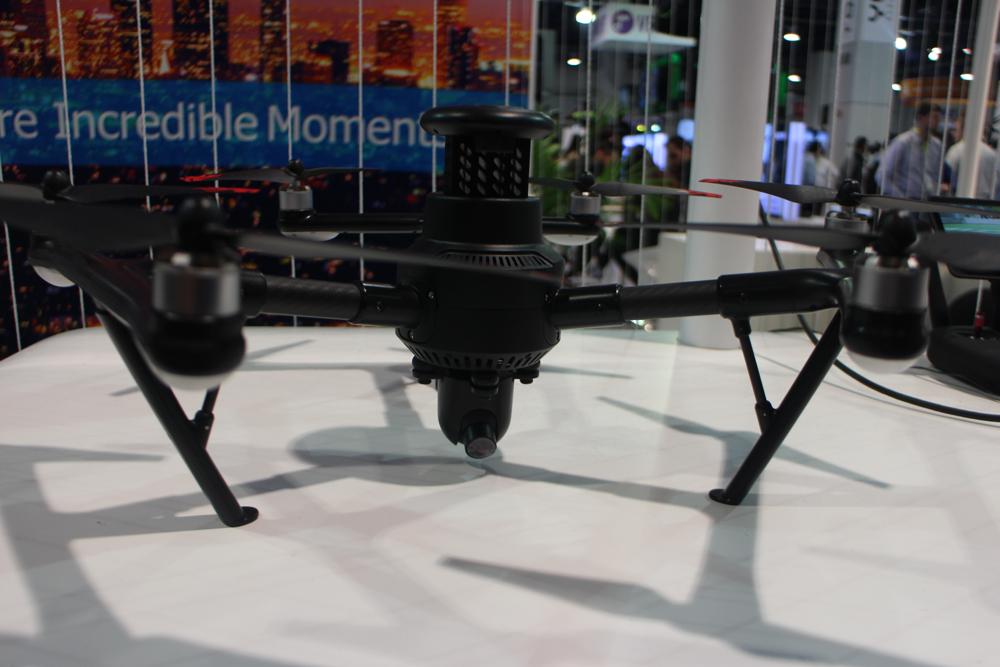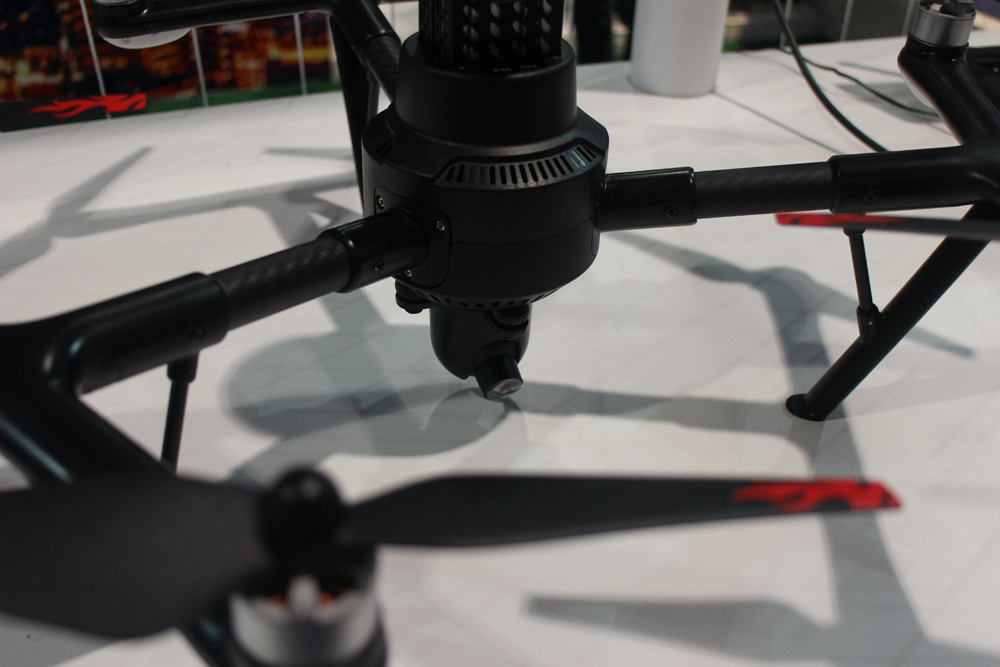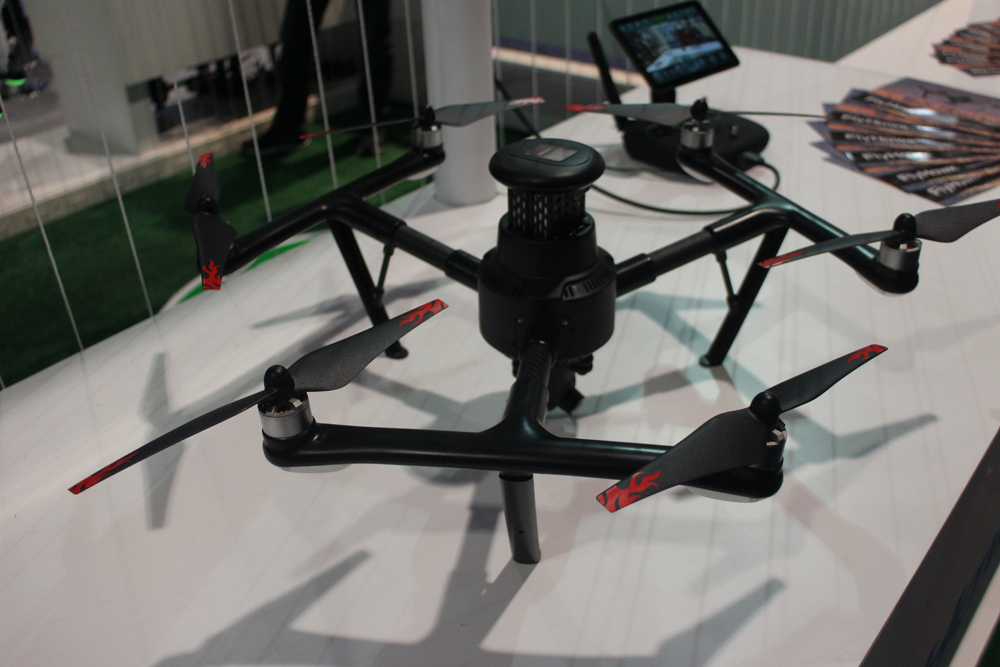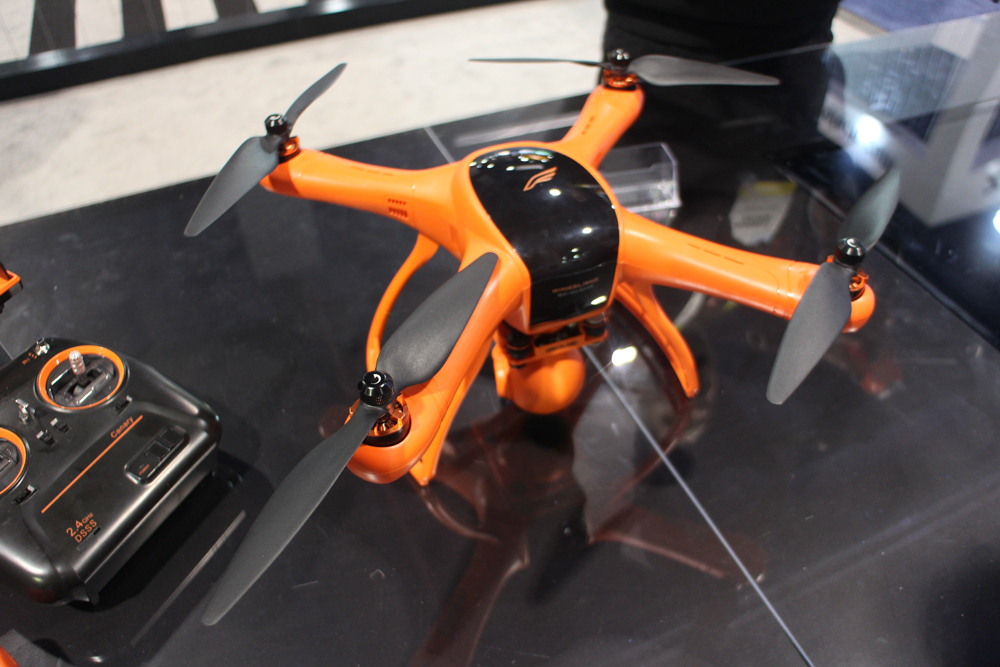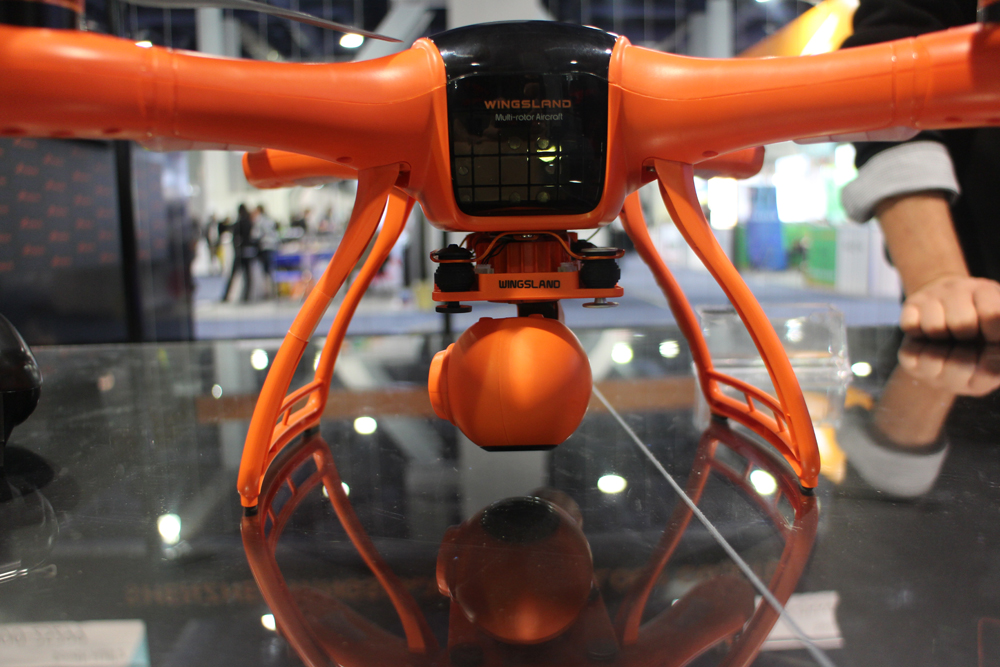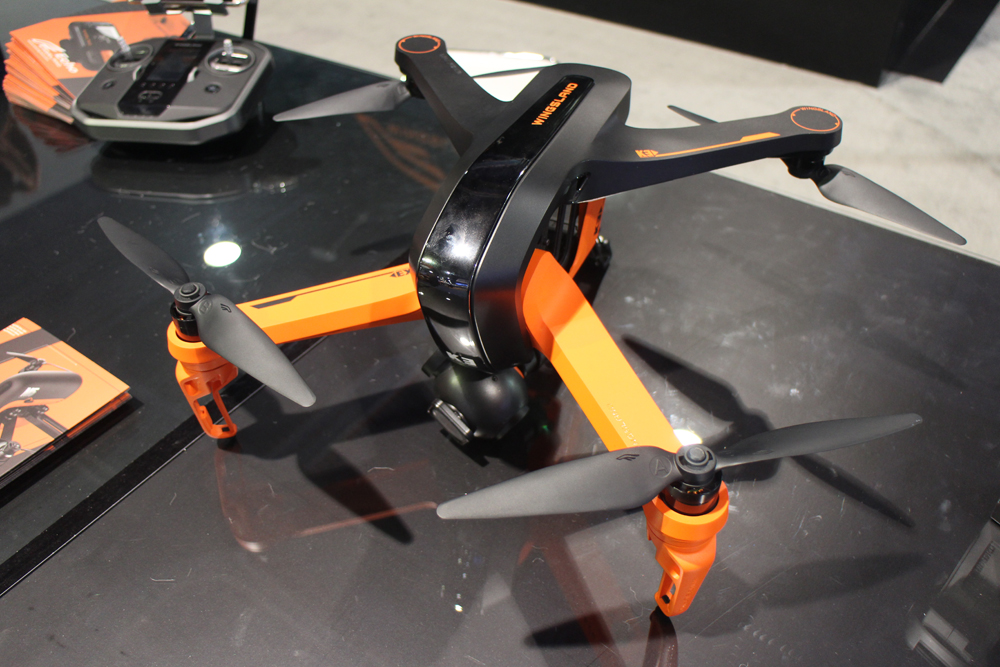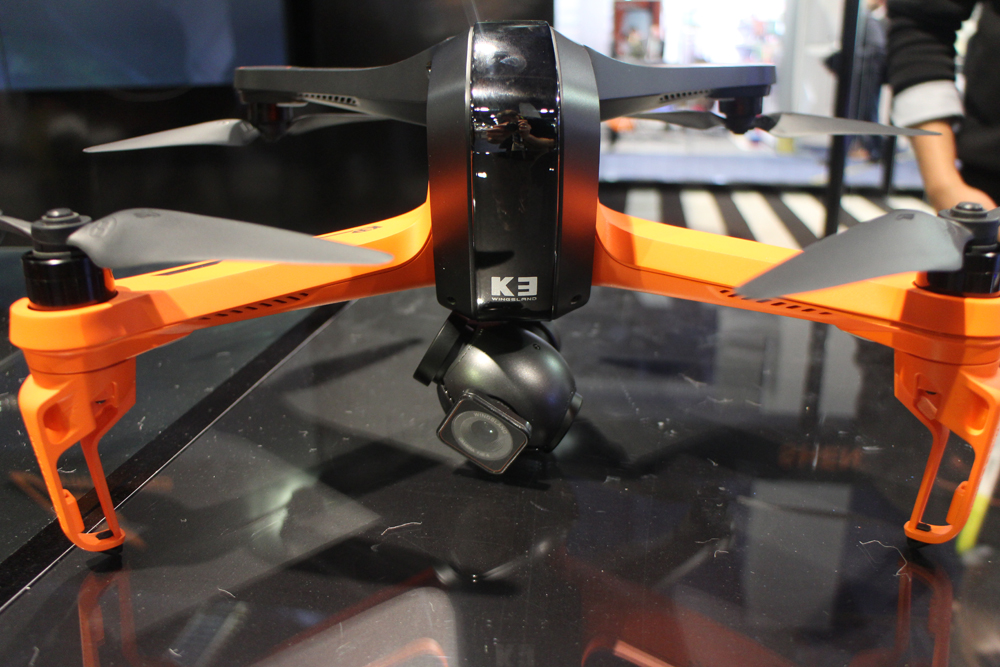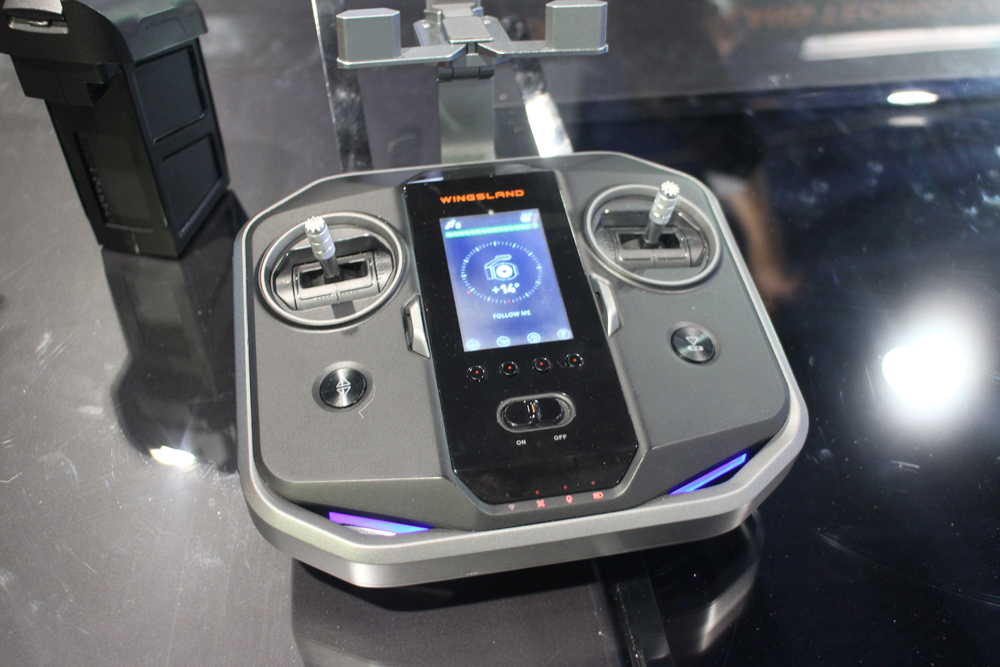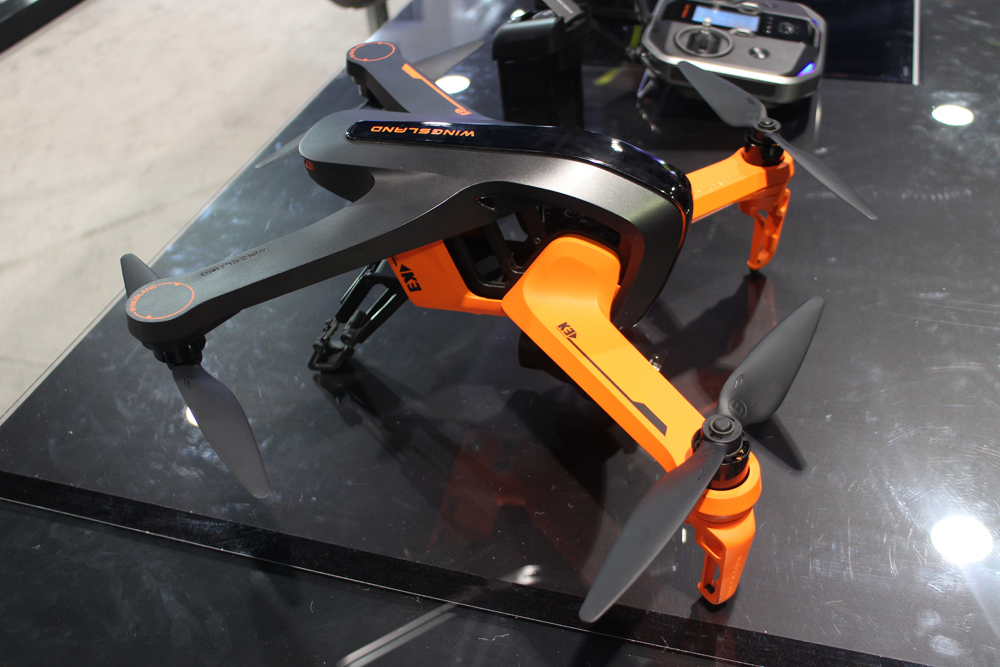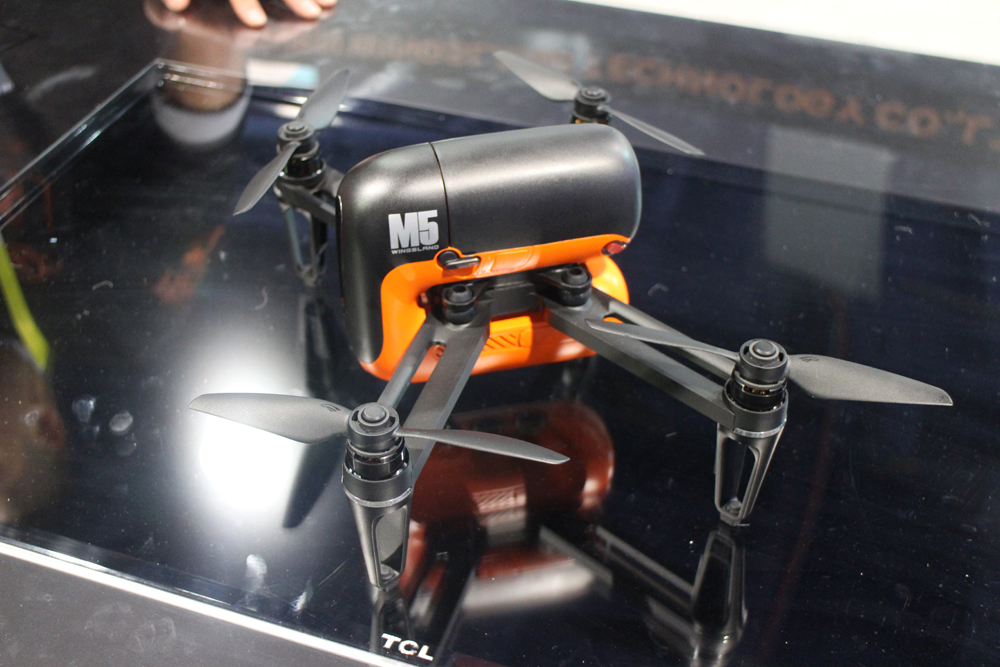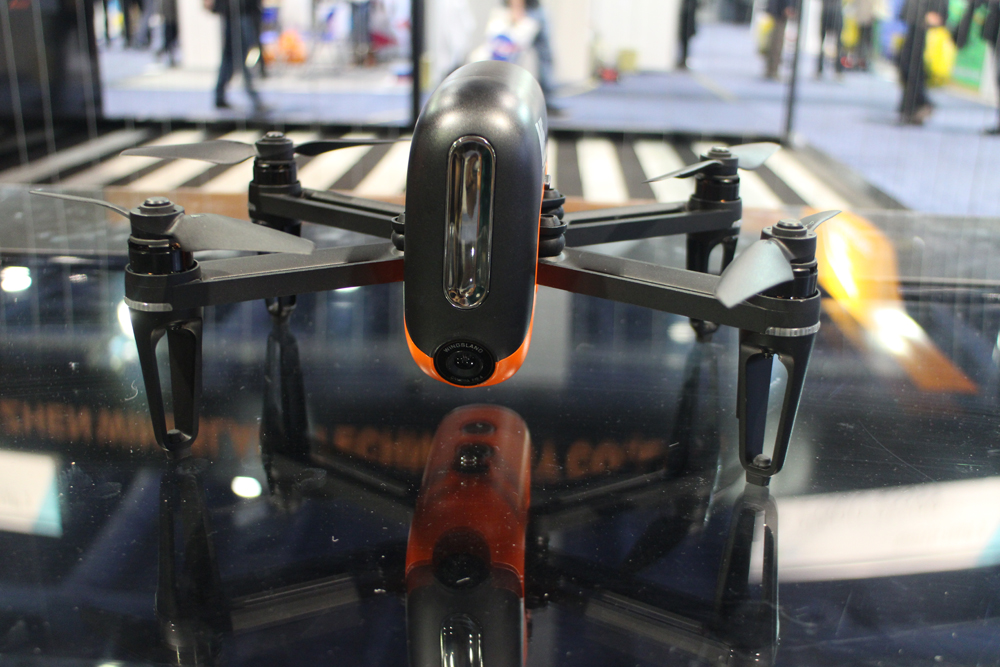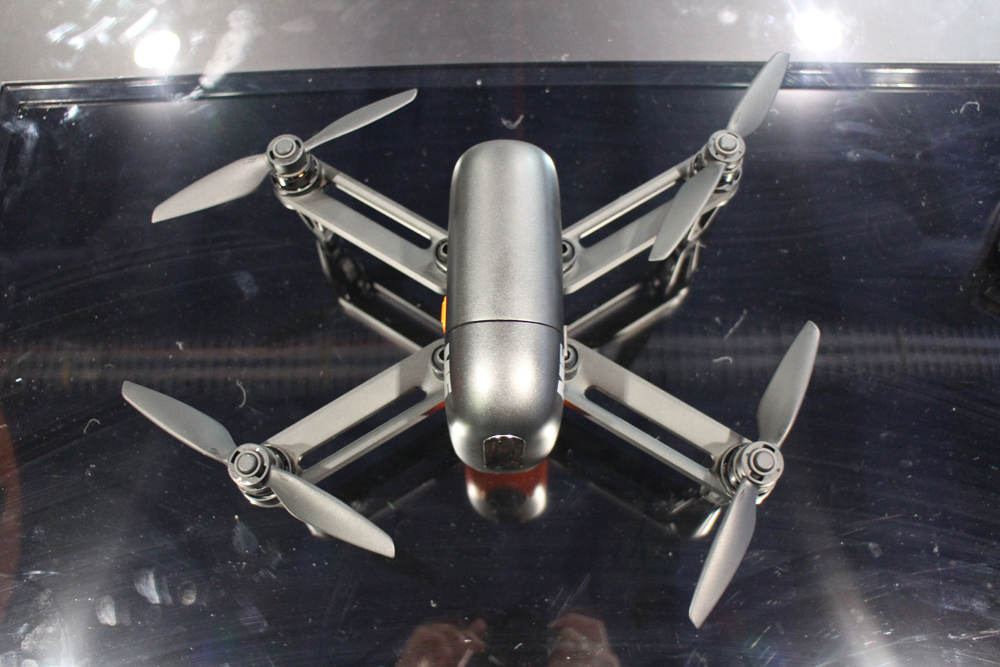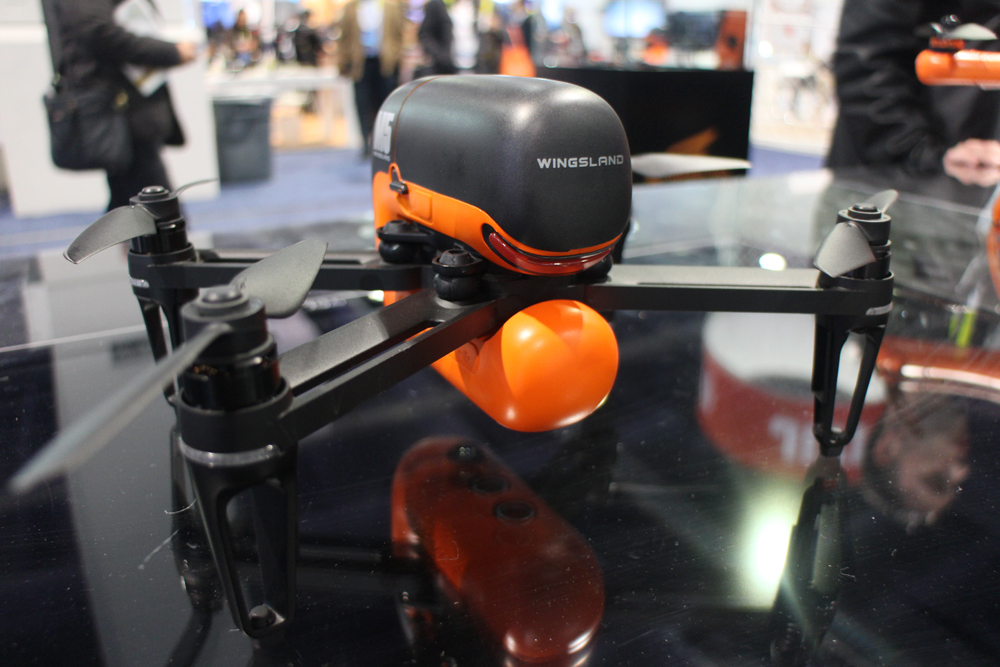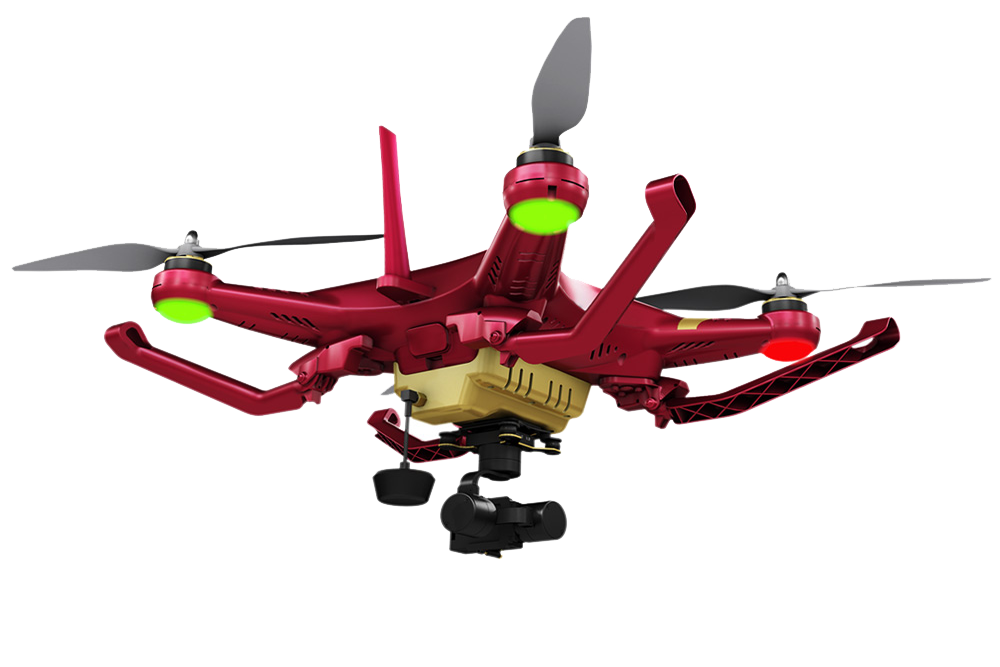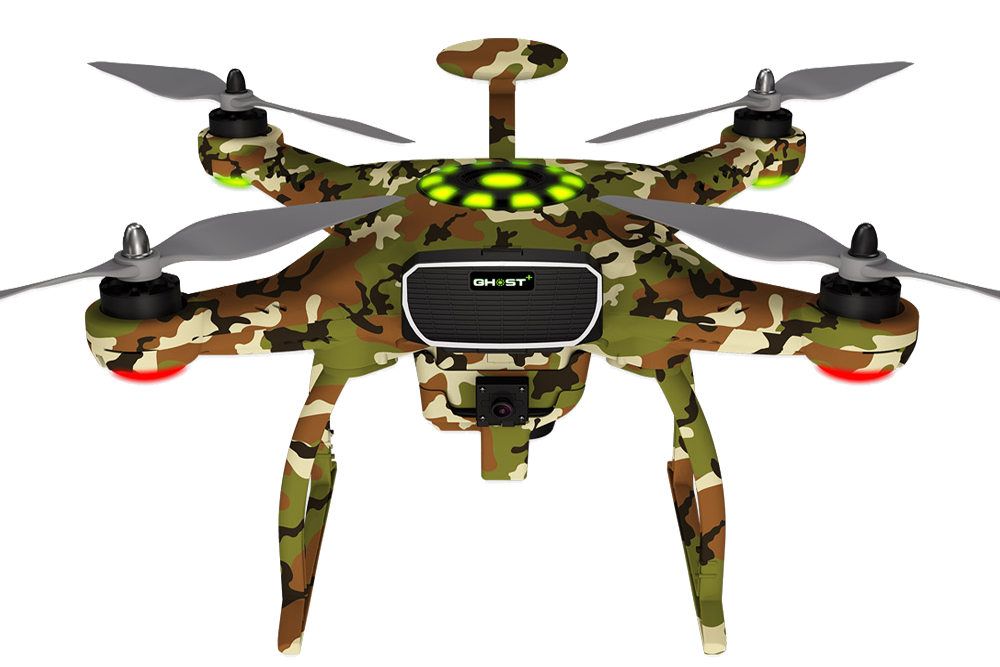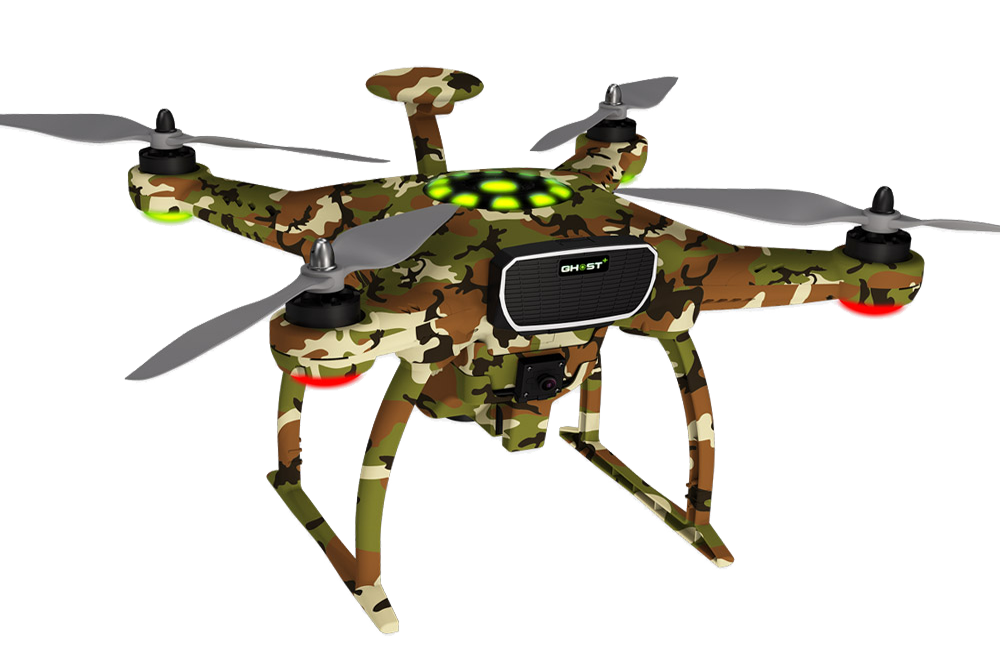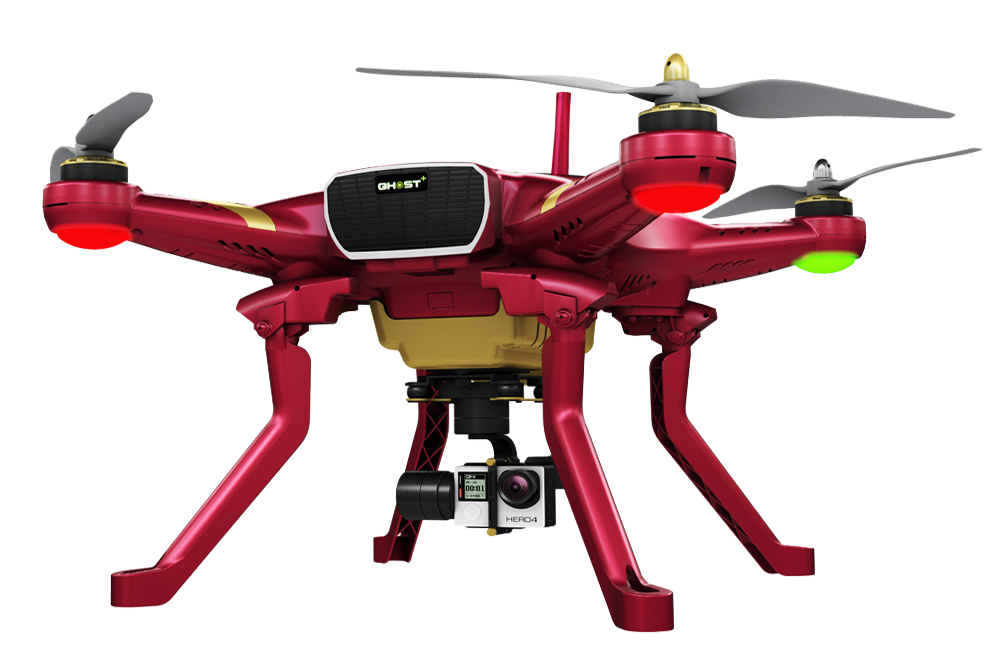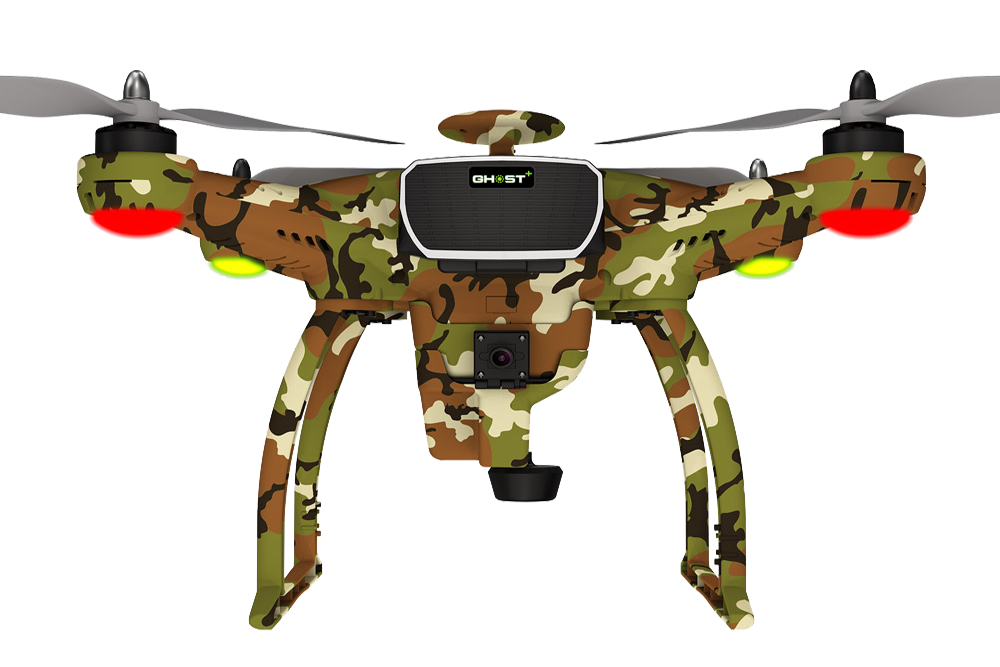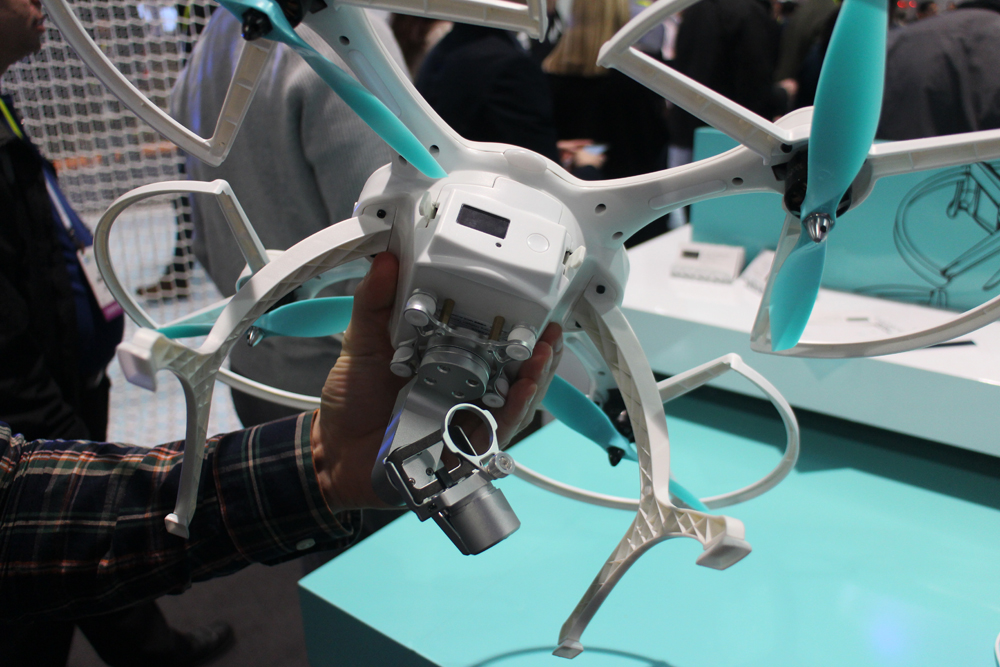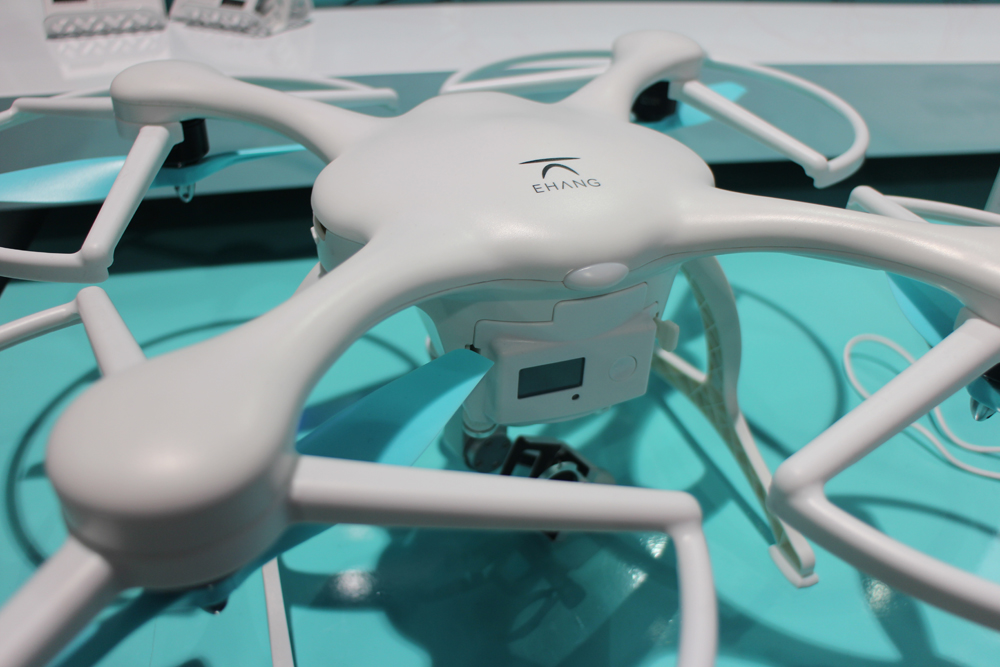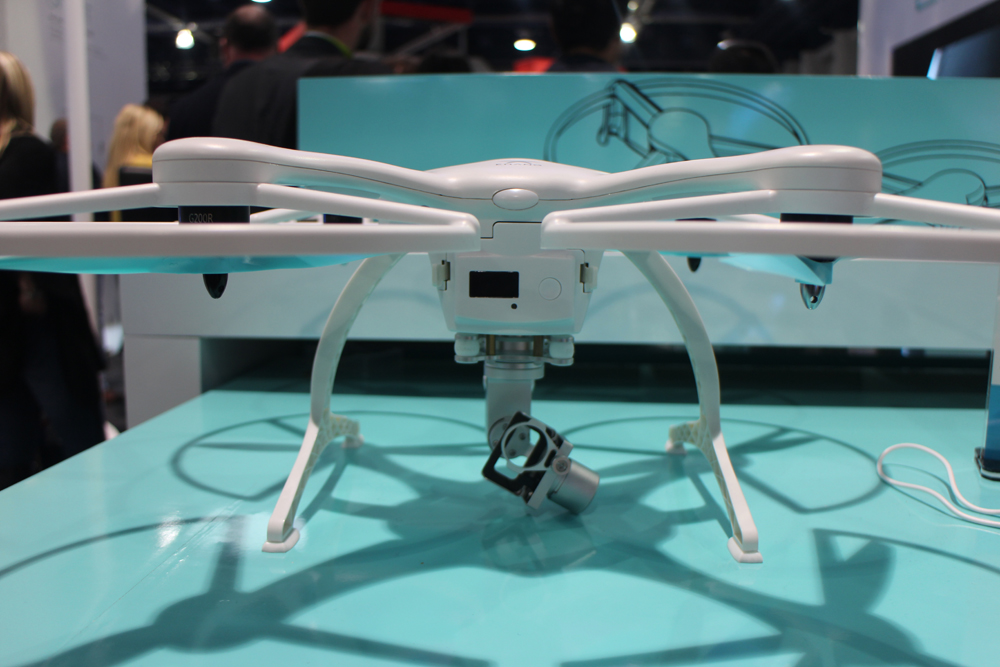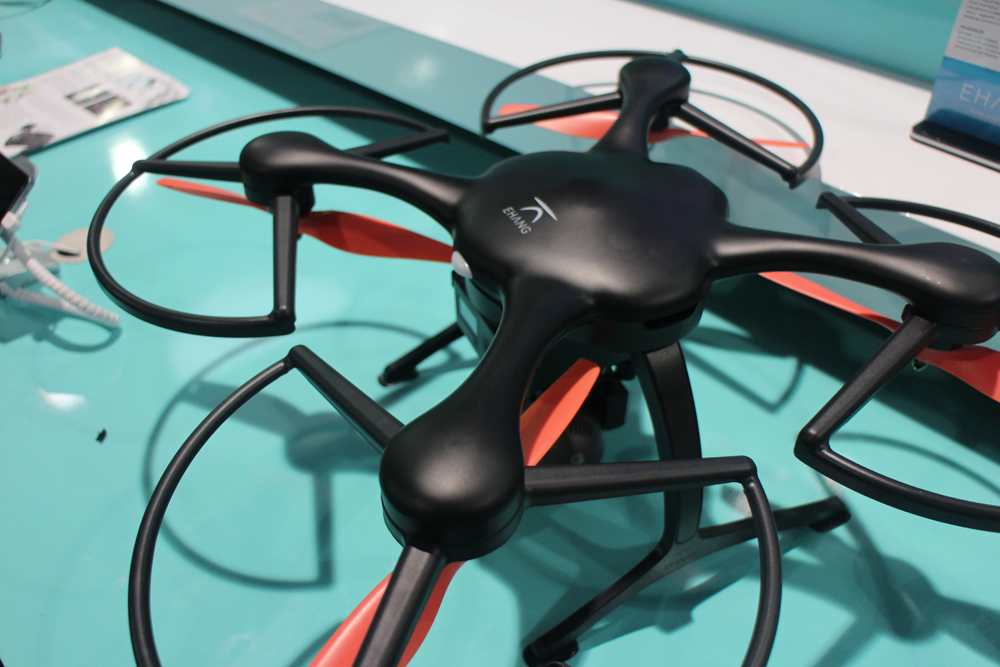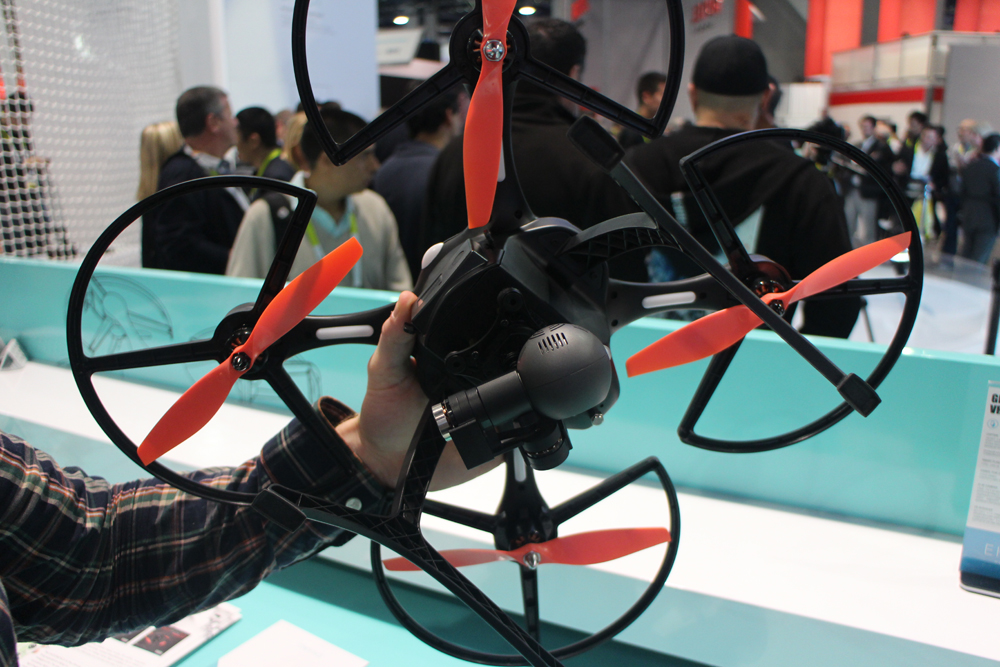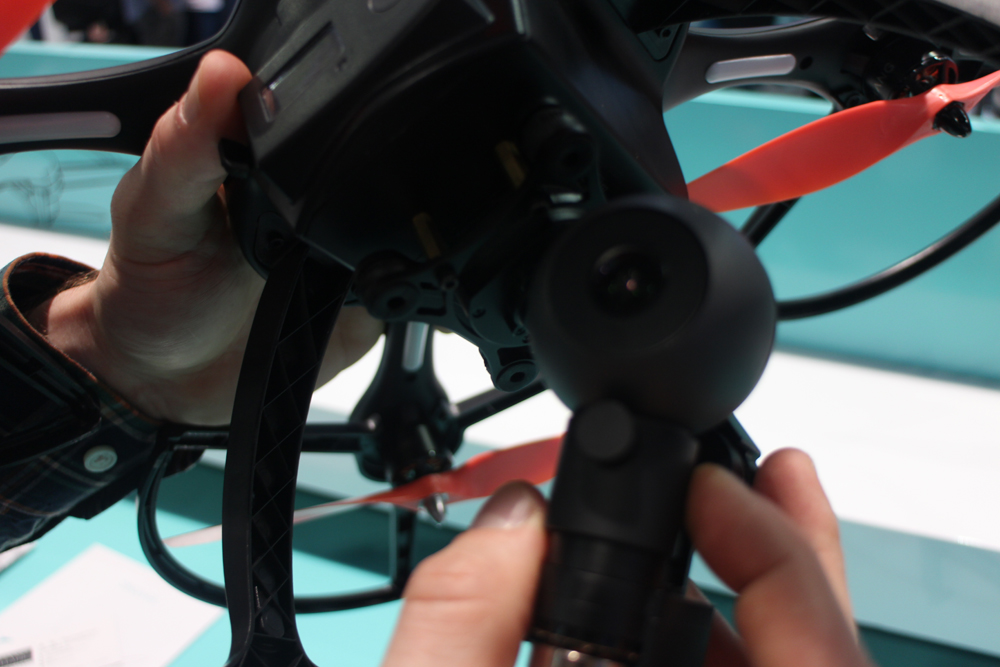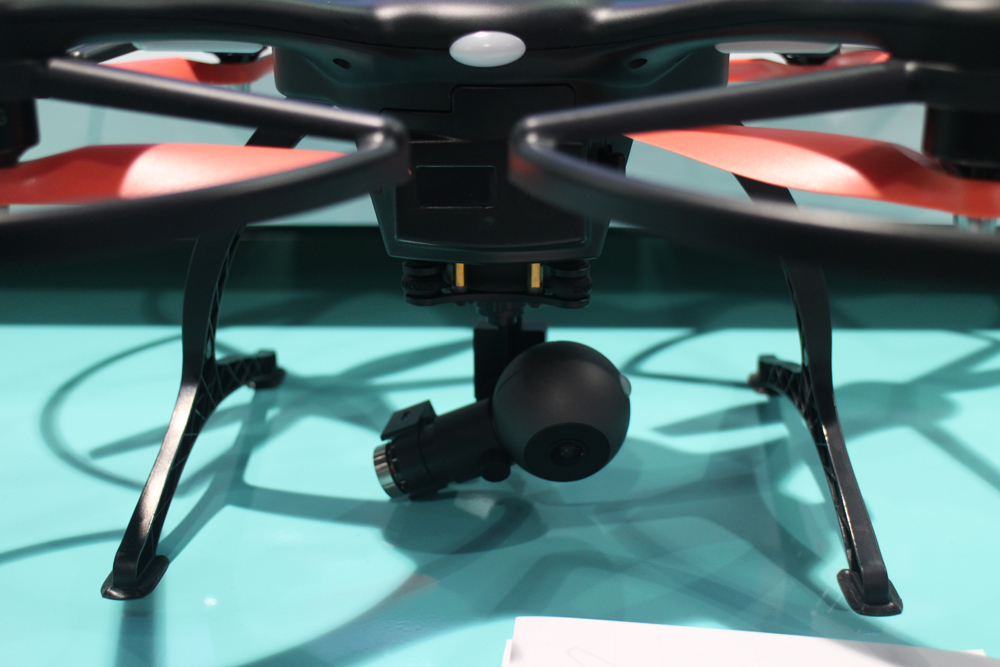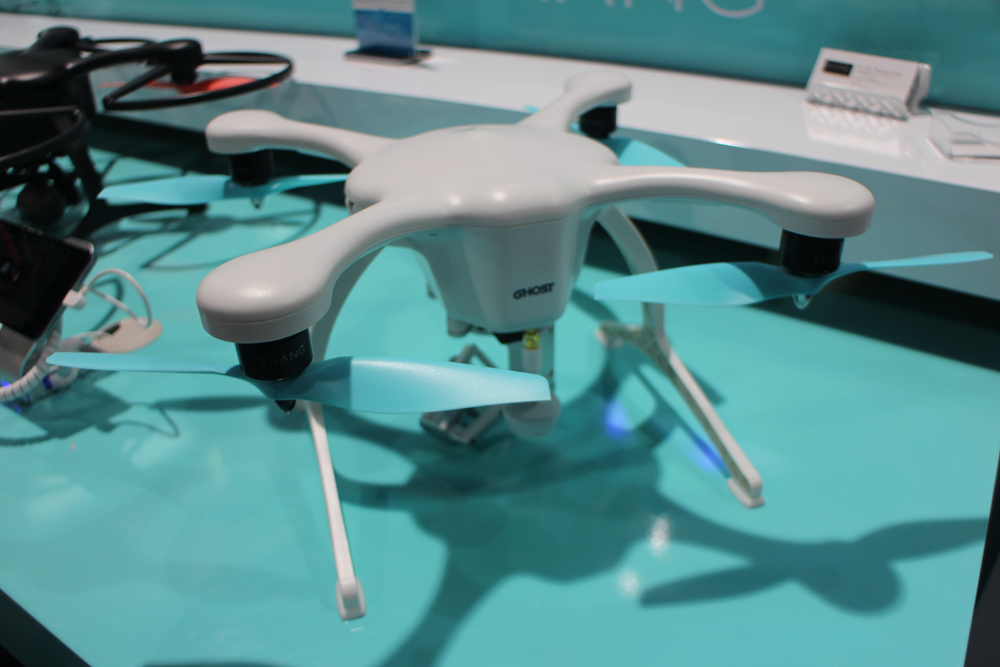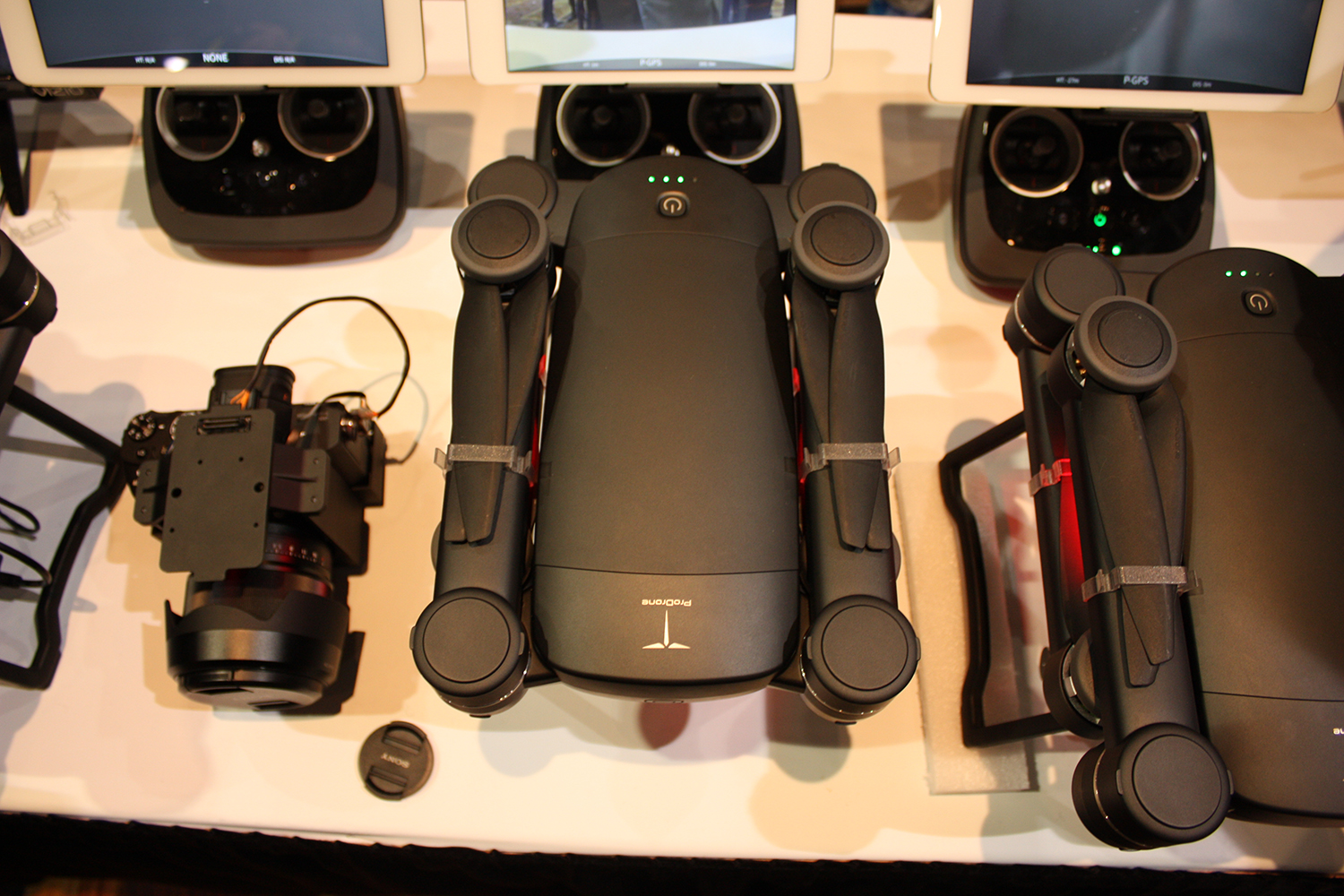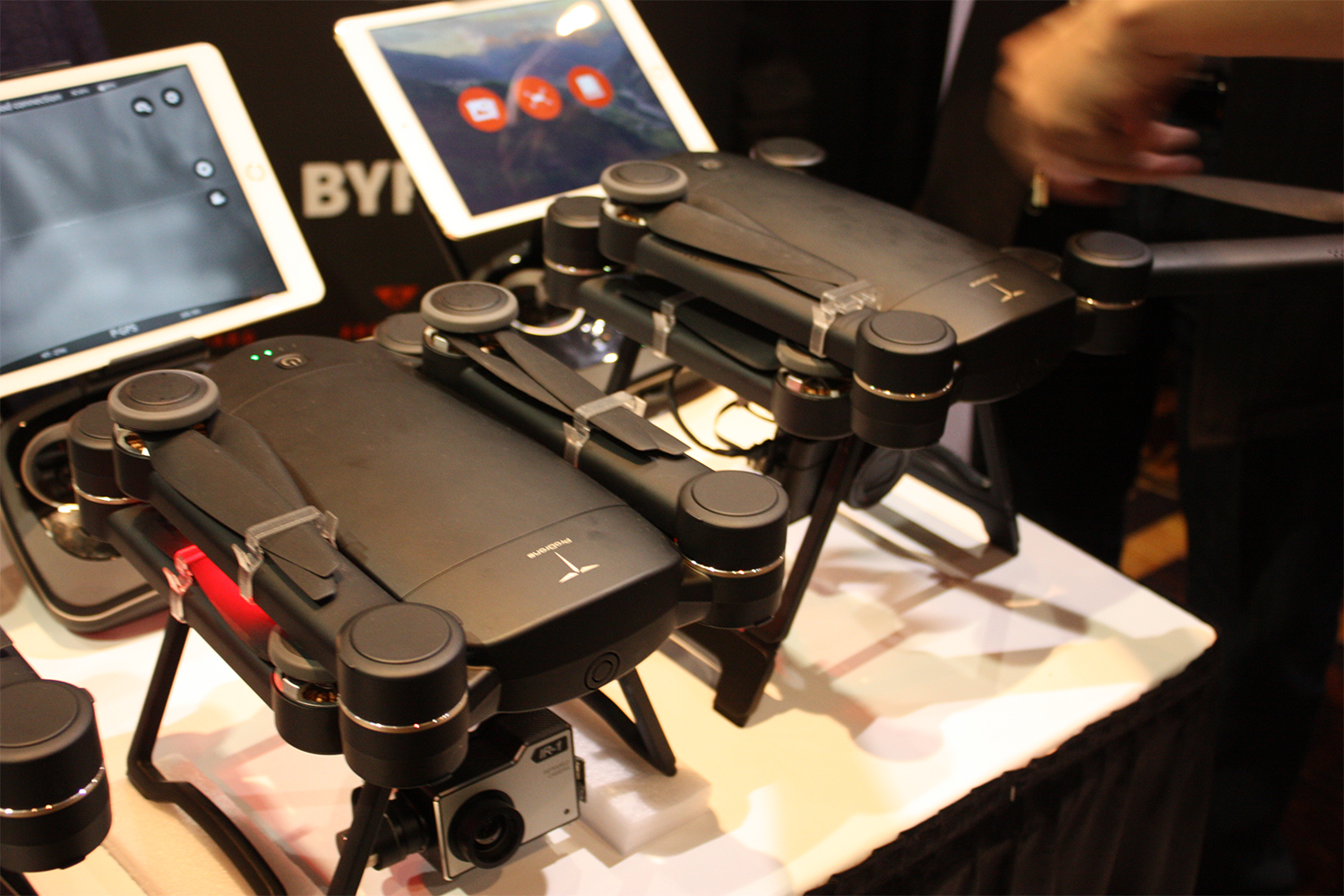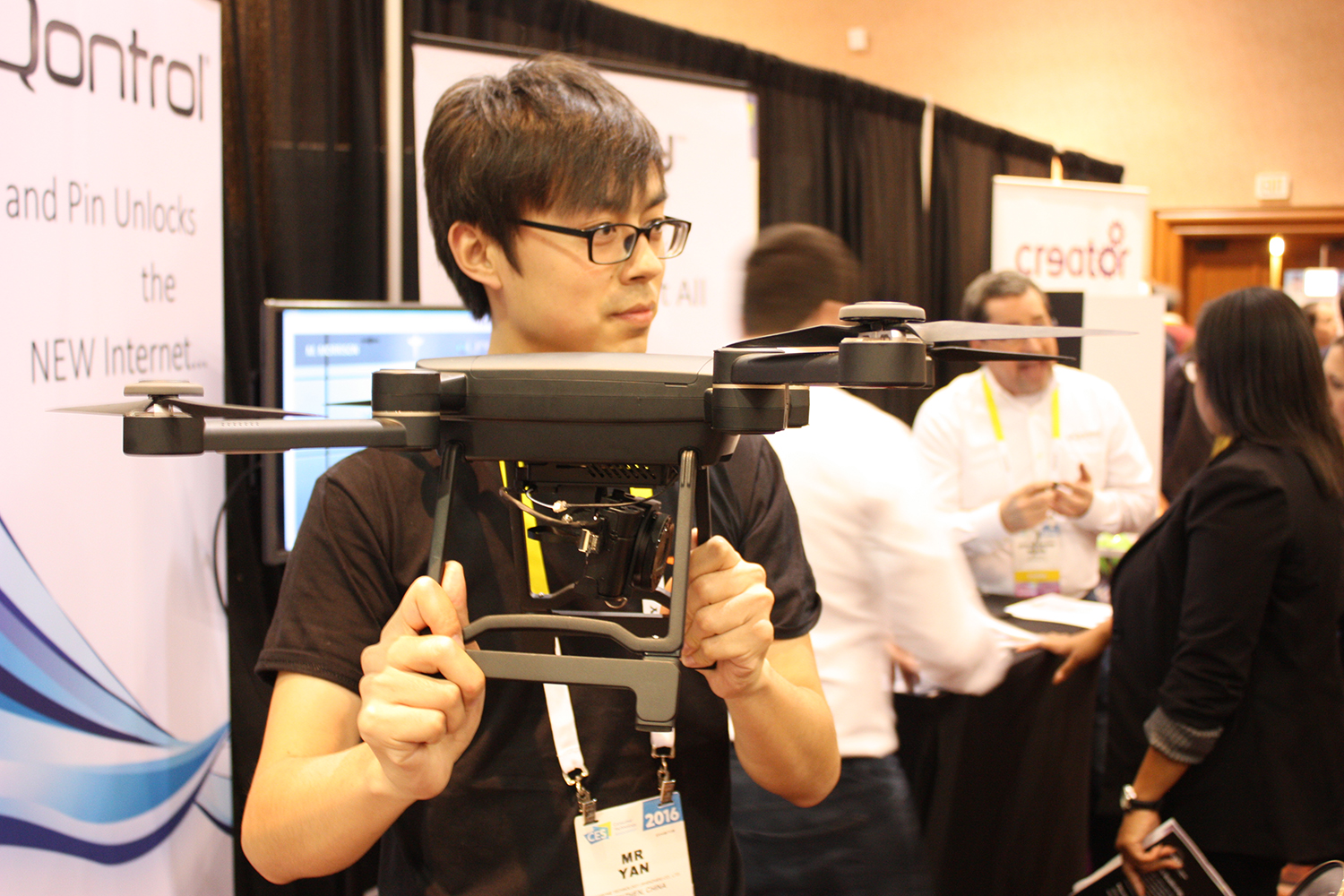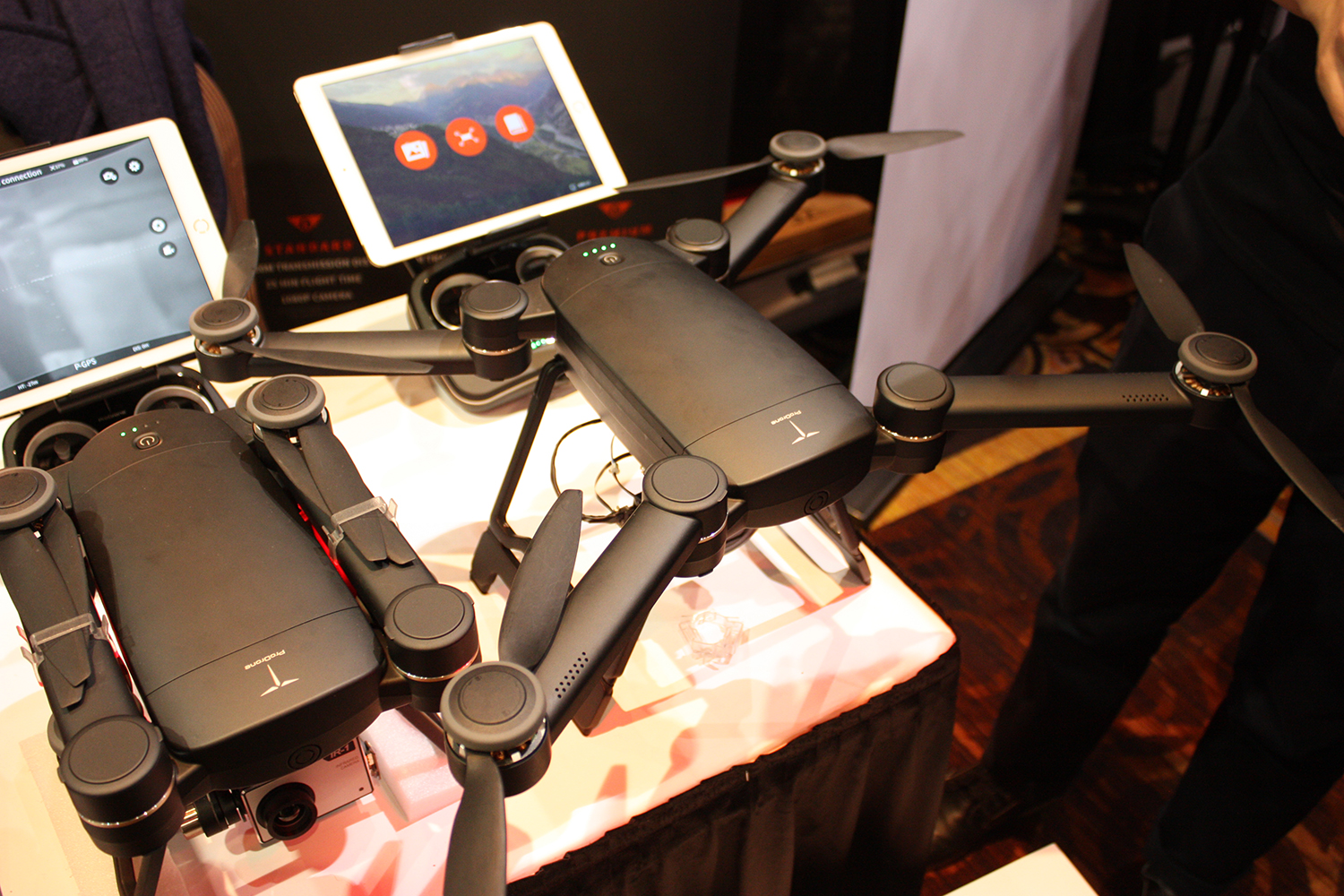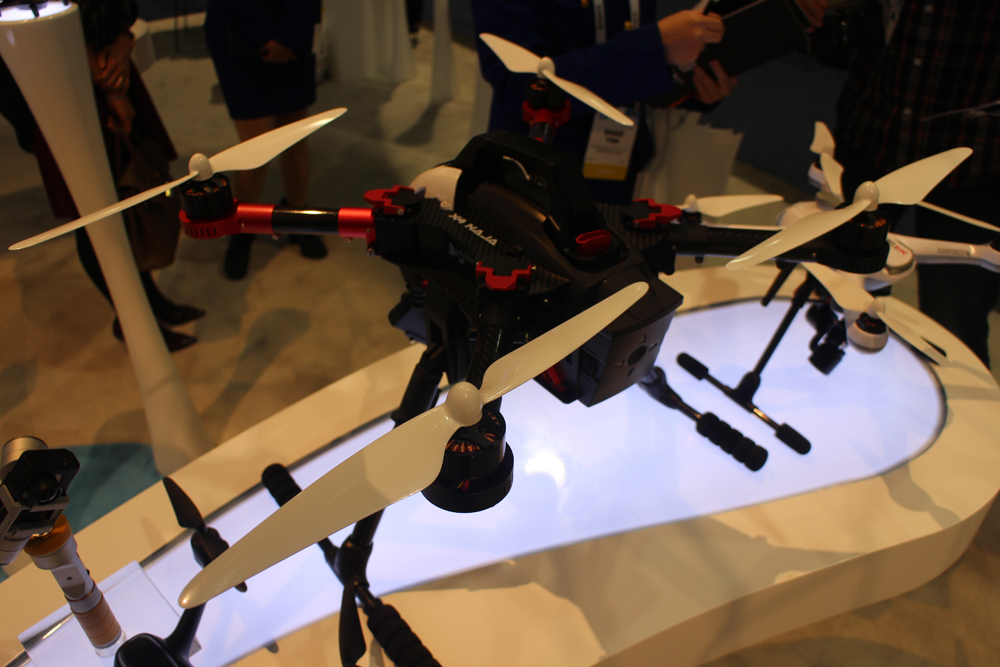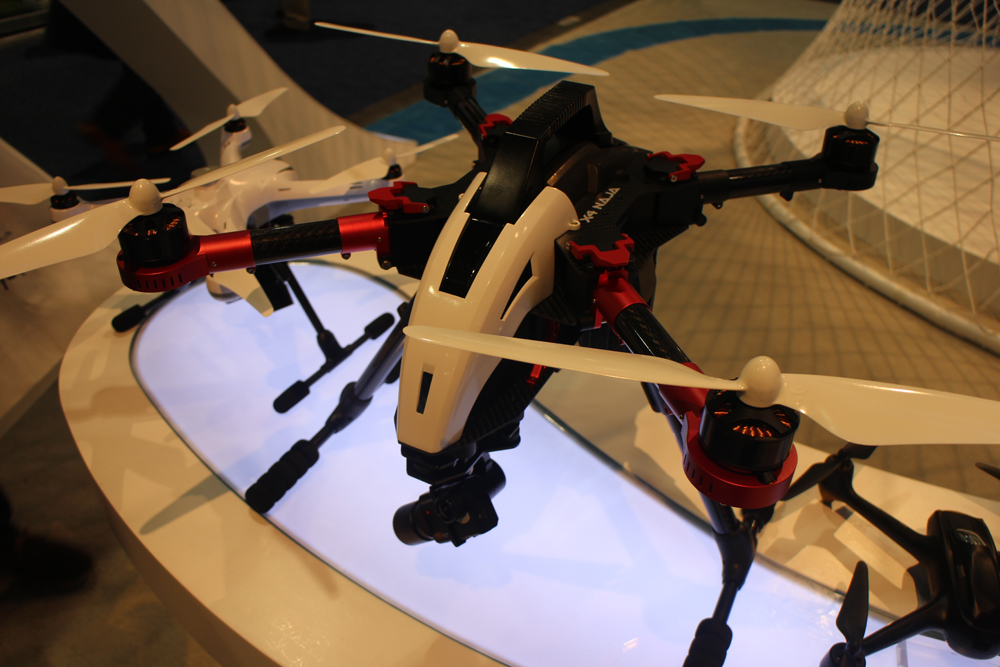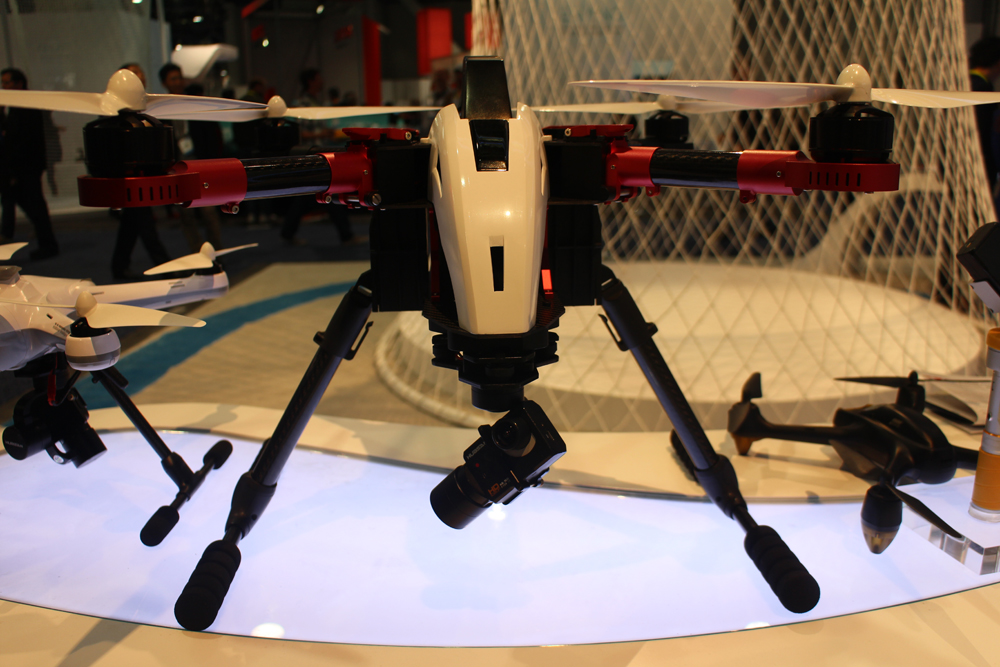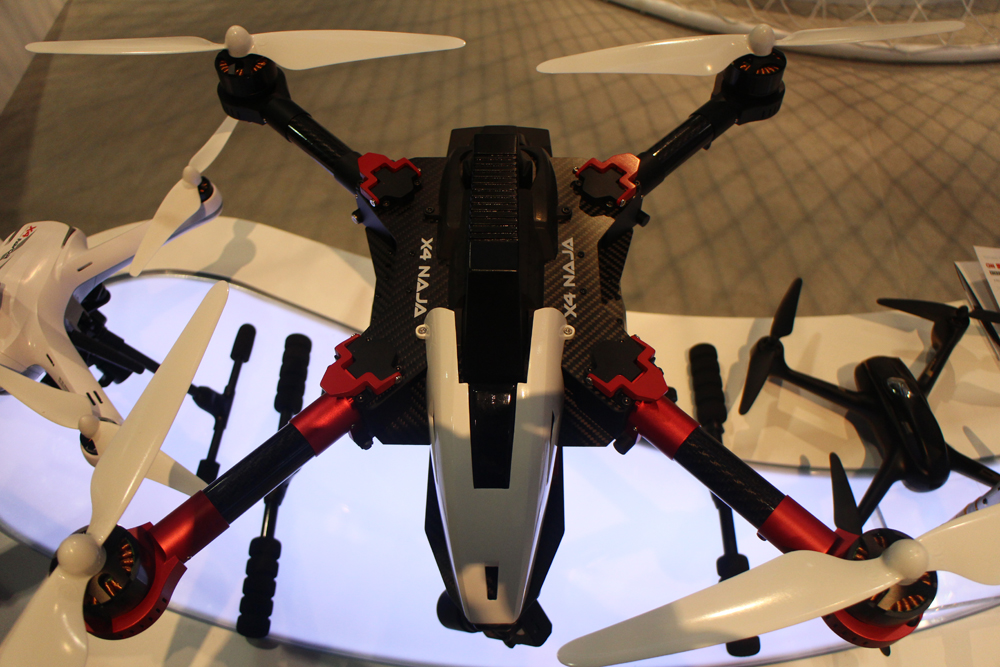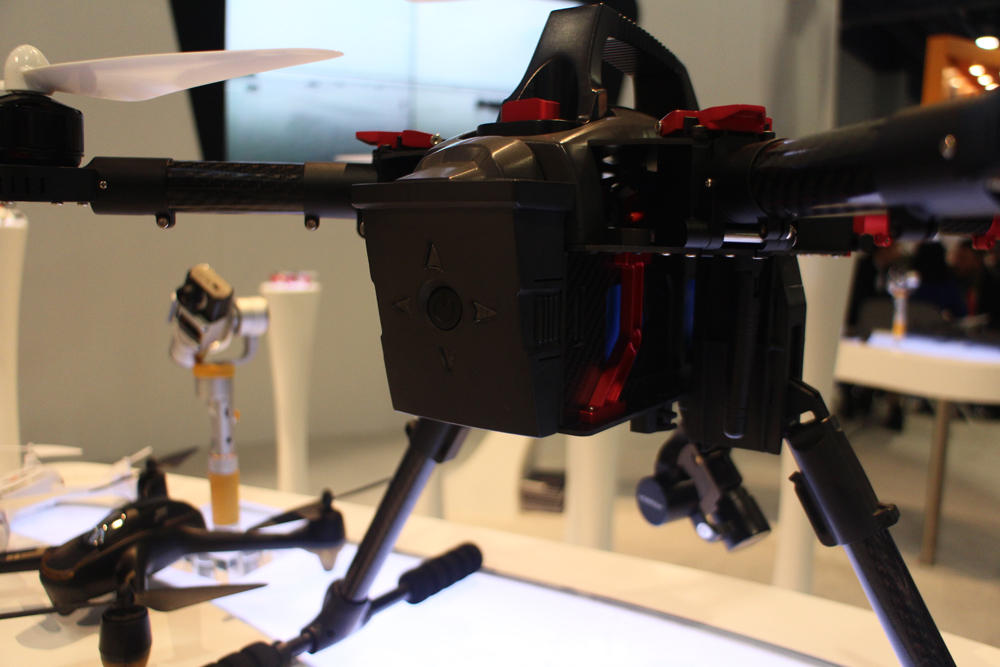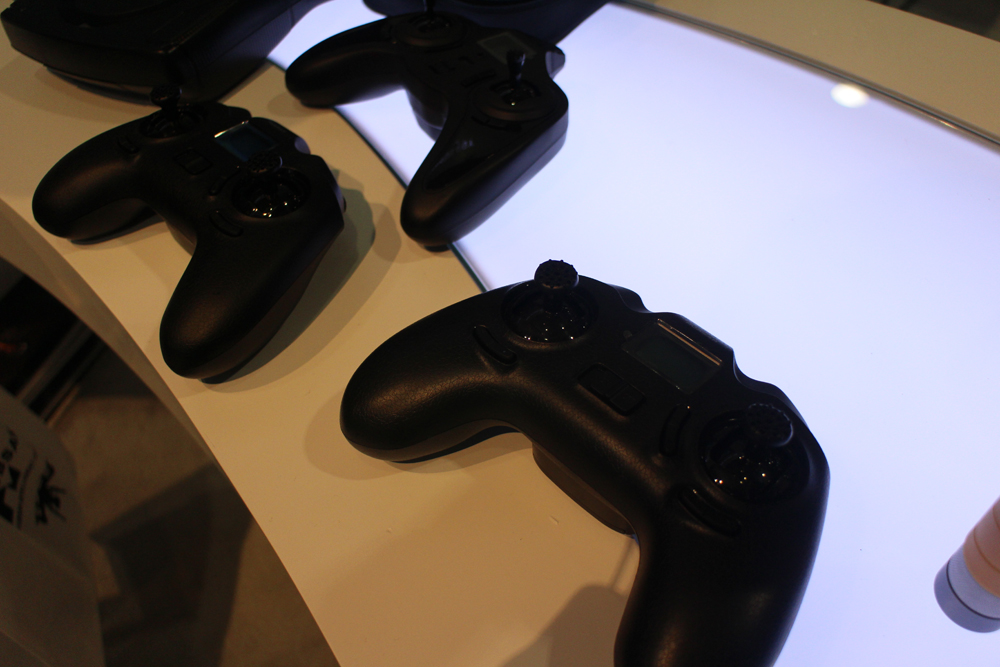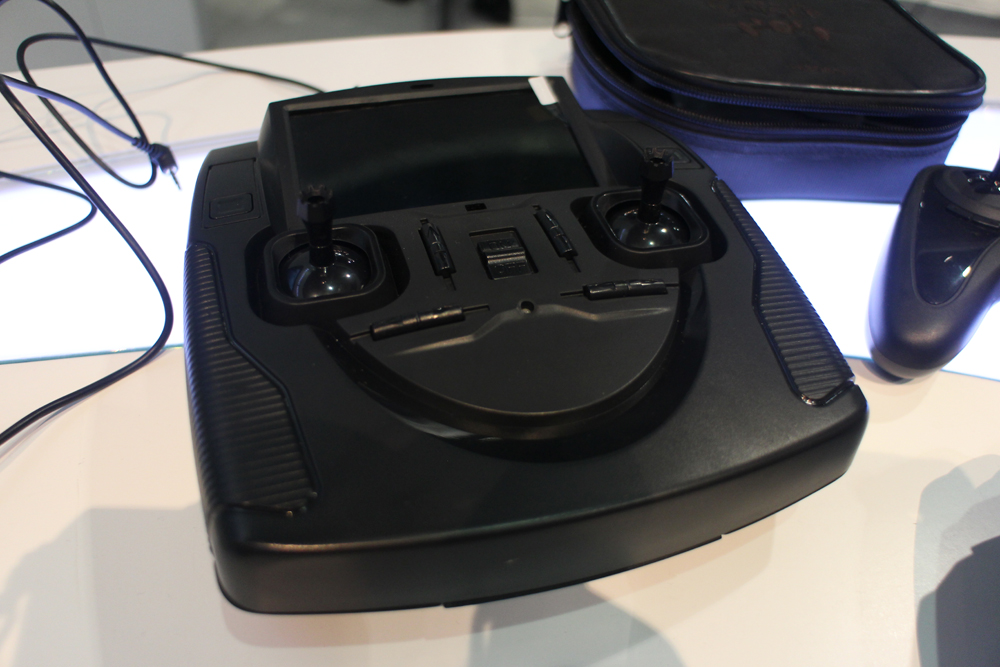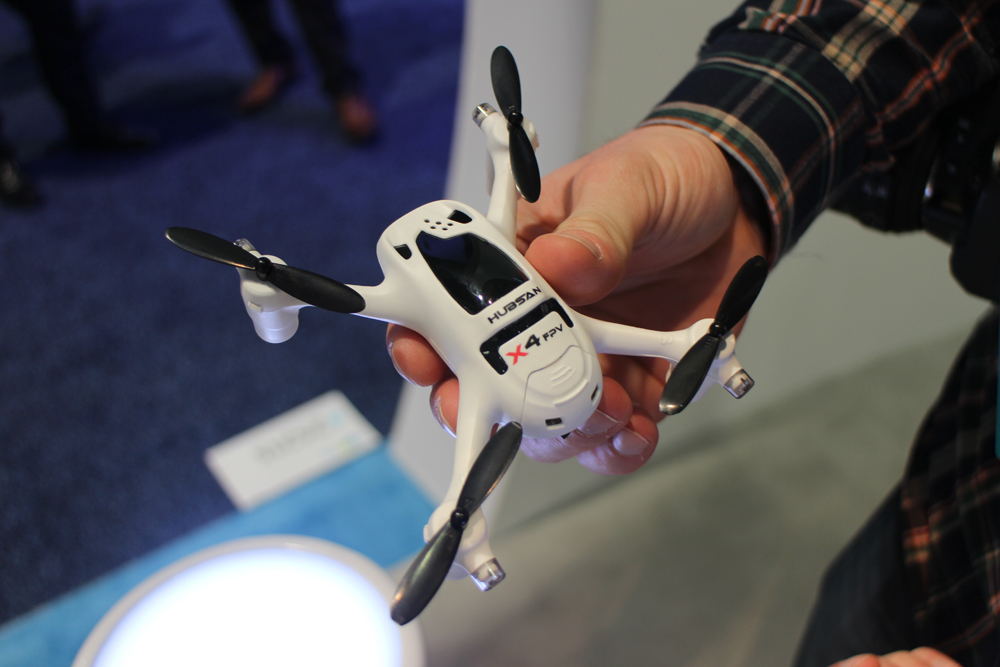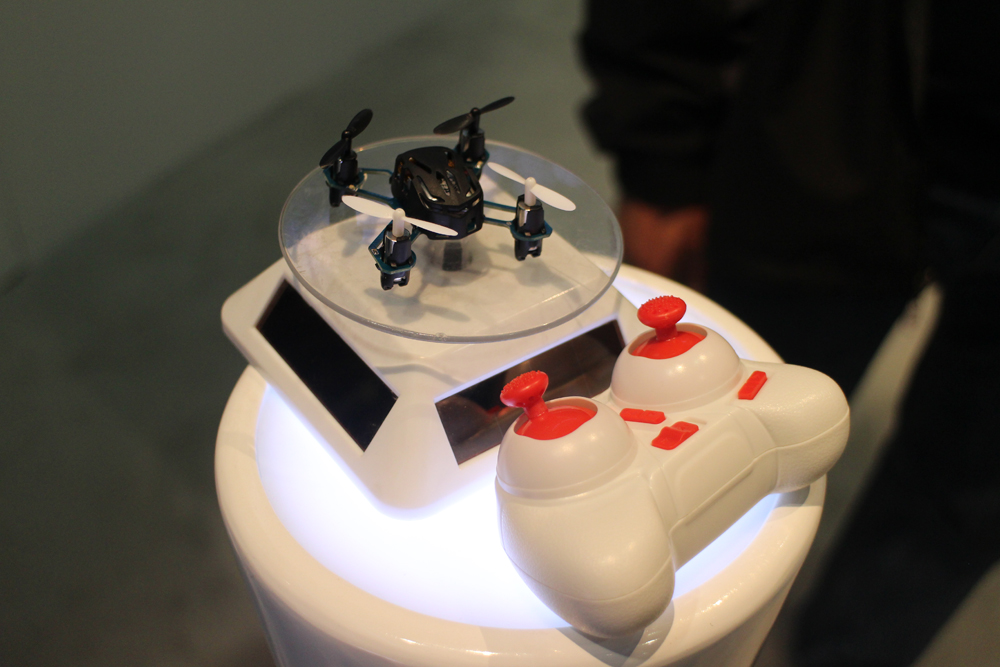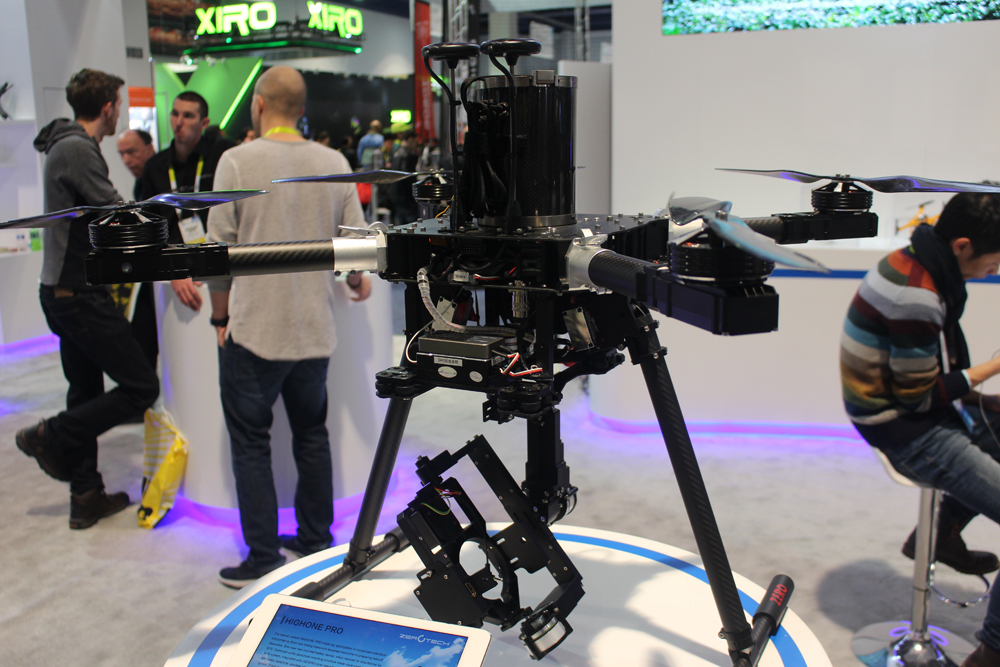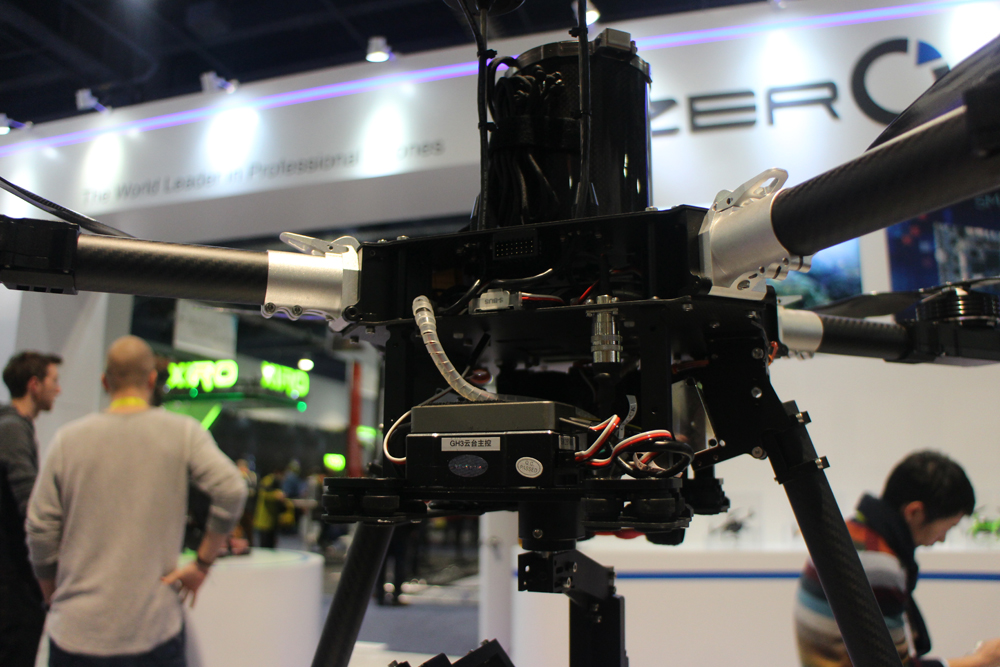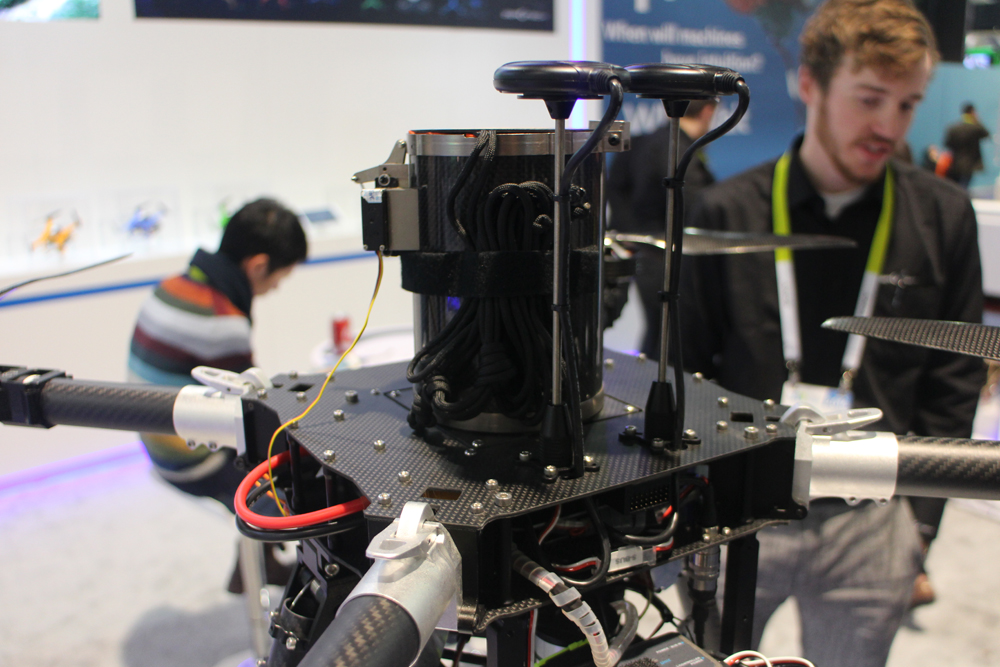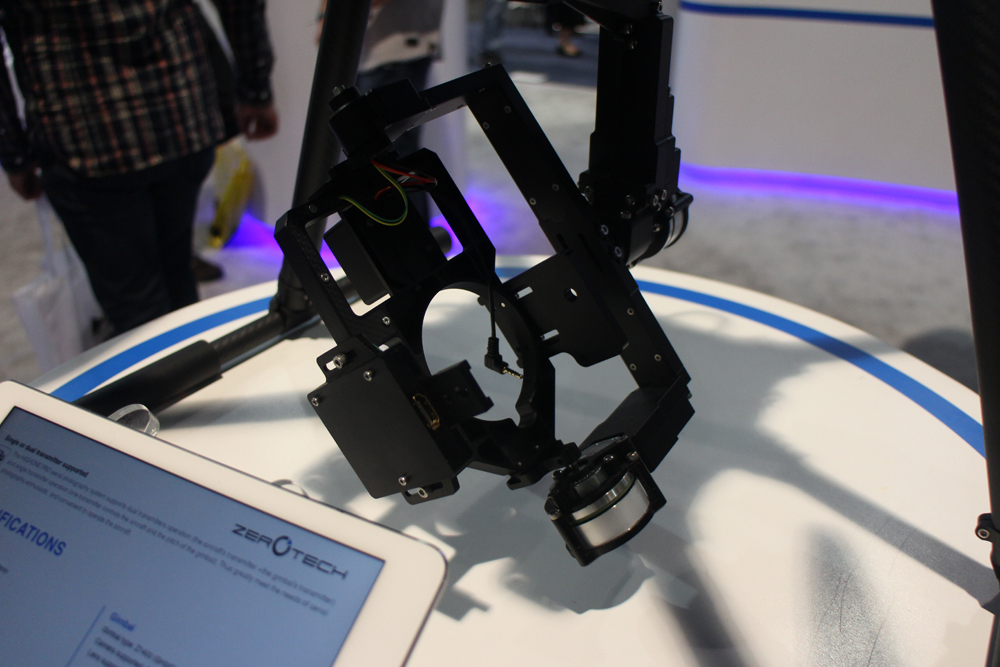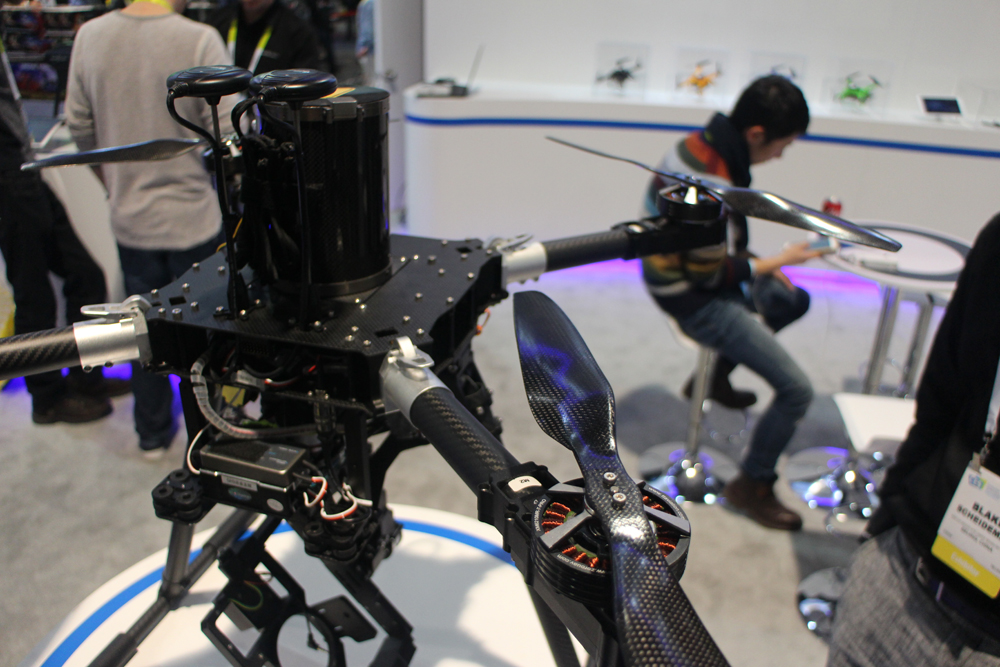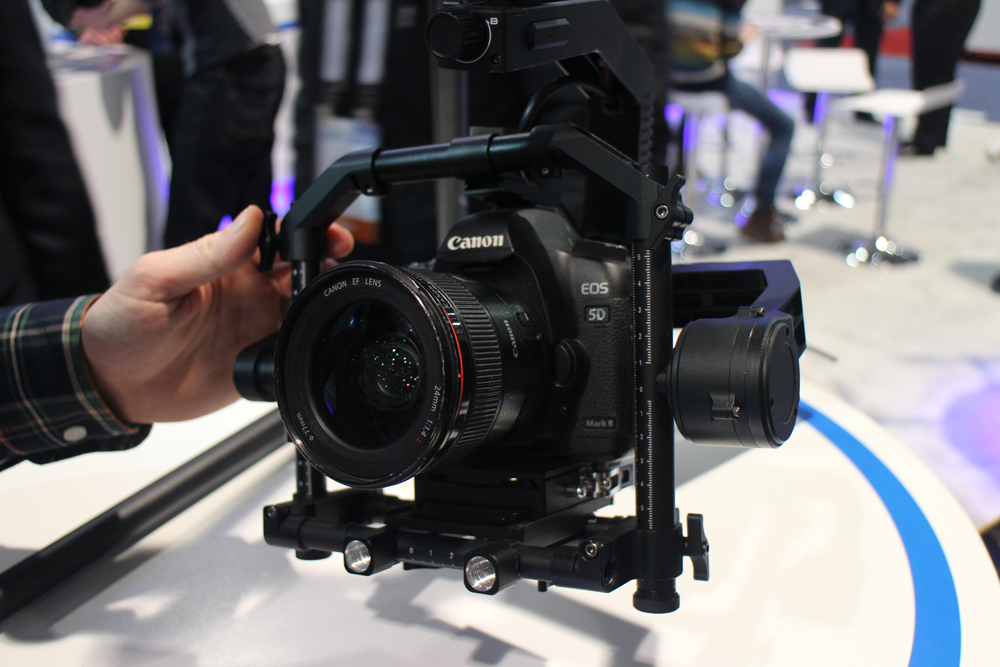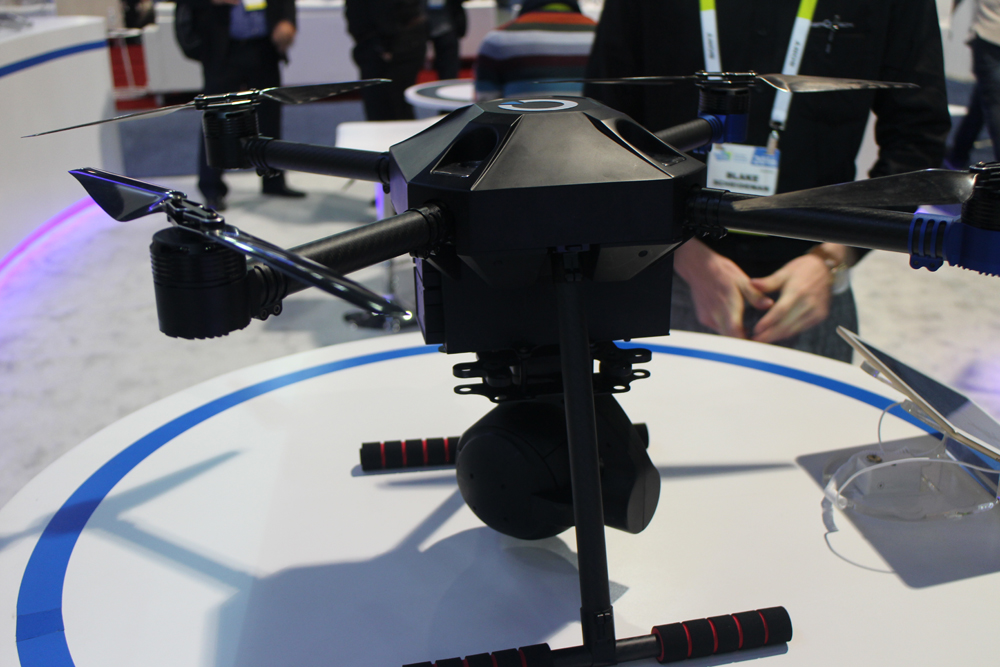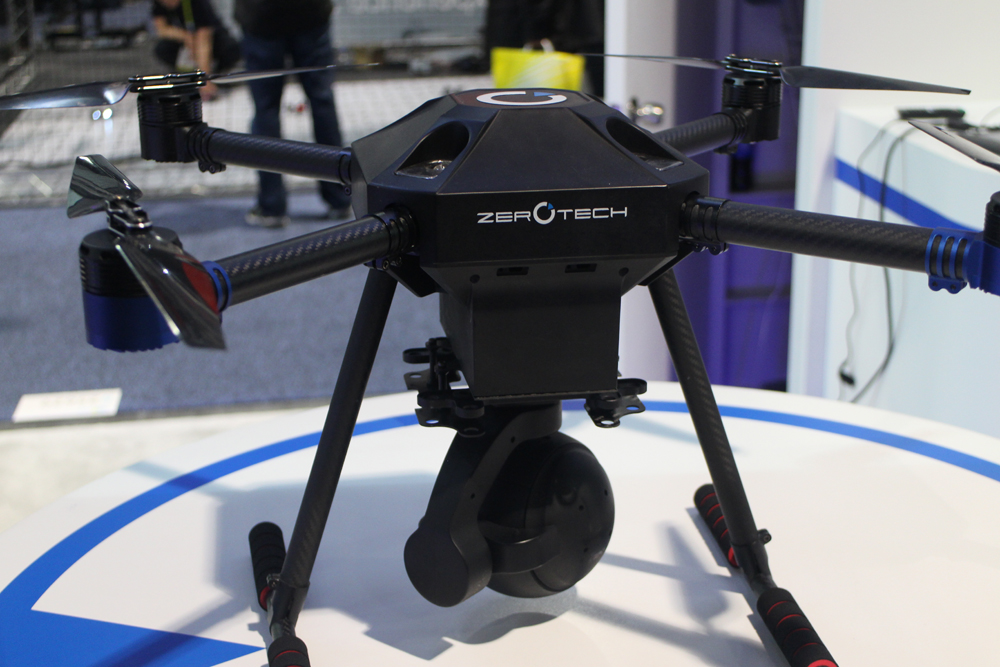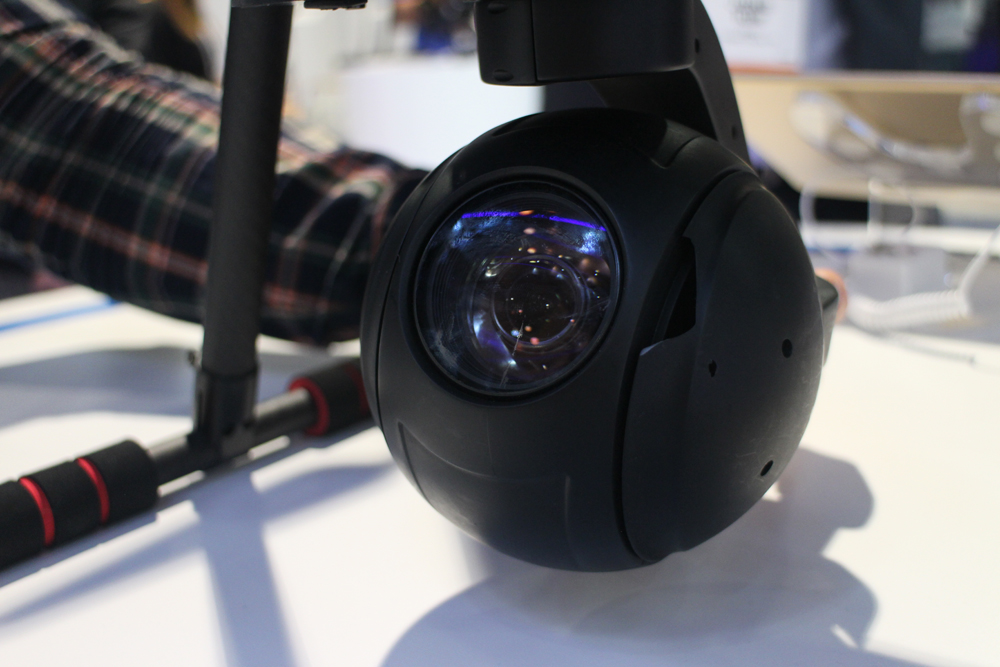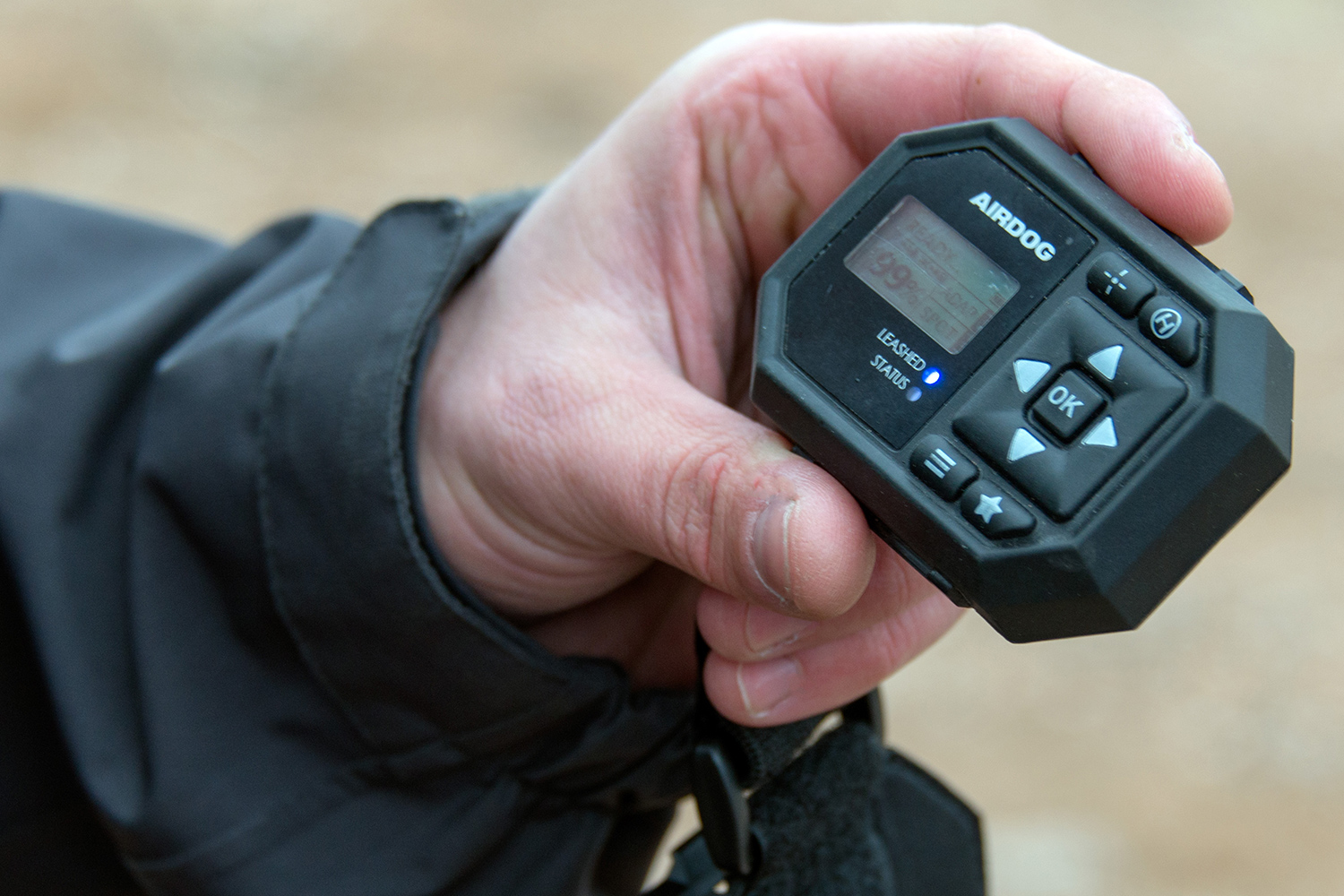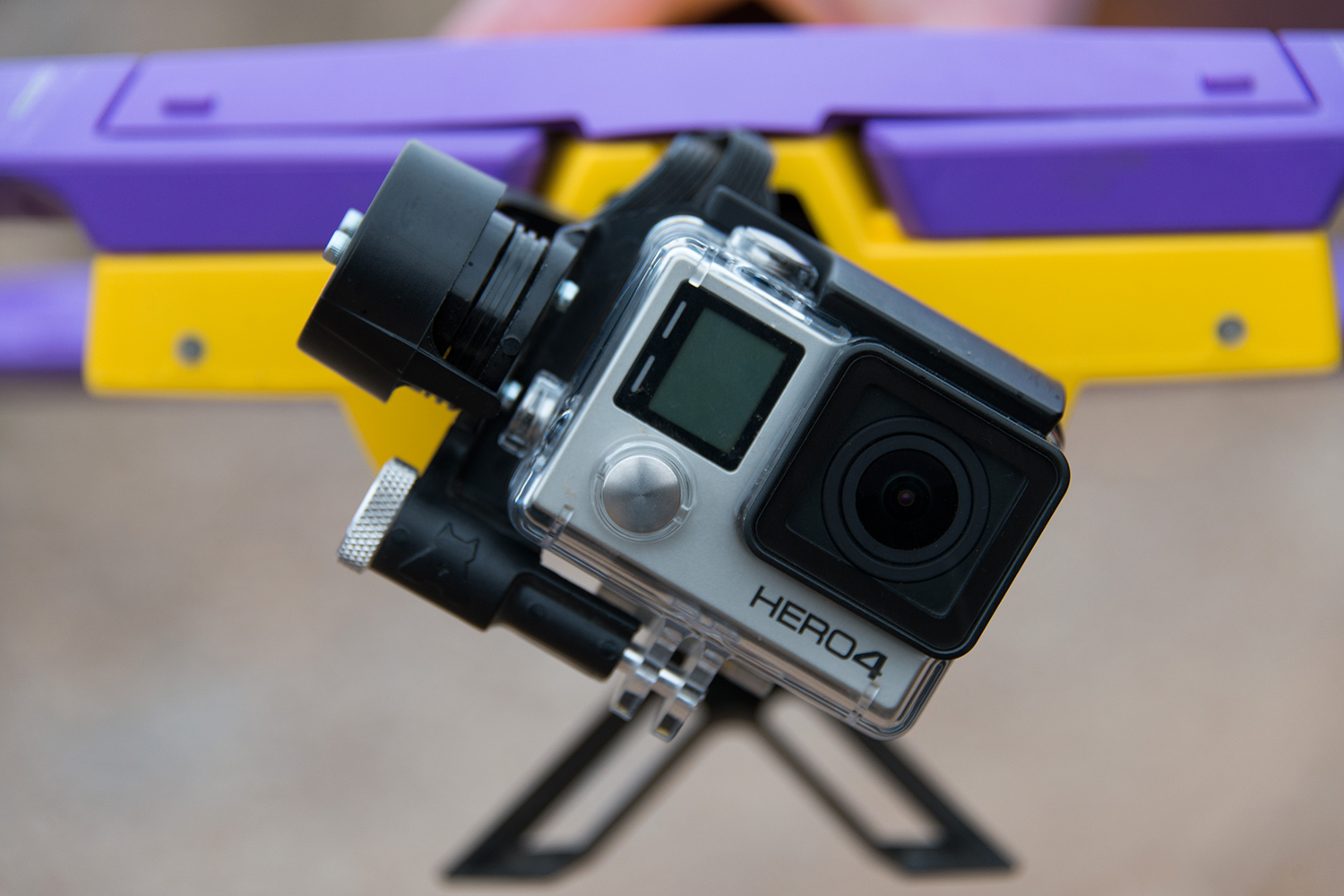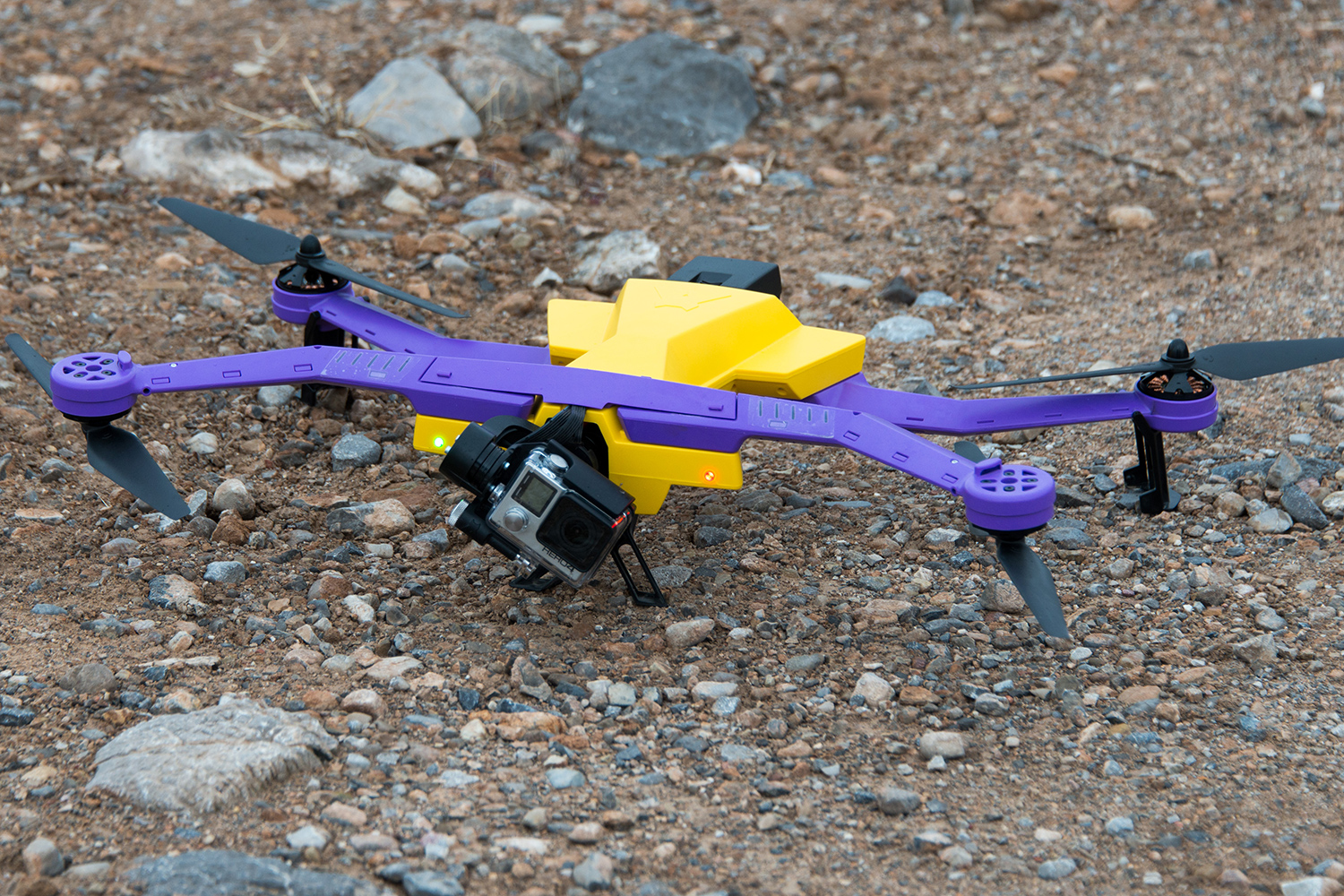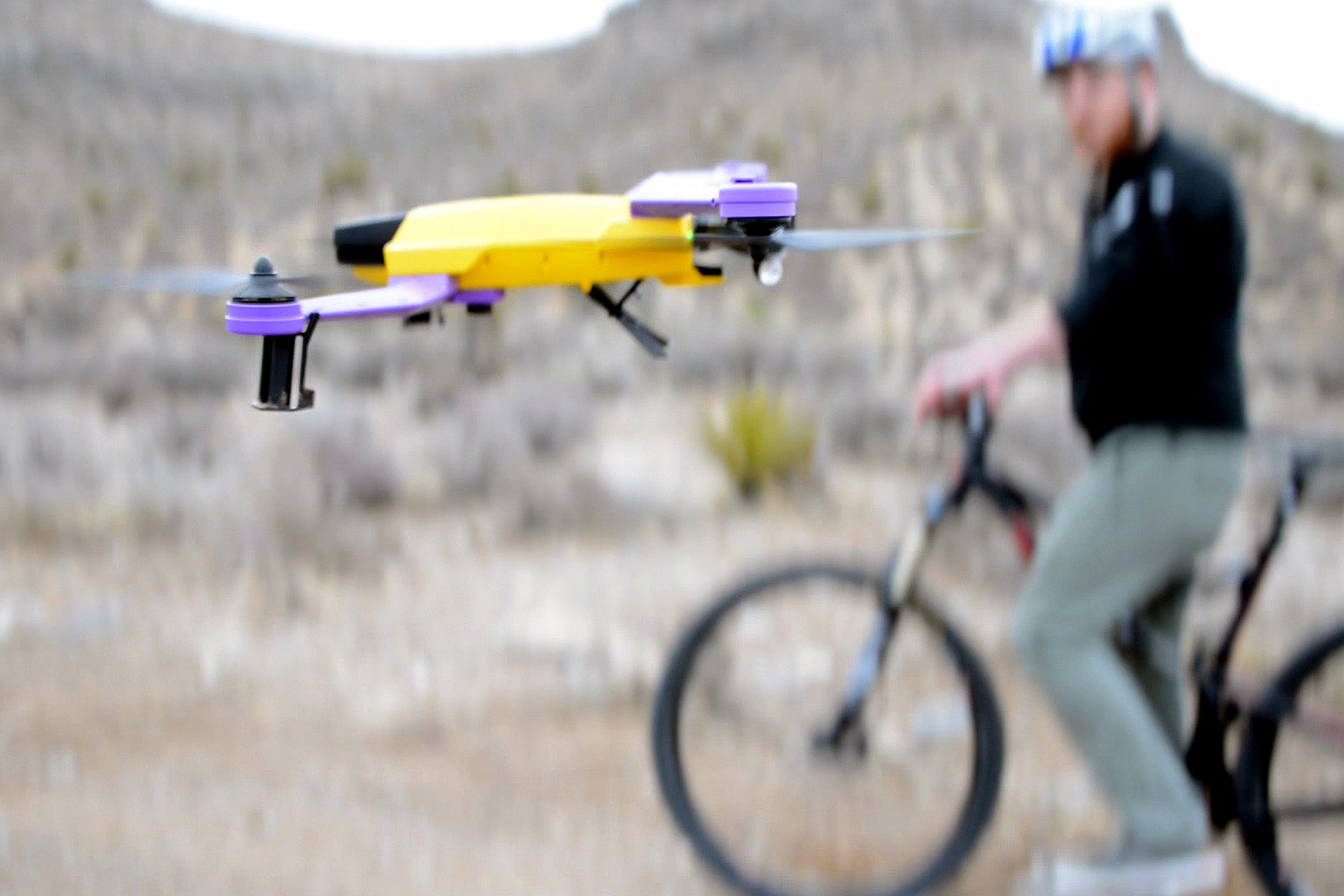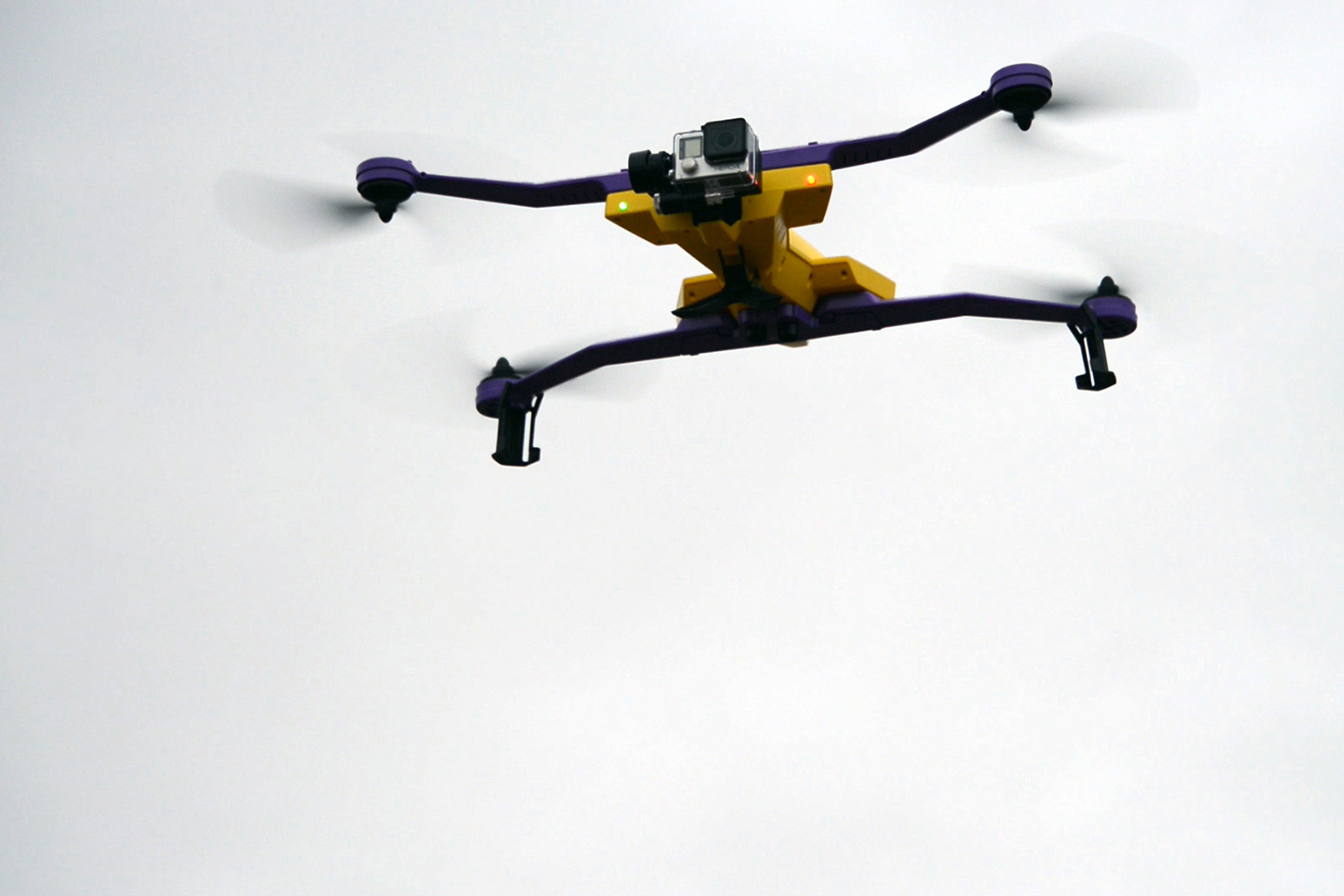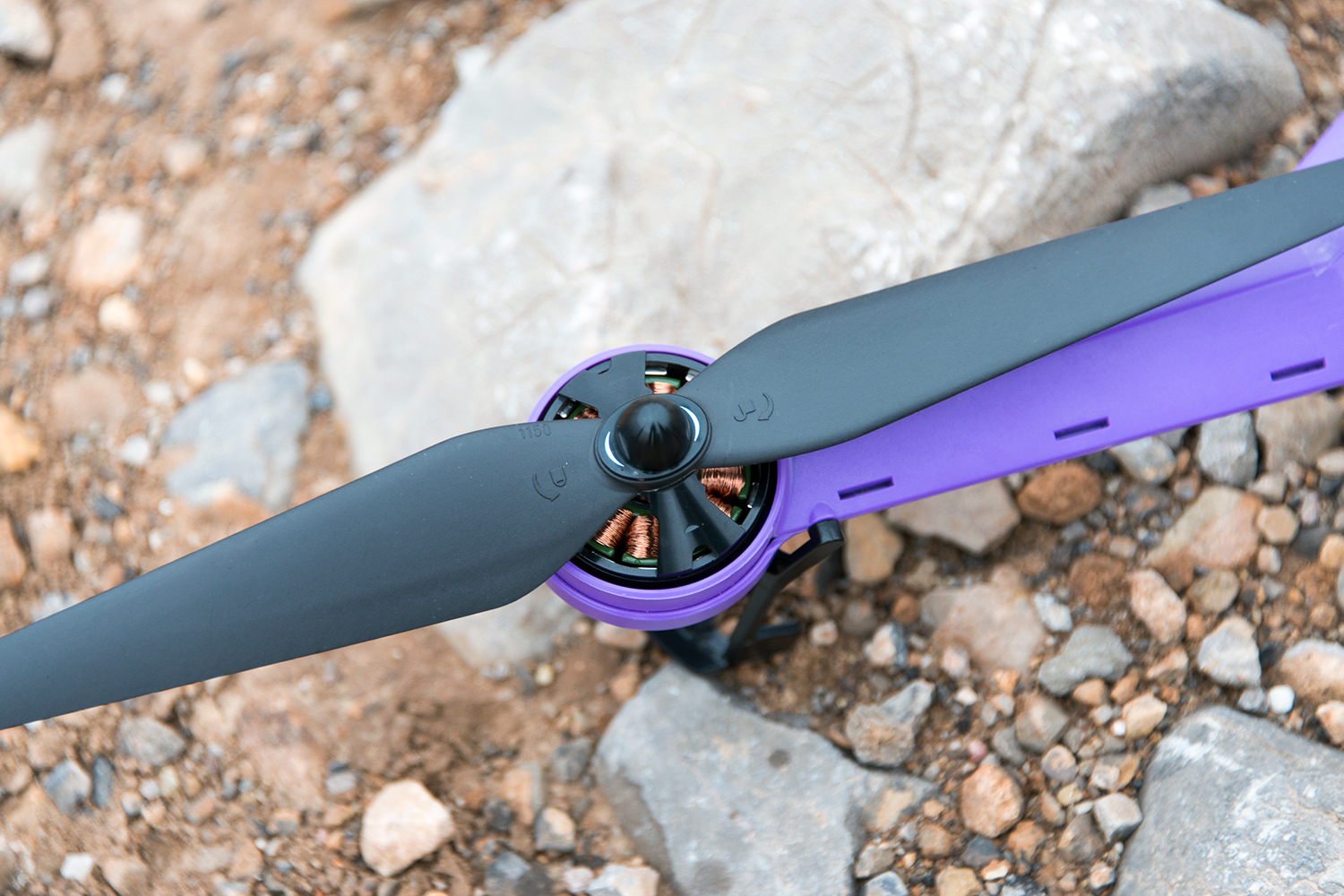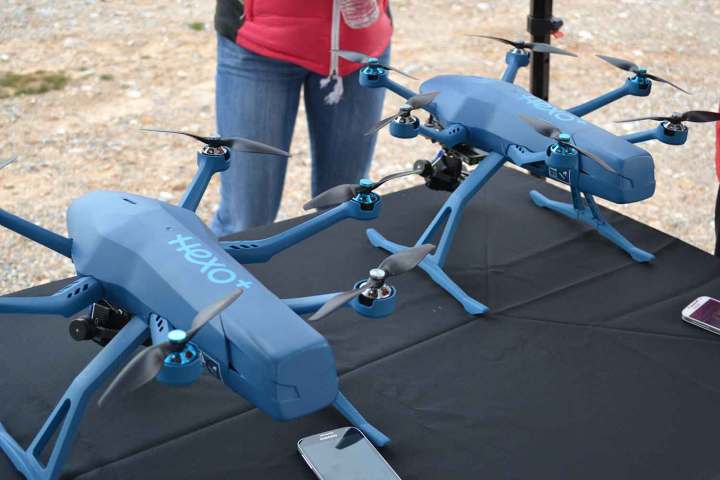
Alongside all the well-established companies like DJI, Parrot, and Yuneec all vying for the supreme designation of being the go-to brand, we came across a litany of other companies looking to pounce on the industry’s recent surge in popularity. While some offered near spitting images of the aforementioned Big Three, many rolled into Las Vegas with new and improved approaches to the existing tech, with some debuting a few wholly unique visions. Many may have scoffed at the lasting appeal of a glorified RC helicopter for adults, but after a week spent consumed by the constant whir of aircraft propellers, it’s clear drones are here to stay.
To help give you a better idea of what to expect from the world of UAVs in the coming years, we took to the task of gathering as much info as we could on all the under-the-radar drone companies at CES 2016. While it’s reasonable the list isn’t absolutely comprehensive, the following companies are, without a doubt, likely to have the best chance to break out in 2016.
Hexo
French startup Hexo took to the CES 2016 showroom floor this year armed with its fully autonomous drone, dubbed the Hexo+. Void entirely of a full-fledged controller, pilots fly the Hexo+ by executing pre-determined movements via a companion smartphone application. A few simple clicks of the application allow pilots to quickly change the orientation and flight pattern of the drone, granting some amount of control over where it flies. For instance, selecting “360 — far away” sends the Hexo+ in perfect 360-degree circles around the pilot while also consistently keeping the camera focused solely on them.
Even landing the craft is done with just the click of a button, making this one of the most user-friendly drones we’ve ever seen. Hexo may be under the radar at the moment but after a wildly successful Kickstarter campaign and impressive CES 2016 showing, it won’t be long before more people recognize the name.
Take a look at our CES 2016 hands-on with the Hexo+.Autel Robotics
On the second-to-last day of the show, a rather large group of people began congregating near Autel Robotics‘ setup and frantically began putting on a bright red, Autel shirt. Curious as to what might be happening (perhaps it was preparing for some celebrity demonstration of a drone or unveiling some outrageous quadcopter never before conceived), we mosied over and politely asked someone what the fuss was all about. They’re about to give away a couple free drones, but you have to watch a seven-minute video and wear this red shirt first, the stranger replied. Hell, that’s one way to spread the word about your company; free drones!
Aside from the fanfare (we opted not to stick around), Autel’s X-Star drone lineup was the star of its show. Similar in aesthetic design to DJI’s Phantom lineup, each member of the X-Star line (the standard X-Star, the X-Star Go, and X-Star Premium) packed its own unique set of features and benefits. For instance, both the standard and premium models boast 4K cameras, live 720p camera view while in flight, and a flight time of up to 25 minutes (this last one is also native to the Go version). None are currently available, so exact price points are unknown at this time.
Shanghai Nine Eagles
Touting itself as a purveyor of the world’s smallest and lightest UAV with a 3-axis gimbal and high-definition camera, Shanghai Nine Eagles Electronic Technology Company spent the week showcasing its Mola line of drones. Crafted specifically for capturing film and photos, the Mola’s calling card is supposedly its simple flight controls, intelligent safety systems, and lightweight build. Its bigger model Tourist 1 looks fairly similar to DJI’s Inspire line, however, its rotors sit slightly higher making it look less like a bionic spider and more like a traditional quadcopter.
Where Mola stands out from the crowd concerns its Mola X 1.0 which features a design never before seen among the drone community. Though technically a quadcopter, the Mola X 1.0 looks like two twin-spinning fans placed perpendicular to each other. We aren’t sure how it flies but it’s refreshing to see Shanghai Nine Eagles producing something different from everyone else.
Eken
As evidenced by nearly every UAV company on display at CES 2016, the concept of using drones for filming is absolutely booming. Yet another company throwing its hat into the increasingly crowded ring is Eken. A China-based drone company which brought its FlyHawk line of drones to Vegas to display why it believes drone enthusiasts should pay attention to its products. Featuring a 3-axis stabilized gimbal, a patented easy-to-use quick battery replacement design, and innovative auto-pilot system, the FlyHawk is an entry-level drone even professionals can appreciate.
Eken offers the FlyHawk with either a 1080p or 2.7K onboard camera, which puts it slightly behind much of its competition who offer included 4K cameras. Can Eken hang with the opposition with an inferior camera? Only time will tell.
Wingsland
When every other company is manufacturing nearly identical products, there’s something to be said about a company offering a drone that’s pleasing on the eyes. From the very first time we caught sight of them, Wingsland‘s lineup of futuristic-looking drones appeared to have good looks in spades. Adorned primarily in vibrant orange, each Wingsland model (whether it be the M5, the Echo, etc.) is an eye-catching display of stunning design.
Technically speaking, Wingsland outfits its impressive lineup with a skill set that might make other companies put their tail between their legs. For starters, pilots have the option of using either a compatible controller, a specially-designed wristwatch controller, or a smartphone application. While using the app specifically, operators can choose between different settings for the onboard camera, check in on the drone’s relative altitude and voltage, and even edit any footage captured. We liked the look of Wingsland’s drone force, no doubt, but they also look fun as hell to pilot.
Next page: Five more up-and-coming drone companies…
Miniwing
Established in 2015, Miniwing burst onto the CES 2016 showroom floor touting its “camera with wings.” Though it’s just a matter of wording, it appears Miniwing is yet another drone company completely embracing the drone-for-filming-and-photography trend. Like so many others, its product boasts advanced imaging, a safe and efficient propulsion system, stable flight control, and an intuitive controller. Similar in design to DJI’s Phantom, Miniwing’s quadcopter simply represents a variety in the industry without particularly pushing the envelope in terms of innovative tech.
Eulerspace

First and foremost, drone companies look for ways to make their aircraft safe for anyone to use. Inherently, flying a drone carries with it a level of danger that can easily put people at risk of serious injury. Understanding this, Eulerspace Technologies focused a keen eye on not only creating a drone that’s a blast to pilot but one that sets an industry standard for safety. With propellers that stop automatically after detecting collisions, built-in propeller bumpers, and a reliable “Return Home” function, Eulerspace’s TT quadcopter is as safe as they come.
Keeping with its trend of manufacturing the most user-friendly drone on the market, Eulerspace offers two incredibly easy ways for users to pilot the TT. For those who prefer a physical controller, the company offers a small, compatible joystick controller, and for those privy to using their smartphone, a compatible application transforms a phone into an easy-to-use controller. Last, but certainly not least, its onboard 14-megapixel camera gives pilots control over capturing stunning photography and video. It’s not the nicest onboard camera we saw this year at CES, but it’s a worthwhile addition to an already impressive little copter.
Thunder Tiger Robotix
The Taiwan-based Thunder Tiger Robotix (what a name, right?) took to CES 2016 with an array of drones, robots, and deep sea, remote-controlled vehicles. Concerning its drone lineup, TTRobotix brought with it the AeroMaster, Nighthawk, and FishingMaster quadcopters, each boasting a slightly different feature-set the company hopes helps set them apart from the competition. With features like a quick release mechanism for swapping out gimbals, the option to capture thermal images, the capability to hang various items like bait or life jackets, and CCD camera functionality, TTRobotix’s selection is refreshingly varied.
Whereas most companies have adjusted their approach to drone technology to assist amateur and pro filmmakers and photographers, TTRobotix has taken the concept a step further, granting extra flexibility for even hunters or fishermen. A quadcopter is a quadcopter is a quadcopter, sure, but TTRobotix’s approach to crafting an eclectic mix of drones shows it understands what’s necessary to survive in this increasingly competitive space.
Ehang
Manufacturers of the uber-popular and incredibly ridiculous “Drone Taxi,” the China-based UAV company Ehang was also on hand at CES 2016 with a fleet of normally-sized quadcopters. Dubbed the GhostDrone 2.0, Ehang calls its premium aircraft lineup “the drone for everyone.” But do they really possess the necessary bells and whistles to go against DJI or Parrot? Obviously, a few minutes spent fiddling with trade show models doesn’t allow us to make an educated judgment, but what we saw looked interesting, to say the least.
The fact Ehang calls it the drone for everyone shouldn’t be taken as a cheap nickname or ploy to get people to notice; it’s actually crafted an ecosystem designed for pilots of any skill level. Utilizing an advanced UAV system and easy-to-use smartphone application, each version of the Ghost Drone — whether Standard 2.0 or 2.0 Aerial — boasts a very minimal learning curve right out of the box. With gesture-based Avatar Tilt control, the ability to input waypoints for the drone to follow, and assisted takeoff and landing capabilities, even beginners will find it easy to fly the Ghost.
Perhaps its greatest feature is the ability for pilots to strap on a set of VR goggles for a first-person view of what the Ghost sees while in flight. Used in conjunction with the Avatar Tilt function, FPV flight is an immersive experience not typically seen in other drones.
ProDrone
While some companies nestled themselves quietly in the South Hall of the Las Vegas Convention Center, the UAV company ProDrone went all out with its presentation. For anyone walking around the unmanned systems area of the showroom floor, it was impossible to miss its setup — or British-accented emcee, for that matter. On display was the company’s innovative drone system, dubbed the Byrd. What particularly sets the Byrd apart from its competition concerns its ability to carry heavy payloads, its extended battery life, and onboard 4K camera.
While the sum of those features makes the Byrd an attractive quadcopter, its most intriguing innovation no doubt lies with its superior portability. Capable of being folded up to roughly the size of an iPad, transportation of the drone takes little more than a roomy backpack or bag — much better than toting around a massive, hard-edged case. With the Standard version priced at $949, it isn’t the cheapest drone on the market but its included extras and industry-best flexibility appear to make it worth every penny.
Next page: Three more up-and-coming drone companies…
Hubsan
From fierce-looking quadcopters to the tiniest drones on the market, Hubsan Intelligent showed out at CES 2016 with an impressively diverse array of unmanned aircraft. Whether it be the Hubsan X4 Pro which excels at capturing aerial photography and video or the GPS Spy Hawk which boasts a clean, fixed-wing style, Hubsan has a drone for literally everyone. What makes the lineup so appealing is the fact nearly every single offering (except one) comes with some form of physical controller, allowing even those without a smartphone the ability to dive into the world of drones. After taking a stroll through Hubsan’s large exhibit booth one thing was abundantly clear, size does matter to the China-based company.
Zero Tech
Founded way back in 2007, Zero Tech took Las Vegas’ CES 2016 to continue its goal of becoming the world’s “top provider” of intelligent drone products and solutions. In addition to its various, high-quality camera gimbals, Zero Tech’s most impressive product was the HighOne RTF quadcopter. Designed for use primarily among professional photographers and filmmakers, the HighOne weights just under nine pounds (without a payload attached) and features a safety parachute in the event of a stalled engine. Considering the drone will cost upwards of a few thousand dollars once on the market, the safety parachute is a welcome addition.
Aside from the Hollywood-level HighOne, Zero Tech also displayed its various aerial pan tilt system gimbals, which showed off compatibility with a wide range of cameras (mostly DSLRs). Considering the product line and quadcopter tech is mainly geared towards capturing stunning aerial photography and video, Zero Tech’s consumer base figures to not be quite as far-reaching as many of the other companies on display at CES 2016.
AirDog
While AirDog — the self-proclaimed Auto-Follow Drone for Adventure Sports — shares some functionality to Hexo’s Hexo+ drone, it does possess one wildly different caveat; pilots need not fumble with a smartphone application and instead fly the drone with a smart tracking device called the AirLeash. Simply strapping the AirLeash to a user’s wrist gives them everything they need to launch the drone, change its flight pattern, or land the craft. Moreover, the AirDog also has the ability of getting wet, still tracks a user if they are submerged in water, and even automatically lands should connection with the AirLeash go offline.
With nothing more than a couple button presses to initially get the craft into the air, minimal (to no) drone experience is necessary to master the AirDog. Packed with a bevy of sensors and stabilizers, users can literally zig-zag back and forth on a mountain bike and the drone will expertly keep an attached GoPro fixated squarely on them. Again, all this is done with no continued control by the pilot.
If a change of camera angle is desired, users simply select a new position directly from the attached AirLeash and within a matter of seconds, the AirDog readjusts its placement and continues to film. So while it shares its autonomous brain with the Hexo+, the AirDog drone is a welcome variation.
Take a look at our CES 2016 hands-on with the AirDog.Editors' Recommendations
- Forget waiting! Here’s all the CES 2022 tech you can buy right now
- DJI shows off volcano video shot with its new FPV drone
- DJI drone contest invites your best impossible shot
- How to watch DJI unveil its new FPV drone live online today
- 5G laptops finally made their big splash at CES 2020. But will it matter?

